Trending Post : Books Made Into Movies


21 Good Picture Books to Teach Problem and Solution
This post may contain affiliate links.
Read mentor text picture books to teach problem and solution text structure. Understanding the problem and solution story structures improves comprehension and helps readers make informed predictions. (As well as helping children see the creative possibilities in problem-solving!)
Of course, almost all stories have a problem and a solution –with the exception of a concept book. So really, you can search out problem and solution examples in any book, whether it’s fiction or nonfiction.
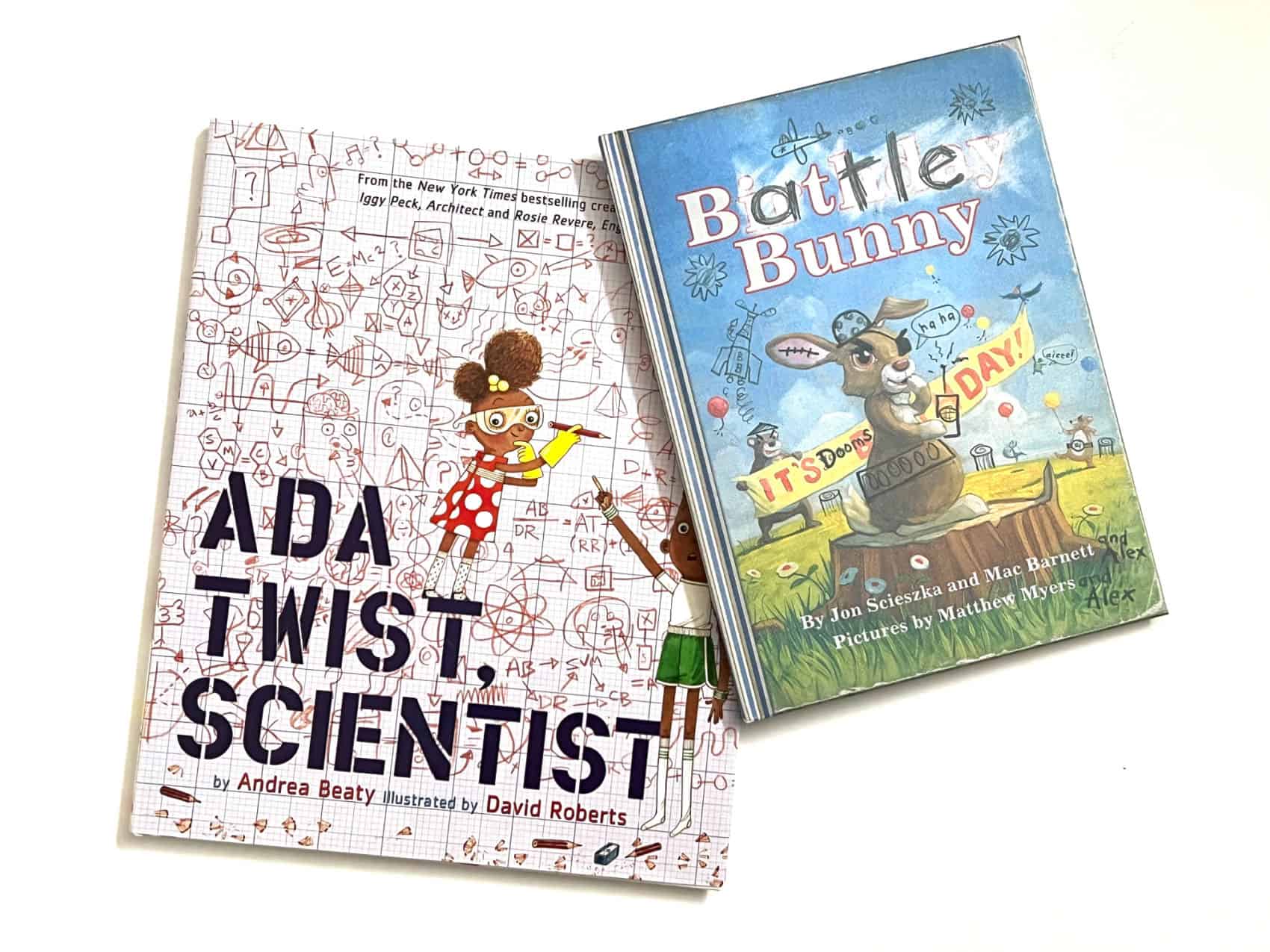
When children learn what to expect in a problem and solution story, not only will they be able to predict solutions, but they will also be better able to write their own problem-solution stories. I started teaching this early to my young kids, well before they were school-age because we want our children to become problem solvers. That is an important life skill!
While many picture books model the narrative story structure of problem and solution, these are my favorites to use with kids both at home and in the classroom.
PRINTABLE LIST

Mentor Text Picture Books to Teach Problem and Solution
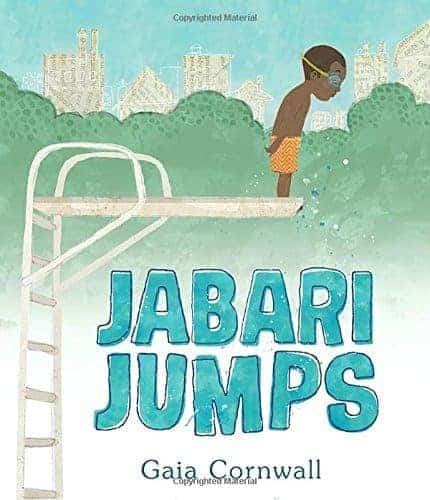
Problem Solved! by Jan Thomas When Rabbit sees his messy room, he learns that he has HIS OWN PROBLEM SOLVING PORCUPINE! Which seems good at first. But, it turns into a disaster. Because to clean up the blocks, the porcupine flushes them down the toilet. And to clean up his shirts, he feeds them to the goldfish. How can Rabbit get rid of his not-very-helpful problem-solving porcupine?
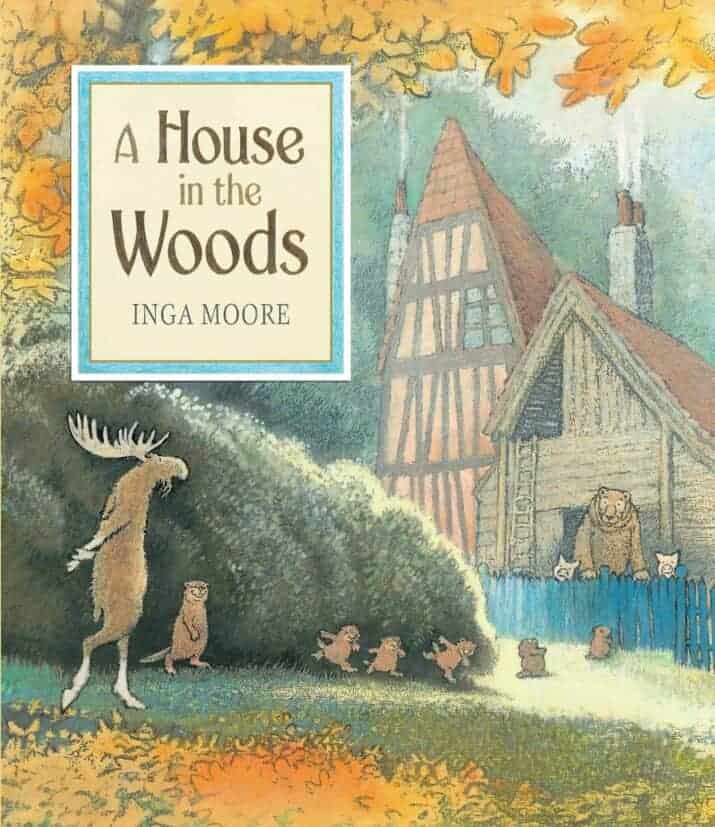
A House in the Woods by Inga Moore Little Pig’s den becomes filled with friends, but once Moose arrives, the den collapses. Oh, no! Problem. What will they do to find a solution? Together, the animals build a new house in the woods big enough to fit all the friends.
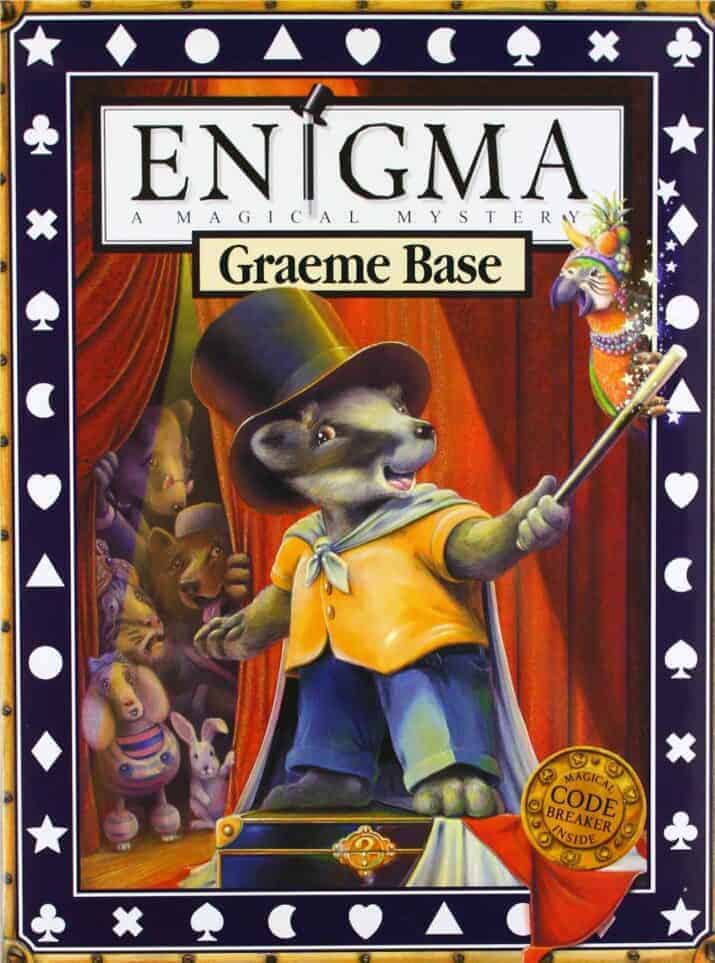
Enigma by Graeme Base Bertie needs to find the missing magic show props that have disappeared from his grandpa’s retirement home. Each performer tells him what’s missing. Readers help find the items in the illustrations so that Bertie can find the culprit. Like all his books, Base excels in his detailed illustrations.
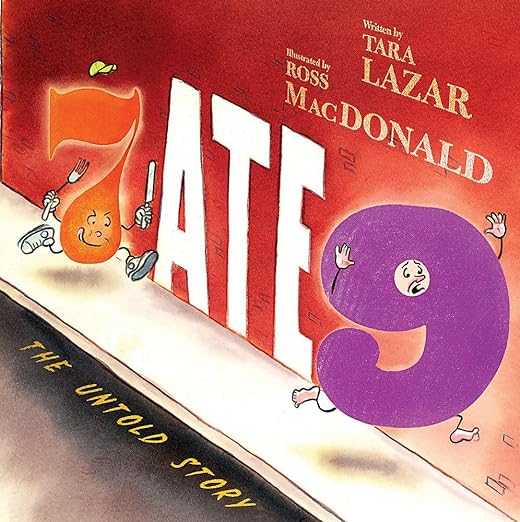
7 Ate 9: The Untold Story by Tara Lazar, illustrated by Ross MacDonald 6 bangs on Private I’s door for help! Because there’s a rumor that 7 is eating other numbers because apparently, 7 ate 9. YIKES! But did 7 really eat 9? Pitch perfect tongue-in-cheek number and word humor will crack you up throughout this suspenseful, funny problem and solution story. (Also on: Best Picture Book Mysteries .)
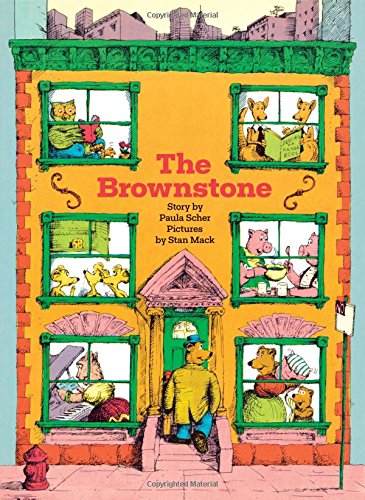
The Brownstone by Paula Scher, illustrated by Stan Mack The Bear family is ready for hibernation but first, they need to figure out what to do about the noise problem. Their solution? All the animals work together to shift apartments so that everyone finds the best apartment for their specific needs. You’ll love the message and illustrations.
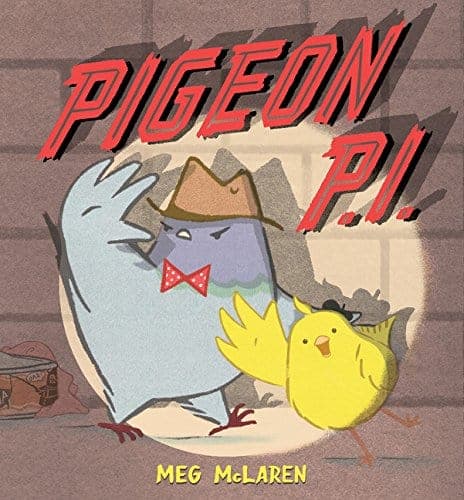
Pigeon P.I. by Meg McLaren What a unique and delightful mystery story! A little canary asks Pigeon P.I. (private investigator) to help her find her missing friends. Then the canary goes missing, too. It’s up to Pigeon to solve the missing bird mystery. The author writes in the style of the old detective shows– punchy with short sentences. The illustrator captures the details, giving kids clues to notice as they read.

One Word from Sophia by Jim Averbeck, illustrated by Yasmeen Ismail This picture book is a great way to teach kids summarizing and word choice as well as a problem-solution text structure! Sophia really wants a pet giraffe for her birthday. As a result, she sets out to convince her family, starting with her mother, a judge. However, Mother says that Sophia’s argument is too verbose. As a result, Sophie tries fewer words with Father. But he says her presentation is too effusive. Sophia continues with each family member until she reaches her last-ditch attempt and says the one word that works: PLEASE.
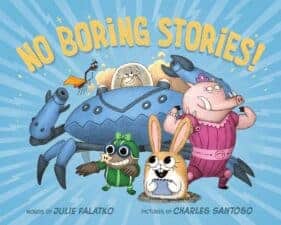
No Boring Stories! by Julie Falatko, illustrated by Charles Santoso When a cute little bunny tries to join a group of animal storytellers (mole, weevil, crab, and babirusa), the group doesn’t want to add her to their brainstorming group. As the animals continue their story plans with relatable characters, an inciting incident, rising action, climax, and…. Only the group gets stuck with the ending. That’s when bunny reveals that she likes making up weird (not boring) stories. The group realizes that the bunny has the perfect ending idea. Reluctantly, they agree that she can be part of the group. At least until a “ bunch of adorable frogs and puppies show up next week… ” This book shows plotting as well as the creative strengths of writers working together.
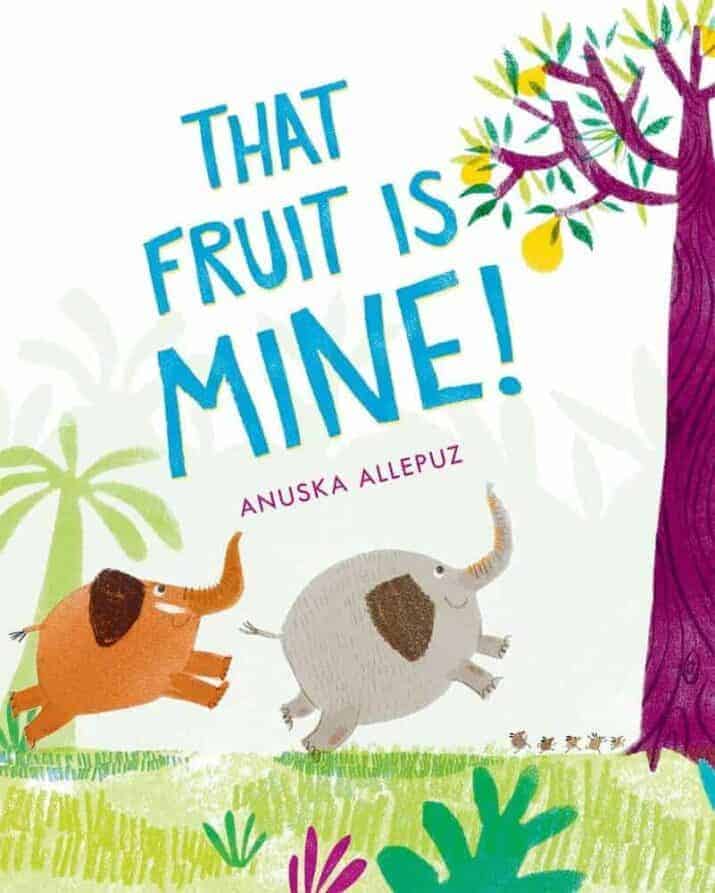
That Fruit Is Mine! by Anuska Allepuz This is a charming problem and solution story about learning to share and the power of working together. You’ll crack up watching the elephants’ many failed attempts to get delicious-looking fruit off a tree while simultaneously watching a tiny group of mice work together to get the yummy fruit, too. The problem is getting the fruit but only one animal group succeeds in a solution. Who do you think it will be? Great for prediction! (Also on: Picture Books That Teach Cooperation .)
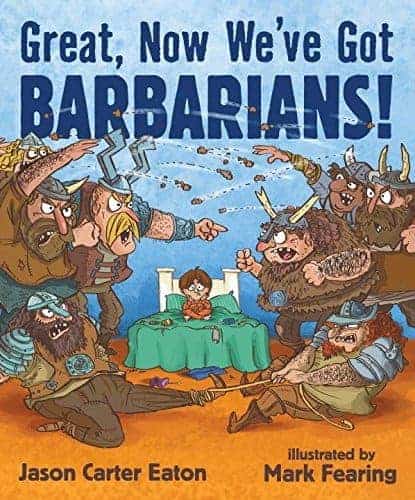
Great, Now We’ve Got Barbarians! by Jason Carter Eaton, illustrated by Mark Fearing Mom says that if the boy doesn’t clean his room, he’ll get pests . . . which the boy thinks aren’t all that bad, right? However, things go downhill when barbarian “pests” start arriving. Because they eat everything, use his toys to clean out their ears, and steal blankets and pillows. So there is only one thing to do — CLEAN up his room. It’s a predictable but funny solution with the perfect forgot-to-clean-up twist at the end.
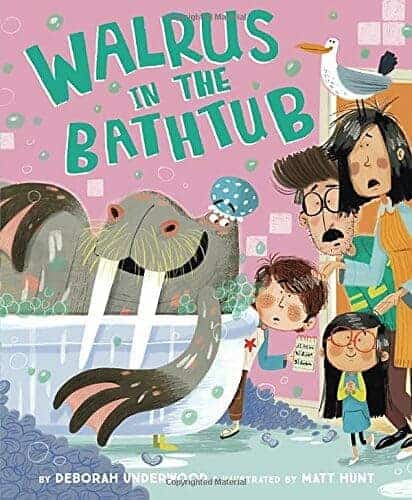
Walrus in the Bathtub by Deborah Underwood, illustrated by Matt Hunt The worst thing about this family’s new home is the walrus in the bathtub. And walrus songs are very, very loud. It’s a big problem. The family tries lots of clever things to get the walrus to leave the bathtub but with no success. So they decide to move. Again. That’s when the walrus shows them his list — “ How to Make Your New Family Feel Welcome ” — which, surprisingly, includes all the things that annoy the family. It turns out the walrus was just trying to be nice. As a result, the family stays with a few *new* rules. This story will make you want your own walrus in a bathtub.
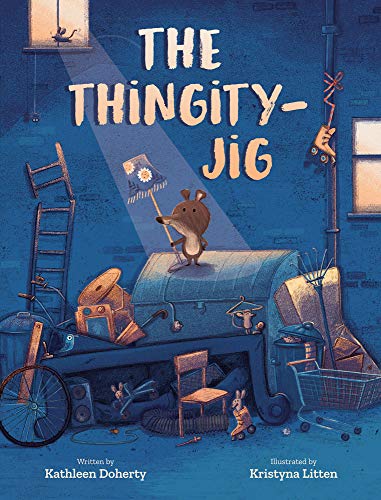
The Thingity-Jig by Kathleen Doherty, illustrated by Kristyna Litten Wordplay, problem-solving, and persistence! One day Bear finds a Thingity-Jig (aka. a couch), which he thinks is wonderful as a sit-on-it, jump-on-it thing. He asks his friends to help him carry it home but they’re too fast asleep, so Bear figures out some ideas to do it himself. He makes a Rolly-Rumpity! Which is a pack-it-up, heap-it-up, load-it-up thing. That isn’t enough to move the Thingit-Jig so Bear makes something else — a Lifty-Uppity. And then, a Pushy-Poppity. And at daybreak, he arrives back at home where his friends are waking up, with his special Thingity-Jig. Bingity…Bing…Boing…Bear falls asleep.
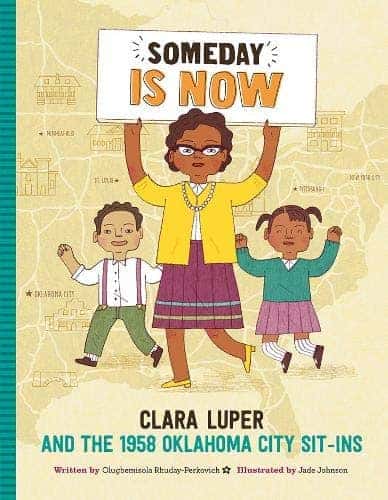
Someday is Now: Clara Luper and the 1958 Oklahoma City Sit-Ins by Olugbemisola Rhuday-Perkovich Clara advocated for justice and equality during a time when Black people weren’t permitted the same rights as white people. As a teacher, she inspired her students to believe that change was possible. Clara and her students went to the Katz drugstore and asked to be served — even though the store didn’t serve black people. She and her students returned day after day despite people yelling and throwing food. Eventually, the Katz store relented and started to serve people of all races. Clara and her students finally could enjoy a Coke and a burger without trouble.
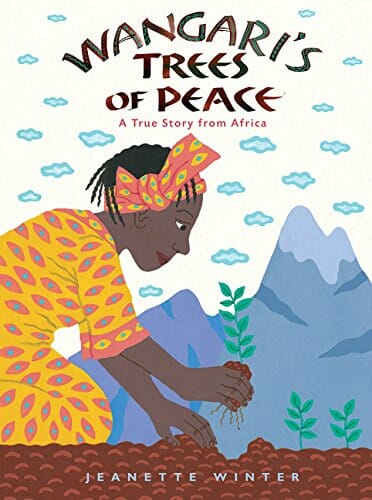
Wangari’s Trees of Peace by Jeannette Winter Based on the true story of Wangari Maathai, winner of the Nobel Peace Prize, read how Wangari helped her country of Kenya whose forests were all but destroyed. She started planting trees which started a movement motivating other people to plant trees as well. This is an example of how narrative nonfiction book can also teach the plot structure of problem and solution .
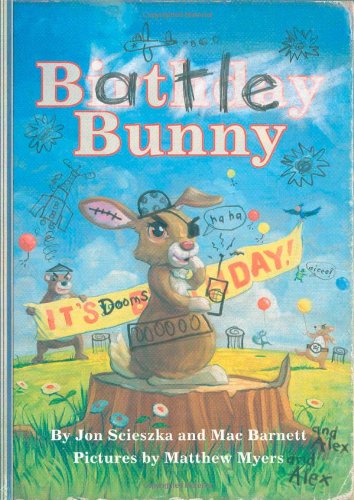
Battle Bunny by Jon Scieszka and Mac Barnett, illustrated by Matt Myers When Alex gets a silly, sappy picture book called Birthday Bunny, he picks up a pencil and turns it into something he’d like to read: Battle Bunny. An adorable rabbit’s journey through the forest becomes a secret mission to unleash an evil plan–a plan that only Alex can stop. Not only does this mentor text model problem and solution, but also voice and revision.
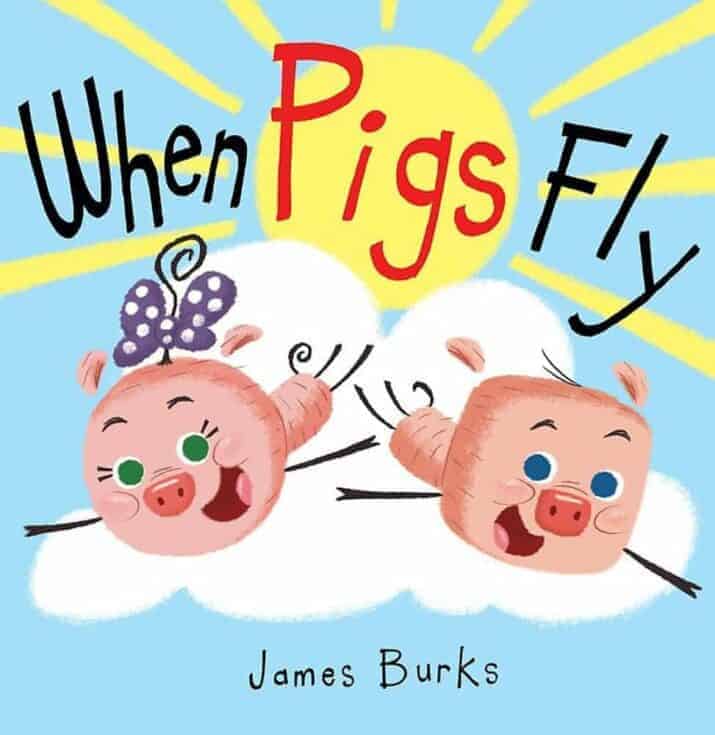
When Pigs Fly by James Burke One day, an exuberant pig declares that he will fly. His sister observes with disbelief and horror as one attempt after another fails. The brother pig is so disappointed that he decides to give up. That’s when his sister comes up with an idea — something he hasn’t tried before that will help her brother fly — a pretend airplane. The pigs’ expressive illustrations are absolutely perfect as is the message of persistence despite failure.
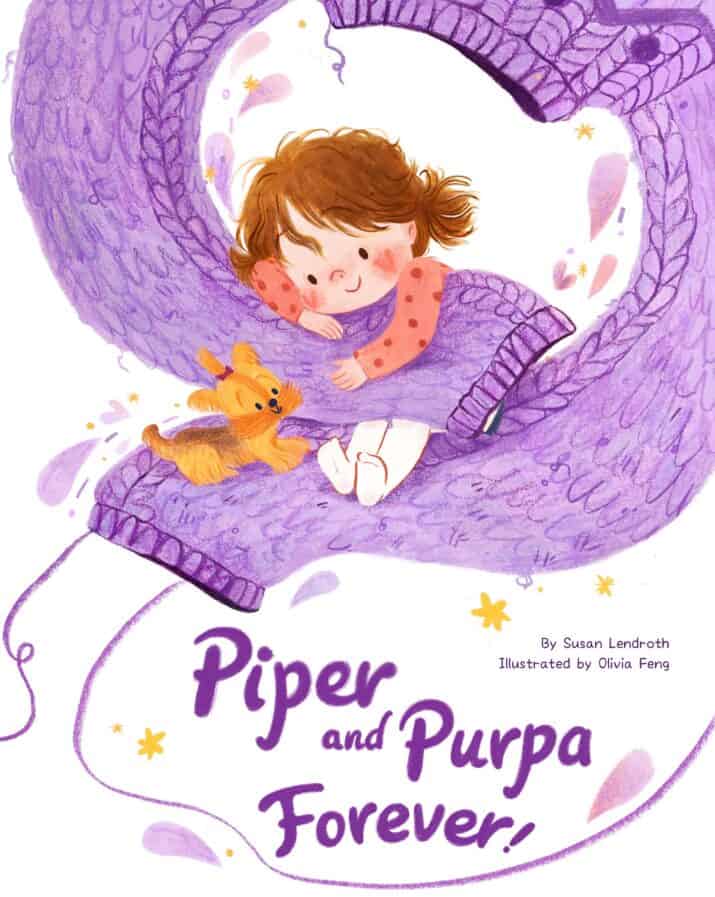
Piper and Purpa Forever! by Susan Lendroth, illustrated by Olivia Feng Most stories have a problem and a solution but this story is a great example showing a little girl’s ability to creatively problem solve with a beautiful solution to her problem. Piper loves her beloved purple sweater, Purpa, and is so sad when she grows out of it. Will she be able to keep her sweater somehow?
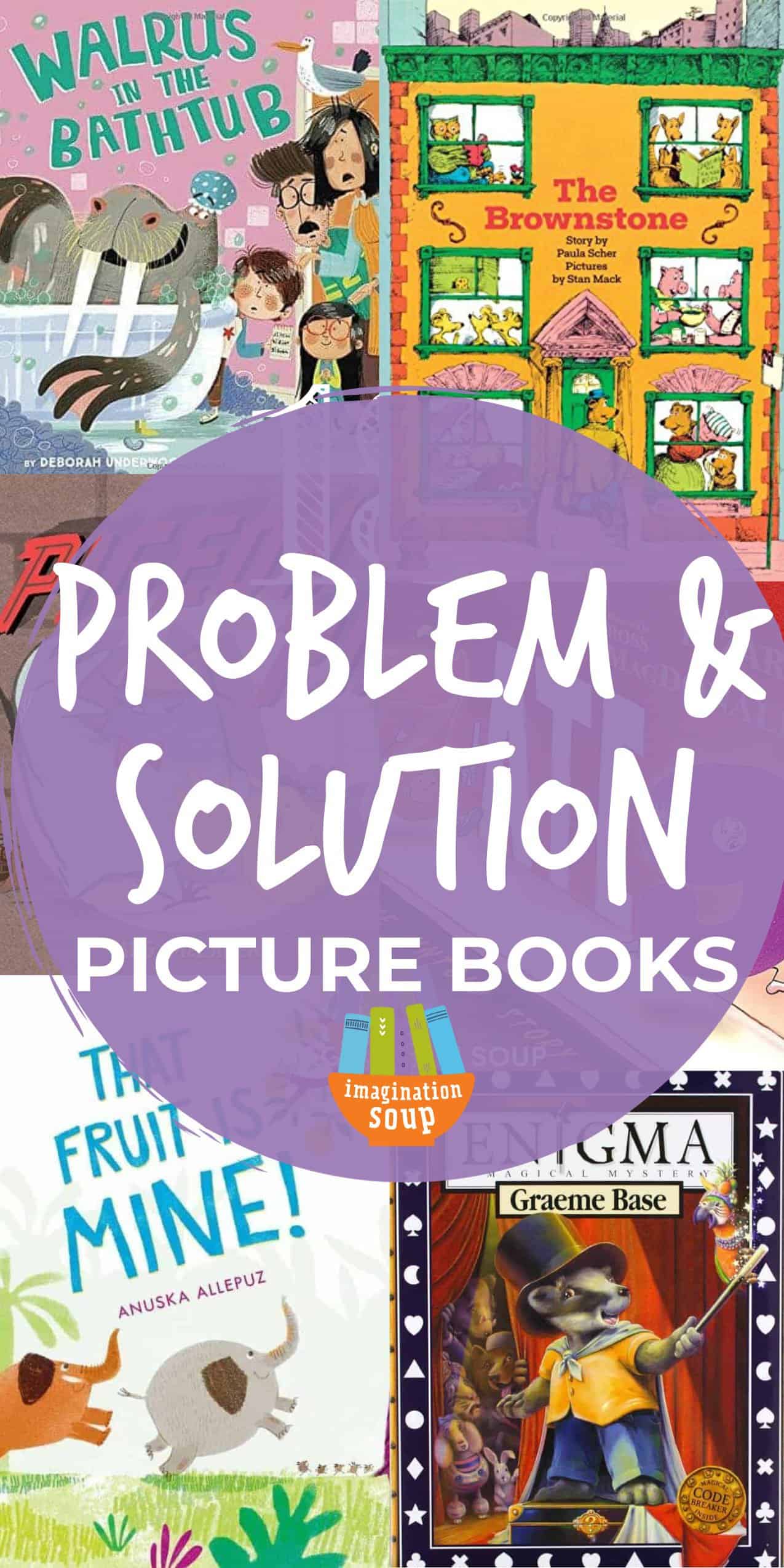
KEEP READING
Picture Books to Teach Perspective
Picture Books to Teach Vivid Description
Favorite Book Character Costumes
Melissa Taylor, MA, is the creator of Imagination Soup. She's a mother, former teacher & literacy trainer, and freelance education writer. She writes Imagination Soup and freelances for publications online and in print, including Penguin Random House's Brightly website, USA Today Health, Adobe Education, Colorado Parent, and Parenting. She is passionate about matching kids with books that they'll love.
Similar Posts

5 Ideas for Kids Who Hate to Read
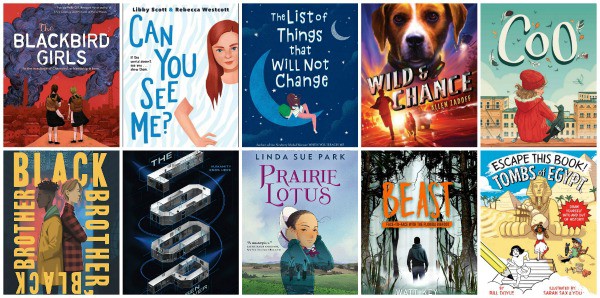
13 New Middle Grade Books, March and April 2020
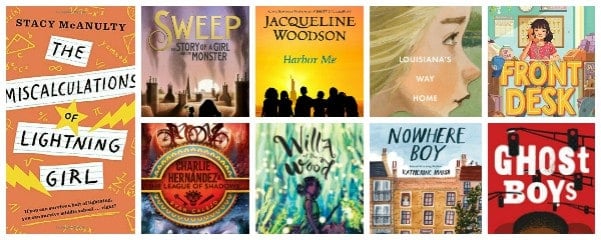
Best Middle Grade Chapter Books of 2018
Fed up with (school) lunch – the book.
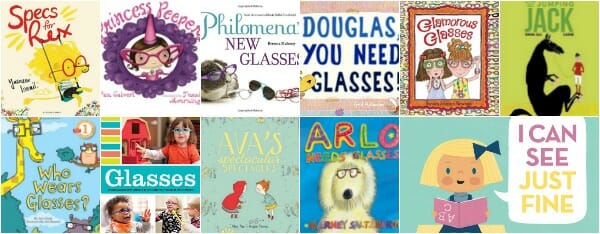
11 Picture Books About Kids with Glasses

Why I Don’t Want to Send Her (Back) To School
Leave a reply cancel reply.
Your email address will not be published. Required fields are marked *
My grandson loves cars, RC cars, sports cars but I don’t find any books about cars, racing, car features, etc. It would be a ‘hook’ to get him to read more. Any suggestions appreciated.
Here is a list of vehicle books. https://imaginationsoup.net/picture-books-vehicle-loving-kids/ . My recommendation for car books is Professor Wooford McPaw’s History of Cars by Elliot Kruszynski.
See free trial classes available for you:
Two ways to join a free trial in :.
Join a 60-minute session in a greenspace near you. Lessons are led by a certified Tinkergarten Leader.
On-demand lessons you can take anytime, anywhere. Play, pause, replay as often as you want.
It looks like we don’t have any in-person classes near yet. You can still try an on-demand Tinkergarten class for free, today!
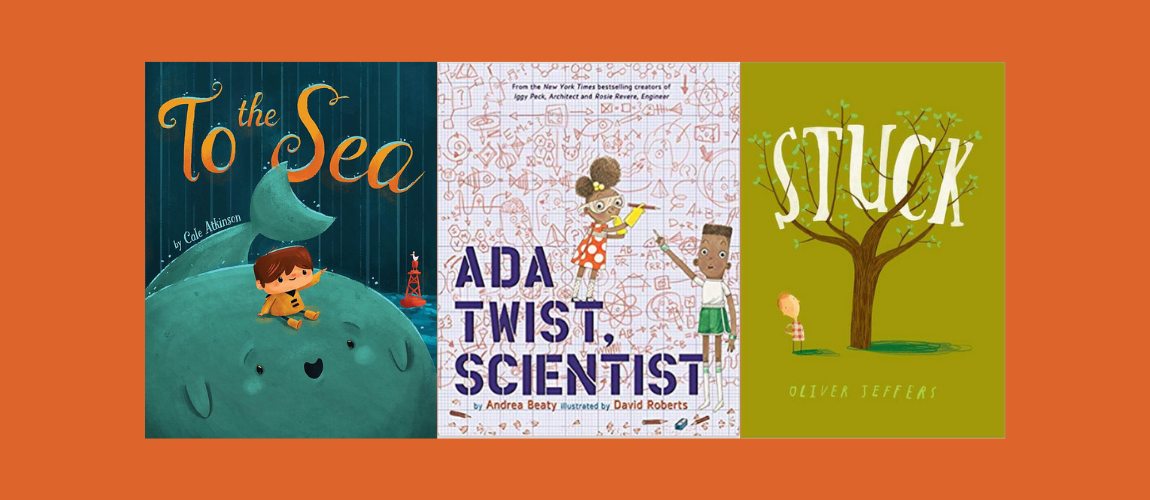
11 Books That Help Empower Little Kids to Solve Big Problems
by Meghan Fitzgerald
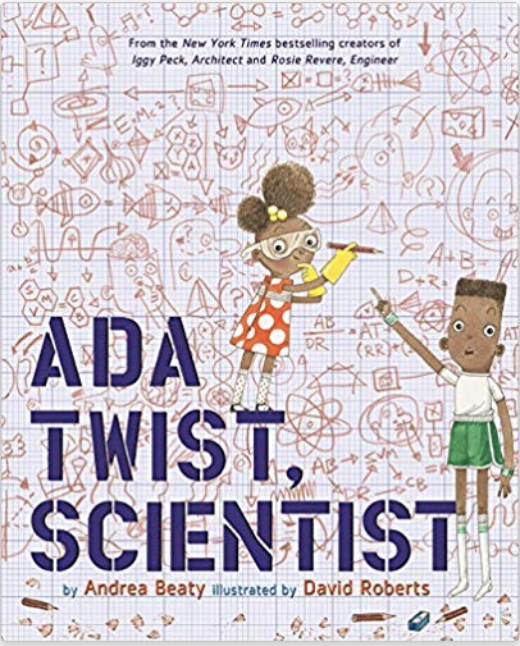
Ada Twist, Scientist by Andrea Beaty, illustrated by David Roberts
Mindset: There are problems to solve all around us.
The only thing better than Beatty’s masterful rhymes are her marvelous characters. In Ada Twist, Scientist , she nails the curiosity and inquiry that drives a true problem seeker and solver. Our kids love this one, and we hope it inspires them to take on the mindset that there are problems to solve all around us. As parents, we love how this book both acknowledges some of the lumpier parts that come along with supporting genuine problem solving in our kids and reminds us that it’s so worth it in the end.

Stuck by Oliver Jeffers,
Mindset: Problem solving can be fun (or at least quite silly).
Although we would never advocate throwing objects into trees, we cannot help but love this book. This whimsical tale shows a young boy, Floyd, as he attempts to solve an all too familiar problem—his kite is stuck in a tree! Floyd’s approach makes kids of all ages smirk and squeal with delight. When we read this, we enjoy acting amazed as the situation grows more and more outrageous. The book gets our kids talking, too. Even our youngest has ideas about why Floyd’s plan is not ideal and can share how she’d go about getting that kite un-stuck.

What Do You Do With a Problem? by Kobi Yamada, illustrated by Mae Besom
Mindset: I have the resources to solve problems.
Even though our goal is for problem solving to be joyful , sometimes real problems are daunting, especially to kids who may not yet realize that they have the capacity to solve them. This beautiful follow up to Yamada and Besom's What Do You Do with an Idea helps kids see a child really wrestle with a problem and gives everyone a way to talk about the opportunity available in every problem, even the ones that seem hard.
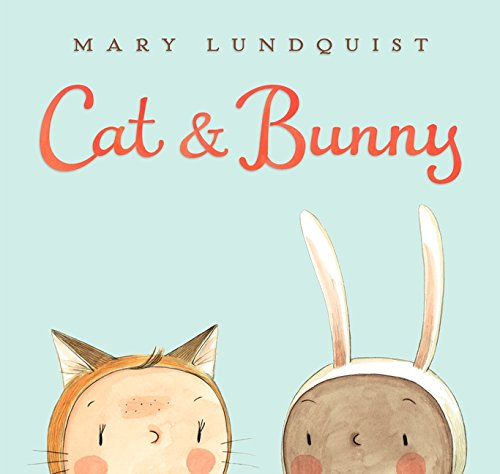
Cat and Bunny by Mary Lundquist
Mindset: Sometimes the key to solving a problem is teamwork and inclusion.
When a new friend asks to join Cat and Bunny’s tight-knit two-friend circle, Bunny says yes, but Cat’s not so sure. The changing dynamics of friendship can be tough for kids to navigate, and flexibility solves a lot of tricky issues.
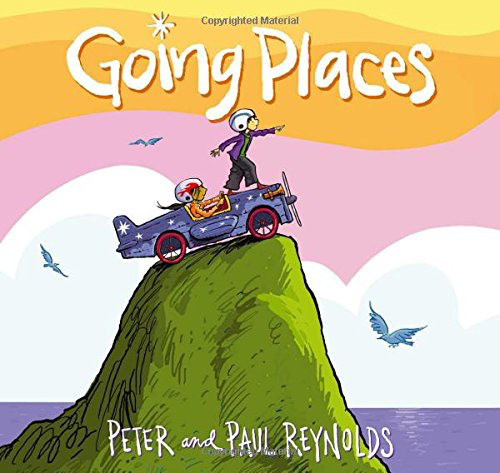
Going Places by Paul A. Reynolds, illustrated by Peter H. Reynolds
Mindset: Every problem has many different solutions.
Talk about thinking outside the box: Some kids love to follow directions. Others prefer to let their imaginations take them from challenge to solution. This book about a go-cart race that takes flight celebrates both sets of strategies.
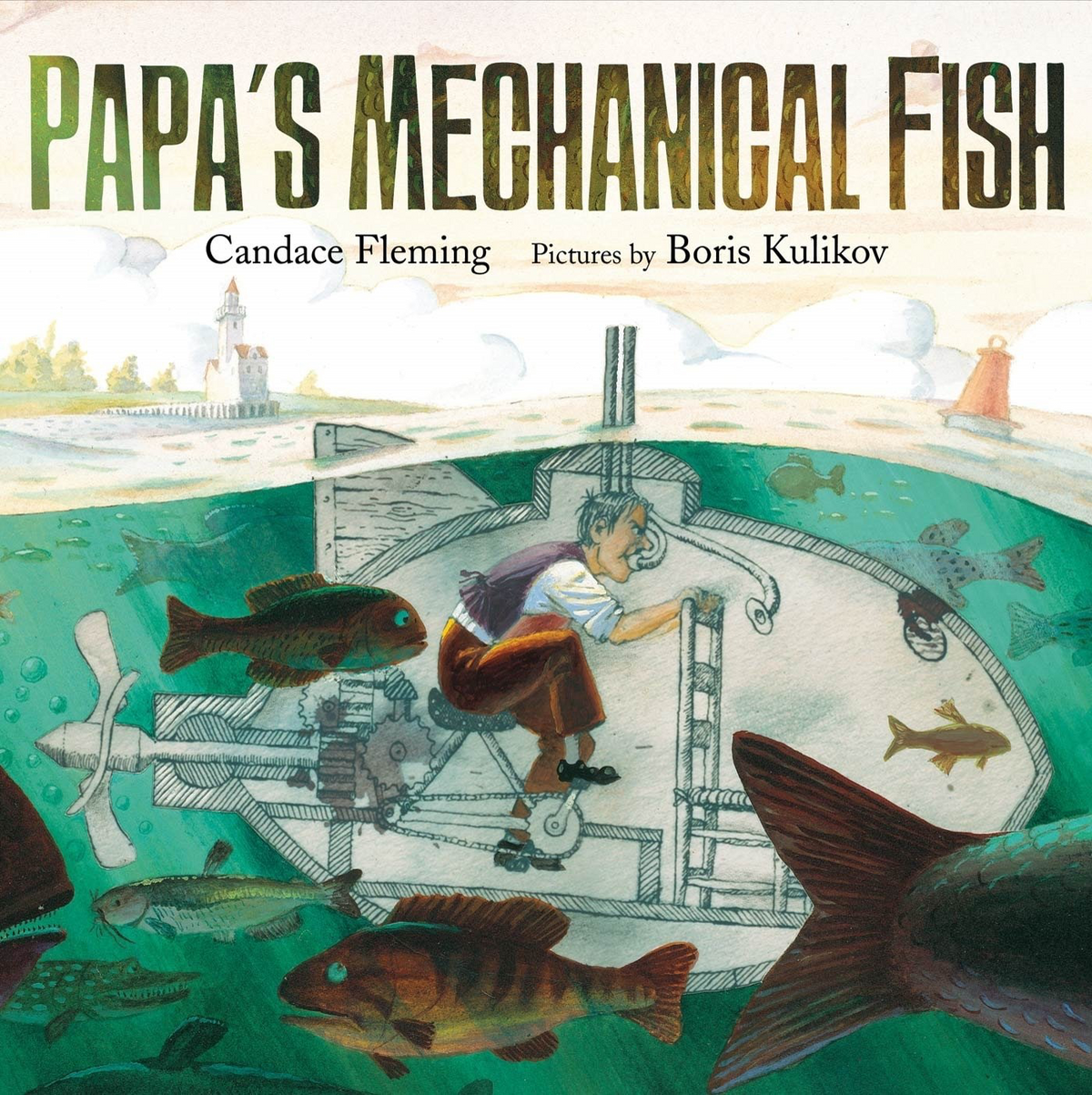
Papa’s Mechanical Fish by Candace Fleming, illustrated by Boris Kulikov
Mindset: Creative thinking is at the heart of problem solving.
We love that this fanciful story about a dad inspired by his child’s question (“have you ever wondered what it would be like to be a fish?”) to invent the submarine is based on a real-life inventor! This story gets school-aged kids’ imaginations whirring.
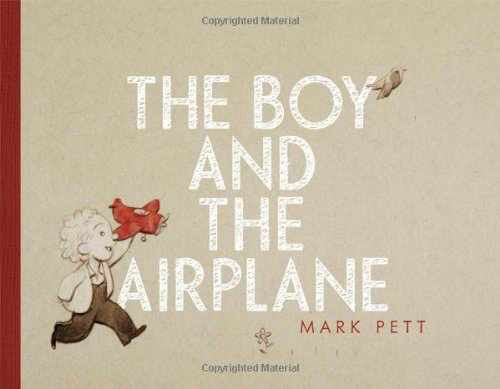
The Boy and the Airplane by Mark Pett
Mindset: Problem solving is joyful.
A little boy’s beloved toy airplane gets stuck on a roof. Through the beautiful illustrations in this wordless book, kids can work through the problem with the protagonist, and wonder how they’d go about solving it themselves.
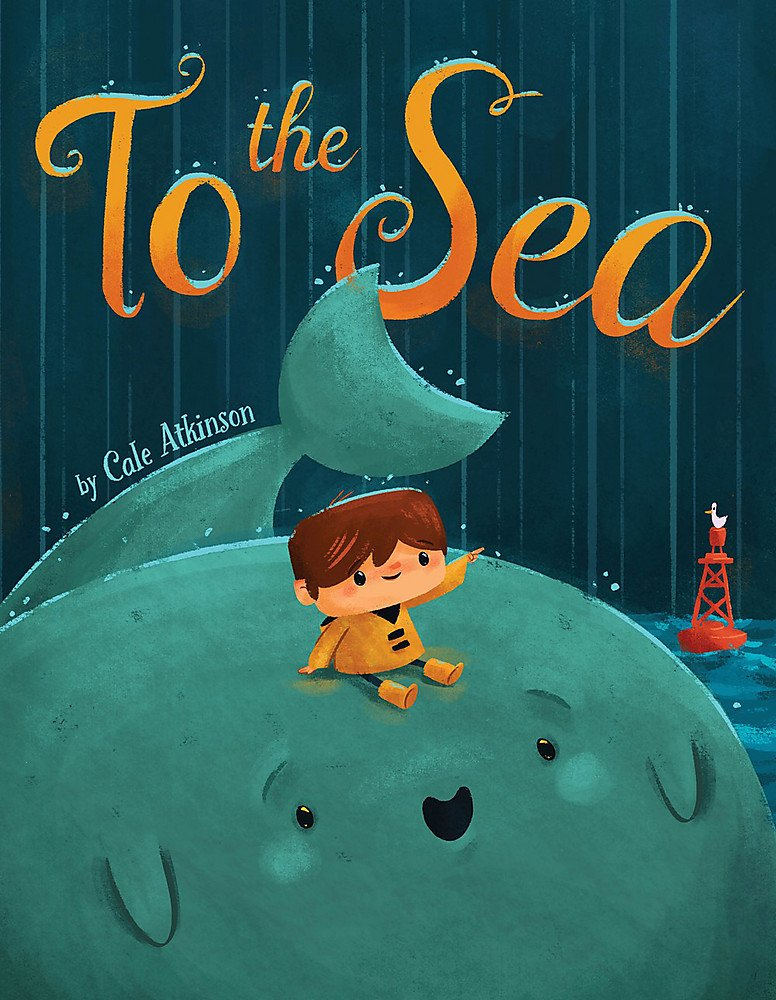
To the Sea by Cale Atkinson
Mindset: I have the capacity to solve any problem.
“I see you” are the magic words that kick off an epic adventure. When Tim meets a big blue whale no one else can see (no one else can see Tim, it seems to him sometimes), he’s tasked with helping his new friend find his way back to the sea. Kids will love discovering Tim’s process as he methodically sketches solutions for this massive problem. The winning strategy is a sweet surprise.
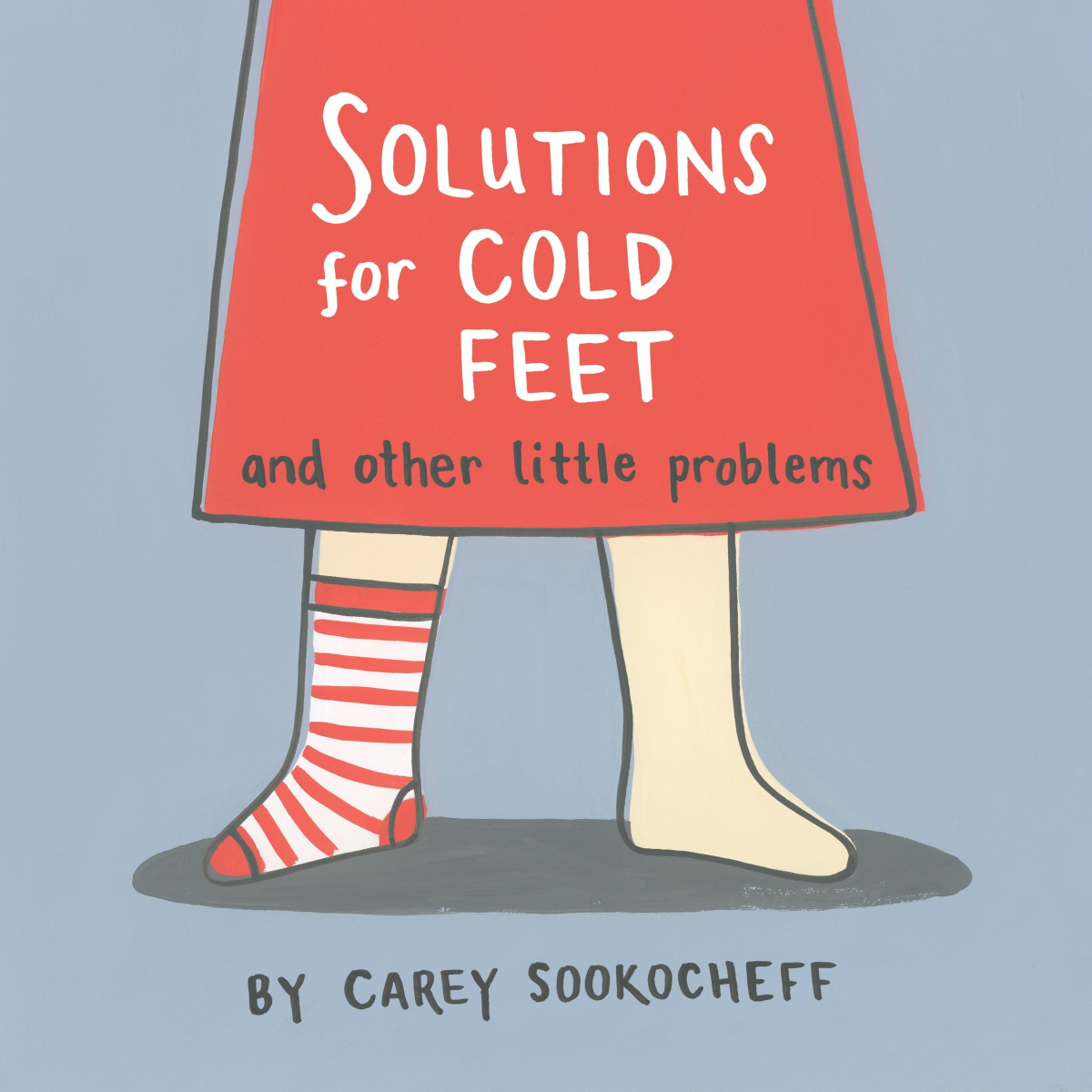
Solutions for Cold Feet (and Other Little Problems) by Carrie Sookocheff
Mindset: There are problems to solve everywhere.
Solutions abound for many of life’s little problems, as illustrated by a little girl and her dog. What if you’re caught in the rain? Faced with a boring day? Eating a fast-melting ice cream cone? Strategies range from clear to creative.

Beautiful Oops! by Barney Saltzberg
Mindset: I have experience that I can use to solve new problems.
Kids’ problem-solving comes with lots and lots of mistakes along the way, which is the most wonderful thing about the process. This interactive book celebrates mistakes as an opportunity for new discoveries. Read it together and then make “Beautiful Oops” a family catch-phrase for turning problems into launching pads for progress.

Journey by Aaron Becker
A girl yearning for adventure in this Caldecott Honor book makes it herself with a swipe of her red crayon. That single tool takes her on a magical trip and it’s what she uses to draw her way out of each dilemma.

Meghan Fitzgerald
Try a free activity.
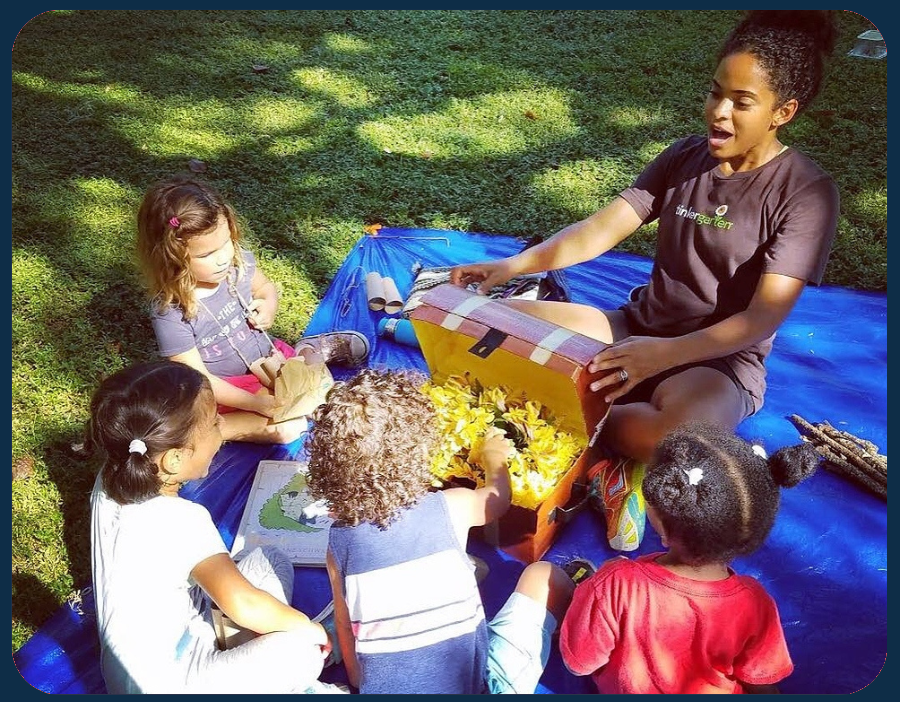
Tinkergarten Learning
Get kids playing, learning and thriving outside!
- Picture Book Brain

30 New and Notable Children’s Books About Problem Solving
- October 3, 2021
Looking for the best children’s books about problem solving? These children’s books on problem solving for elementary students are engaging for primary and upper elementary kids. Books with lesson plans and activities linked. Picture books about problem solving with strategies, fiction, nonfiction, STEM and more for your kindergarten, first, second, third, fourth or fifth grade students. Your students will delight in these classic and brand new books!
If you’re a member of the Picture Book Brain Trust Community , you already have access to EVERY lesson plan and activity for these books! Just click on the Lesson Plans button in the menu!
Emmanuel’s Dream by Laurie Ann Thompson

Emmanuel Ofosu Yeboah’s inspiring true story—which was turned into a film, Emmanuel’s Gift, narrated by Oprah Winfrey—is nothing short of remarkable.
Born in Ghana, West Africa, with one deformed leg, he was dismissed by most people—but not by his mother, who taught him to reach for his dreams. As a boy, Emmanuel hopped to school more than two miles each way, learned to play soccer, left home at age thirteen to provide for his family, and, eventually, became a cyclist. He rode an astonishing four hundred miles across Ghana in 2001, spreading his powerful message: disability is not inability. Today, Emmanuel continues to work on behalf of the disabled.
Get the lesson plan and activities for Emmanuel’s Dream HERE
You can try a free lesson and activities for Emmanuel’s Dream by signing up here:
So Few Of Me by Peter H. Reynolds

Leo’s list of things to do keeps growing, until one day he wishes, “If only there were two of me.” Just as the words are out of his mouth, poof! Another Leo appears! Two Leos become three, three become four, and four become more . . . but Leo can’t help but notice that he has even more to do than before. As he struggles to deal with his overcomplicated life, Leo realizes that there may be a simpler solution to his overscheduling woes.
Get the lesson plan and activities for So Few Of Me HERE

The Dot by Peter H. Reynolds

Her teacher smiled. “Just make a mark and see where it takes you.” Art class is over, but Vashti is sitting glued to her chair in front of a blank piece of paper. The words of her teacher are a gentle invitation to express herself. But Vashti can’t draw – she’s no artist. To prove her point, Vashti jabs at a blank sheet of paper to make an unremarkable and angry mark. “There!” she says. A book that teaches that sometimes to solve a problem, you just need to start.
Get the lesson plan and activities for The Dot HERE
The Most Magnificent Thing by Ashley Spires

The girl has a wonderful idea. “She is going to make the most MAGNIFICENT thing! She knows just how it will look, and she knows just how it will work. All she has to do is make it, and she makes things all the time. Easy-peasy!” But making her magnificent thing is anything but easy, and the girl tries and fails, repeatedly. Eventually, the girl gets really, really mad. She is so mad, in fact, that she quits. But after her dog convinces her to take a walk, she comes back to her project with renewed enthusiasm and manages to get it just right.
Get the lesson plan and activities for The Most Magnificent Thing HERE
Stuck by Oliver Jeffers

When Floyd’s kite gets stuck in a tree, he’s determined to get it out. But how? Well, by knocking it down with his shoe, of course. But strangely enough, it too gets stuck. And the only logical course of action . . . is to throw his other shoe. Only now it’s stuck! Surely there must be something he can use to get his kite unstuck. An orangutan? A boat? His front door? Yes, yes, and yes. And that’s only the beginning.
Get the lesson plan and activities for Stuck HERE
Giraffes Can’t Dance by Giles Andreae

Giraffes Can’t Dance is a touching tale of Gerald the giraffe, who wants nothing more than to dance. With crooked knees and thin legs, it’s harder for a giraffe than you would think. Gerald is finally able to dance to his own tune when he gets some encouraging words from an unlikely friend.With light-footed rhymes and high-stepping illustrations, this tale is gentle inspiration for every child with dreams of greatness.
Get the lesson plan and activities for Giraffes Can’t Dance HERE
Ada Twist, Scientist by Andrea Beaty

Ada Twist’s head is full of questions. Like her classmates Iggy and Rosie—stars of their own New York Times bestselling picture books Iggy Peck, Architect and Rosie Revere, Engineer —Ada has always been endlessly curious. Even when her fact-finding missions and elaborate scientific experiments don’t go as planned, Ada learns the value of thinking her way through problems and continuing to stay curious.
Get the lesson plan and activities for Ada Twist Scientist HERE
Iggy Peck, Architect by Andrea Beaty

Some kids sculpt sand castles. Others make mud pies. Some construct great block towers. But none are better at building than Iggy Peck, who once erected a life-size replica of the Great Sphinx on his front lawn! It’s too bad that few people appreciate Iggy’s talent—certainly not his second-grade teacher, Miss Lila Greer. It looks as if Iggy will have to trade in his T square for a box of crayons . . . until a fateful field trip proves just how useful a mast builder can be.
Get the lesson plan and activities for Iggy Peck Architect HERE
Rosie Revere, Engineer by Andrea Beaty

Rosie Revere dreamed of becoming a great engineer. Where some people see rubbish, Rosie sees inspiration. Alone in her room at night, shy Rosie constructs great inventions from odds and ends. Hot dog dispensers, helium pants, python-repelling cheese hats: Rosie’s gizmos would astound—if she ever let anyone see them.
Afraid of failure, she hides them away under her bed. Until a fateful visit from her great-great-aunt Rose (AKA Rosie the Riveter!), who shows her that the first flop isn’t something to fear—it’s something to celebrate. And you can only truly fail, if you quit.
Get the lesson plan and activities for Rosie Revere Engineer HERE
Sofia Valdez, Future Prez by Andrea Beaty

Every morning, Abuelo walks Sofia to school . . . until one day, when Abuelo hurts his ankle at a local landfill and he can no longer do so. Sofia (aka Sofi) misses her Abuelo and wonders what she can do about the dangerous Mount Trashmore. Then she gets an idea—the town can turn the slimy mess into a park! She brainstorms and plans and finally works up the courage to go to City Hall—only to be told by a clerk that she can’t build a park because she’s just a kid! Sofia is down but not out, and she sets out to prove what one kid can do.
Get the lesson plan and activities for Sofia Valdez Future Prez HERE
Journey by Aaron Becker

A lonely girl draws a magic door on her bedroom wall and through it escapes into a world where wonder, adventure, and danger abound. Red marker in hand, she creates a boat, a balloon, and a flying carpet that carry her on a spectacular journey toward an uncertain destiny. When she is captured by a sinister emperor, only an act of tremendous courage and kindness can set her free. Can it also lead her home and to her heart’s desire? An amazing wordless picture book !
Get the lesson plan and activities for Journey HERE
What Do You Do With A Problem? by Kobi Yamada

From the same author and illustrator as the #1 nationally best-selling What Do You Do With an Idea? comes a new book to encourage you to look closely at problems and discover the possibilities they can hold.
This is the story of a persistent problem and the child who isn’t so sure what to make of it. The longer the problem is avoided, the bigger it seems to get. But when the child finally musters up the courage to face it, the problem turns out to be something quite different than it appeared.
Get the lesson plan and activities for What Do You Do With A Problem? HERE
Flight School by Lita Judge

A persevering penguin is determined to fly in this adorably inspiring picture book from the creator of Red Hat and Red Sled .
Although little Penguin has the soul of an eagle, his body wasn’t built to soar. But Penguin has an irrepressible spirit, and he adamantly follows his dreams to flip, flap, fly! Even if he needs a little help with the technical parts, this penguin is ready to live on the wind.
Get the lesson plan and activities for Flight School HERE
Jack’s Worry by Mark Zuppardi

Jack loves playing the trumpet, and for weeks he’s been looking forward to taking part in his first concert. But on the morning of the big day, Jack finds he has a Worry. And his Worry starts to grow. Even when Jack’s mother calls him for a special breakfast, even when he hides under the bed or runs around the yard, his Worry follows him. Suddenly, when it’s almost time to leave for the concert, Jack finds it’s all too much. For anyone who’s ever been afraid of failing at something new, this book offers just what’s needed to shrink a Worry down to size.
Get the lesson plan and activities for Jack’s Worry HERE
The Great Kapok Tree by Lynne Cherry

Lynne Cherry journeyed deep into the rain forests of Brazil to write and illustrate this gorgeous picture book about a man who exhausts himself trying to chop down a giant kapok tree. While he sleeps, the forest’s residents, including a child from the Yanomamo tribe, whisper in his ear about the importance of trees and how “all living things depend on one another” . . . and it works.
Get the lesson plan and activities for The Great Kapok Tree HERE
Teach Us Your Name by Huda Essa

A girl is frustrated with her name and accepts people saying it incorrectly. A visit to her grandmother helps her think of how to solve her problem. Embracing the diversity of our names is one of the first steps we can take to show our appreciation of diversity and inclusion. Everyone has a name and every name has a story. Teach Us Your Name focuses on the many stories and ways we can all connect by helping children take pride in their many identities and to utilize the opportunity to learn from others. This book lends itself to countless invaluable discussions about cultural norms, languages, unconscious bias, and much more.
Get the lesson plan and activities for Teach Us Your Name HERE
Boxes For Katje by Candace Fleming

After World War II there is little left in Katje’s town of Olst in Holland. Her family, like most Dutch families, must patch their old worn clothing and go without everyday things like soap and milk. Then one spring morning when the tulips bloom “thick and bright,” Postman Kleinhoonte pedals his bicycle down Katje’s street to deliver a mysterious box – a box from America!
Full of soap, socks, and chocolate, the box has been sent by Rosie, an American girl from Mayfield, Indiana. Her package is part of a goodwill effort to help the people of Europe. What’s inside so delights Katje that she sends off a letter of thanks – beginning an exchange that swells with so many surprises that the girls, as well as their townspeople, will never be the same. Sometimes to solve a problem, we need help from our neighbors, even if they’re across an ocean. An amazing historical fiction picture book !
Get the lesson plan and activities for Boxes For Katje HERE
Click Clack Moo by Doreen Cronin

Farmer Brown has a problem. His cows like to type. All day long he hears click, clack, MOO. Click, clack, MOO. Clickety, clack, MOO. But Farmer Brown’s problems REALLY begin when his cows start leaving him notes….
Get the lesson plan and activities for Click Clack Moo HERE
City Green by Dyanne DiSalvo-Ryan

Right in the middle of Marcy’s city block is a vacant lot, littered and forlorn. Sometimes just looking at it makes Marcy feel sad. Then one spring, Marcy has a wonderful idea: Instead of a useless lot, why not a green and growing space for everyone to enjoy?
Get the lesson plan and activities for City Green HERE
Lilly’s Purple Plastic Purse by Kevin Henkes

Lilly loves all sorts of things. She loves school, she loves dressing up, she even grows to love her stinky baby brother, Julius. In fact, Lilly loves everything! But when Lilly brings her purple plastic purse to school and can’t wait until sharing time to show off the purse and her movie star sunglasses, her teacher, Mr. Slinger, has to take away her prized possessions.
Lilly’s fury leads her to draw a mean picture of her favorite teacher. It isn’t until Mr. Slinger gives her belongings back to her with a kind note and snacks that Lilly realizes she owes Mr. Slinger an apology.
Get the lesson plan and activities for Lilly’s Purple Plastic Purse HERE
Mr. Peabody’s Apples by Madonna

Tommy Tittlebottom sees Mr Peabody taking an apple from Mr Funkadeli’s fruit market and is very surprised that he doesn’t pay. Then Tommy sees it happen again and decides that Mr. Peabody is a thief. Word spreads quickly around the town. When Mr Peabody arrives at the baseball ground, ready for the usual Saturday game, only Billy Little turns up and he soon explains what has happened. It is then up to Mr. Peabody to teach Tommy about the importance of truth and the power of words.
Get the lesson plan and activities for Mr. Peabody’s Apples HERE
The Three Questions by Jon Muth

Young Nikolai is searching for the answers to his three questions: When is the best time to do things? Who is the most important one? What is the right thing to do? But it is his own response to a stranger’s cry for help that leads him directly to the answers he is looking for. This profound and inspiring book is about compassion and being engaged in each moment. With his stunning watercolors — and text that resounds with universal truths, Jon J Muth has transformed a story by Leo Tolstoy into a timeless fable for readers of every age!
Get the lesson plan and activities for The Three Questions HERE
The Boy Who Harnessed the Wind by William Kamkwamba

When fourteen-year-old William Kamkwamba’s Malawi village was hit by a drought, everyone’s crops began to fail. Without enough money for food, let alone school, William spent his days in the library . . . and figured out how to bring electricity to his village. Persevering against the odds, William built a functioning windmill out of junkyard scraps, and thus became the local hero who harnessed the wind.
Get the lesson plan and activities for The Boy Who Harnessed the Wind HERE
The Cat Man of Aleppo by Irene Latham

Alaa loves Aleppo, but when war comes his neighbors flee to safety, leaving their many pets behind. Alaa decides to stay–he can make a difference by driving an ambulance, carrying the sick and wounded to safety. One day he hears hungry cats calling out to him on his way home. They are lonely and scared, just like him. He feeds and pets them to let them know they are loved. The next day more cats come, and then even more! There are too many for Alaa to take care of on his own. Alaa has a big heart, but he will need help from others if he wants to keep all of his new friends safe.
Get the lesson plan and activities for The Cat Man of Aleppo HERE
I Dissent by Debbie Levy

Supreme Court justice Ruth Bader Ginsburg spent a lifetime disagreeing: disagreeing with inequality, arguing against unfair treatment, and standing up for what’s right for people everywhere. This biographical picture book about the Notorious RBG, tells the justice’s story through the lens of her many famous dissents, or disagreements.
Get the lesson plan and activities for I Dissent HERE
Mary Wears What She Wants by Keith Negley

Once upon a time (but not that long ago), girls only wore dresses. And only boys wore pants. Until one day, a young girl named Mary had an idea: She would wear whatever she wanted. And she wanted to wear pants!
Get the lesson plan and activities for Mary Wears What She Wants HERE
Biblioburro by Jeanette Winter

Luis loves to read, but soon his house in Colombia is so full of books there’s barely room for the family. What to do? Then he comes up with the perfect solution—a traveling library! He buys two donkeys—Alfa and Beto—and travels with them throughout the land, bringing books and reading to the children in faraway villages.
Get the lesson plan and activities for Biblioburro HERE
Energy Island by Allan Drummond

At a time when most countries are producing ever-increasing amounts of CO2, the rather ordinary citizens of Samsø have accomplished something extraordinary―in just ten years they have reduced their carbon emissions by 140% and become almost completely energy independent. A narrative tale and a science book in one, this inspiring true story proves that with a little hard work and a big idea, anyone can make a huge step toward energy conservation.
Get the lesson plan and activities for Energy Island HERE
Papa’s Mechanical Fish by Candace Fleming

Clink! Clankety-bang! Thump-whirr! That’s the sound of Papa at work. Although he is an inventor, he has never made anything that works perfectly, and that’s because he hasn’t yet found a truly fantastic idea. But when he takes his family fishing on Lake Michigan, his daughter Virena asks, “Have you ever wondered what it’s like to be a fish?”―and Papa is off to his workshop. With a lot of persistence and a little bit of help, Papa―who is based on the real-life inventor Lodner Phillips―creates a submarine that can take his family for a trip to the bottom of Lake Michigan.
Get the lesson plan and activities for Papa’s Mechanical Fish HERE
The Boy Who Grew a Forest by Sophia Gholz

As a boy, Jadav Payeng was distressed by the destruction deforestation and erosion was causing on his island home in India’s Brahmaputra River. So he began planting trees. What began as a small thicket of bamboo, grew over the years into 1,300 acre forest filled with native plants and animals. The Boy Who Grew a Forest tells the inspiring true story of Payeng–and reminds us all of the difference a single person with a big idea can make. Sometimes to solve a problem, it takes a little bit of effort over a long period of time.
Get the lesson plan and activities for The Boy Who Grew a Forest HERE
Best Children’s Books About Problem Solving
What are some of your favorite children’s books about problem solving Are there any must read books about problem solving that I left out? Let me know in the comments, and I’ll add it!
Remember : You can try a free lesson and activities for Emmanuel’s Dream by signing up here:

Share with a Colleague:
Other posts you might like:.

The Story of Ruby Bridges by Robert Coles Resources

One Little Bag by Henry Cole Resources

Overground Railroad by Lesa Cline-Ransome Resources

Hey there! I’m Josh from Picture Book Brain here to share only the best literature for you to use with your students. If you are looking for a specific book, use the search bar below to check my archives. Glad you’re here, and glad to help you!
find what you need
Become a member.

find books you need

Get free training

Have a question?

membership info


10 of the Best Children’s Books That Promote Critical Thinking
Mikkaka Overstreet
Mikkaka Overstreet is from Louisville, Kentucky by way of Saginaw “Sagnasty”, Michigan. She has been an educator since 2006 and earned her PhD in Curriculum and Instruction in 2015. By day she is a mild-mannered literacy specialist. By night she sleeps. In between, she daydreams, writes fiction, and reads books. She currently lives in North Carolina with her husband and cats.
View All posts by Mikkaka Overstreet
Unfortunately, there are people and groups more interested in an industrious than a thoughtful population. The general public doesn’t agree on the purpose of public education . Neither, it seems, do education stakeholders. During recent remarks, North Carolina State Superintendent of Public Instruction Catherine Truitt declared 2022 “the year of the workforce.”
Truitt explained, “We have got to redefine what the purpose of K–12 education is. Some would say it’s to produce critical thinkers, but my team and I believe that the purpose of a public K–12 education is to prepare students for the postsecondary plans of their choice so that they can be a functioning member of the workforce.”
While that statement makes my skin crawl, it’s more than unsettling: it’s contradictory. Employers regularly cite problem-solving and critical thinking skills as ideal qualities they seek in employees. According to a study from the Association of American Colleges and Universities , 95% of employers view critical thinking specifically as “very important” or “somewhat important.” Thus, preparing kids to think critically is preparing them for the workforce — and beyond.
Undoubtedly, our society needs more critical thinkers . We have lots of problems, both old and new, that will require innovative solutions. The following books will help encourage the next generation of big thinkers.
10 Children’s Books That Promote Critical Thinking
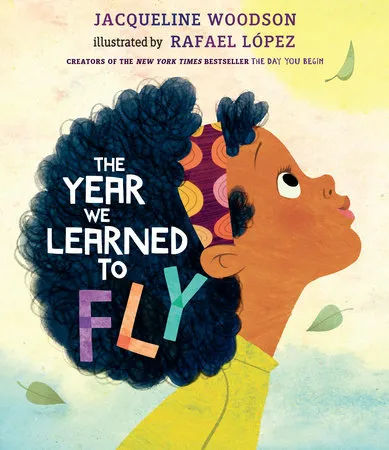
The Year We Learned to Fly by Jacqueline Woodson and Rafael López
The incomparable Jacqueline Woodson has done it again. In this newly released children’s book, readers journey into the vivid imaginations of the central characters. Woodson tells the story of children stuck inside because of bad weather. Rather than succumb to boredom, the children use their imaginations to escape the confines of their apartment. Surely, this will inspire children to dream big.
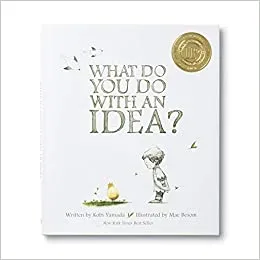
What Do You Do With An Idea? by Kobi Yamada and Mae Besom
This inspiring picture book centers on a child with an idea. We get to follow the child as they nurture the idea and watch it grow. Undoubtedly, this simple story will resonate with anyone who has ever been afraid to share their big dreams with the world.
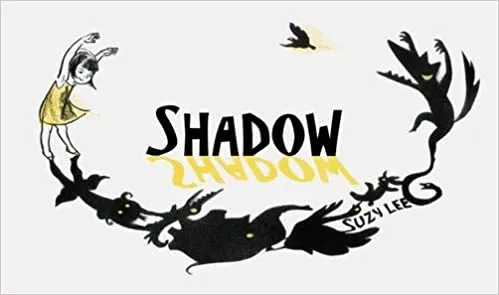
Shadow by Suzy Lee
This gorgeous wordless picture book is a guaranteed hit. The young protagonist uses her imagination and her shadow to create a fantasy world. Mirrored illustrations show both the true objects and the magical world the girl has built.
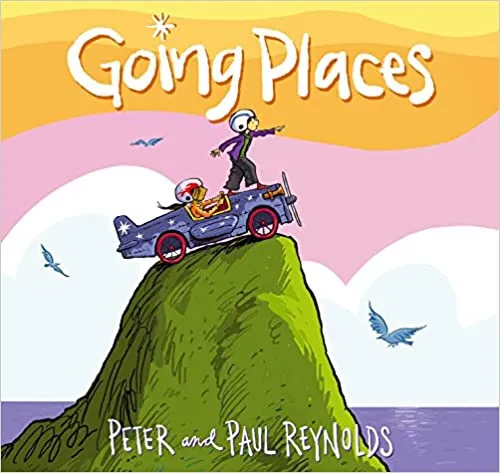
Going Places by Peter H. Reynolds and Paul A. Reynolds
I’m a big fan of Peter H. Reynolds’s work. He has a whimsical style and encourages creativity and self-love in his several excellent picture books. In this story, written with his twin brother, Reynolds introduces us to another uniquely wonderful protagonist. Maya enters a go-cart competition and must create a winning vehicle out of one of the identical kits given to all contestants. Of course, Maya doesn’t think inside the box she’s given. This is another fun story with a great lesson.
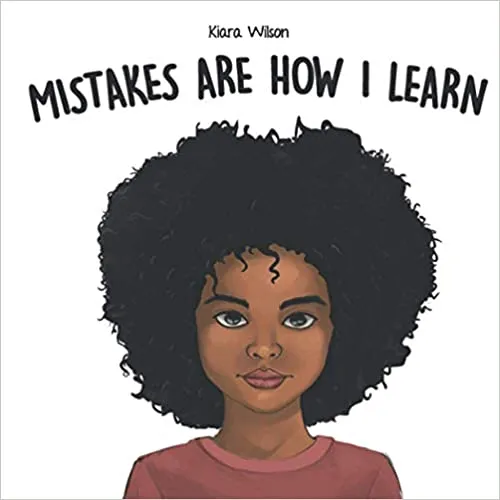
Mistakes Are How I Learn by Kiara Wilson
As we all know, mistakes are a part of the learning process. In this encouraging book, Wilson reminds kids to give themselves grace and space to make mistakes. Similar to The Girl Who Never Made Mistakes , this book is a good reminder for little perfectionists.
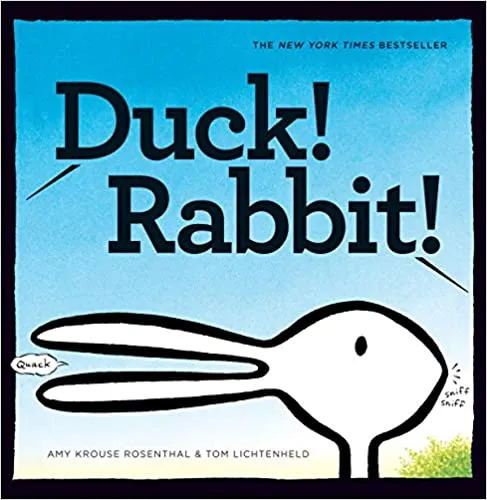
Duck! Rabbit! by Amy Krouse Rosenthal and Tom Lichtenheld
This picture book takes the well-known duck or rabbit puzzle and tells a story. Obviously, readers will feel compelled to see both sides of this argument. This is a humorous introduction to considering varying viewpoints.
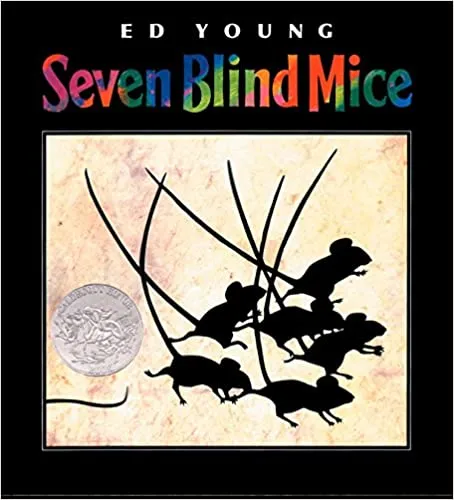
Seven Blind Mice by Ed Young
In this Caldecott Honor winner, seven blind mice try to determine the identity of an unfamiliar object. In Young’s take on the classic Indian tale, each mouse only gathers partial information. Of course, it takes the wisdom of the seventh mouse to put the pieces together and solve the puzzle.
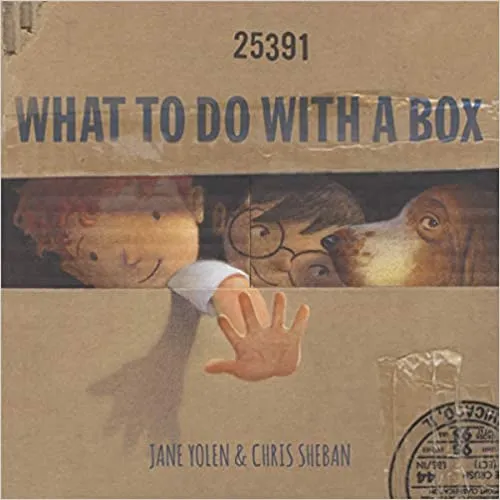
What To Do With A Box by Jane Yolen and Chris Sheban
You can probably guess what’s going to happen in this book, right? Clearly, there’s a metaphor here. Enjoy all the things a child can imagine with outside-of-the-box thinking in this rhythmic tale.
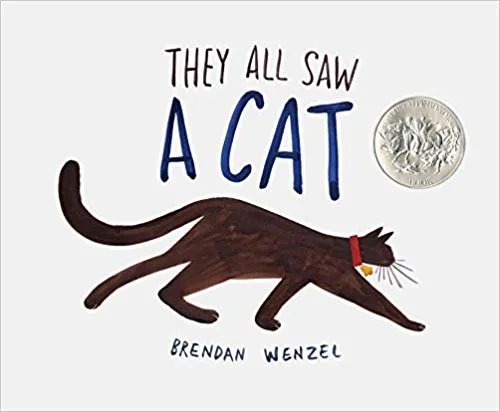
They All Saw A Cat by Brendan Wenzel
This book brilliantly executes a creative concept. Using strange and gorgeous illustrations, Wenzel depicts how differently individuals can perceive the same object. Consequently, readers are pushed to consider multiple viewpoints and how our perceptions color what we see.
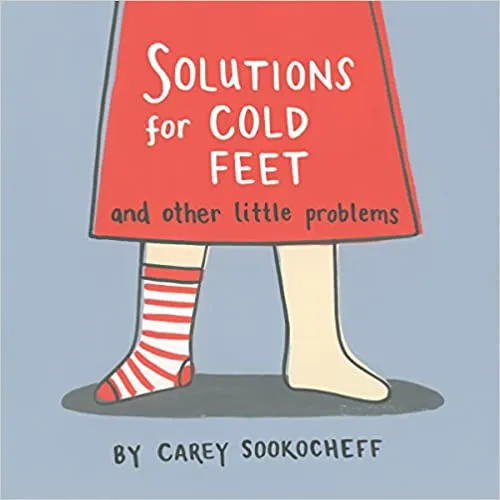
Solutions for Cold Feet and Other Little Problems by Carey Sookocheff
Follow one little girl and her dog through the challenges of a normal day in this fun story. The girl asks lots of questions and persists when she encounters problems. This tale will inspire kiddos to see problem-solving as a positive and necessary part of life.
Hopefully, you’ve found something on this list that inspires you to think and dream. If you’d like more content like this, check out 7 Board Books for Woke Babies and 10 Science Books for Curious Kiddos . Read, think, and dream BIG!
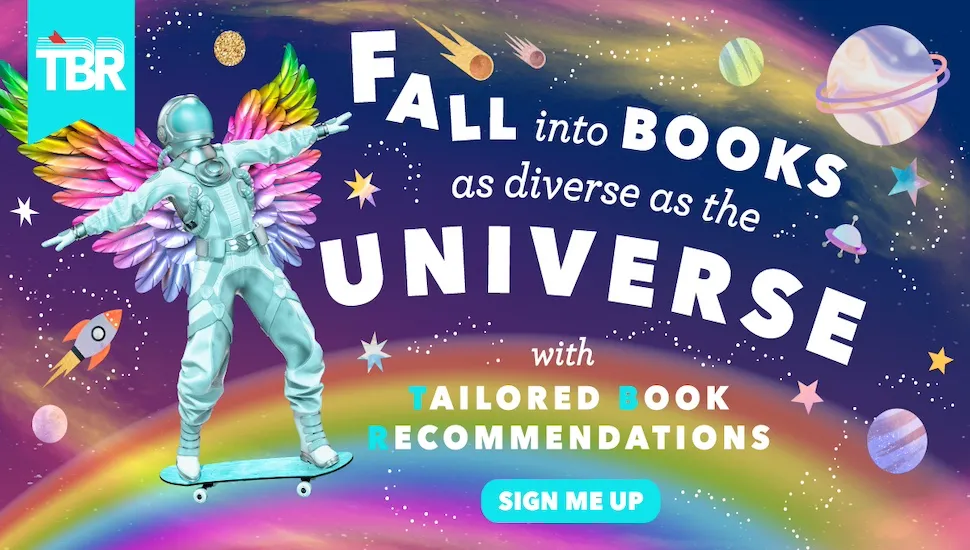
You Might Also Like


DON’T MISS A THING! SUBSCRIBE TO THE NEWSLETTER

- November 28, 2021
Teaching Problem and Solution with Picture Books
Teaching problem and solution gets a little easier with these picture books. Each book has problem and solution scenarios built into the plot, some more obvious than others. With their rich narratives and engaging illustrations, picture books offer a way to introduce and explore this concept. This blog post delves into the significance of teaching problem and solution through picture books and shares effective strategies.
Disclosure: This post contains affiliate links. If you purchase anything through them, I will get a small referral fee and you will be supporting me and my blog at no extra cost to you, so thank you! You can find more information here .
Why Use Picture Books for Teaching Problem and Solution?
Understanding problem and solution helps your students develop problem-solving and creative thinking skills. Exploring picture books with problem and solution plots helps them see a problem being introduced, how the character(s) try to solve it and how they finally resolve the issue.
In picture books with problem and solution scenarios, your students will see characters who:
- use knowledge to solve problems independently
- predict outcomes
- think things through
- make good decisions
- try new ways to solve problems
- make mistakes and try again
- recognize breakthroughs
- use trial and error to find a solution

Discussion Questions For Teaching Problem and Solution
- Describe the different ways the characters were effective problem-solvers.
- How did [character] solve the problem? What strategies did they use?
- Why do you think [character] was an effective problem solver?
- Why did [character’s] idea work in the end? Did they think about how their decisions would affect the outcome and other characters?
- Did [character] make good decisions? Is there anything they could have done differently?
- Think of possible solutions for [character’s] problem.
- Did [character] work independently to solve the problem or did they work collaboratively? Was this the best strategy?
- Does a thinker have to be brave, a risk-taker….?
- Did their decision making surprise you? Why or why not?
- Was [character] creative in their thinking? Explain your answer.
- How did [character’s] way of thinking impact the outcome of the story?
Picture Books for Teaching Problem and Solution

Ada Twist, Scientist by Andrea Beaty
Ada Twist scientific curiosity propels her to question, hypothesize, experiment, and unravel the world’s mysteries, including one close to home.
Ada Twist, Scientist fuels discussions around curiosity, inquiry, the pursuit of knowledge, and creative thinking and is a great choice for teaching problem and solution.

Ada's Violin: The Story of the Recycled Orchestra of Paraguay by Susan Hood
Ada Río dreams of playing the violin, but her financial circumstances prevent her from pursuing this aspiration. This changes with the arrival of an innovative music teacher who creates instruments from discarded rubbish.
Paraguay’s inspiring world-renowned Recycled Orchestra highlights the power of music, ingenuity, and the human spirit.

After the Fall by Dan Santat
A fresh retelling of the classic Humpty Dumpty story told from the egg’s perspective. Humpty Dumpty bravely faces his fear of heights, teaching us about courage, overcoming adversity, and the importance of self-esteem.
After the Fall promotes discussions around character traits, perspectives, and a growth mindset. It encourages students to understand and embrace their fears, foster adaptability, and celebrate resilience.

A Bad Case of the Stripes by David Shannon
Camilla Cream loves lima beans but won’t eat them because her friends hate them. A mysterious illness causes her to become what others think she should be. Only when she embraces her true self does she recover.
A Bad Case of the Stripes serves as a reminder that individuality should be celebrated and that personal growth stems from self-acceptance and the courage to resist societal pressures.

Black Dog by Levi Pinfold
Black Dog takes us to a family home where a large black dog grows in size and menace, causing fear among the family members. Yet, the smallest one shows immense courage and open-mindedness to discover the truth about the dog.
Engage your students in discussions about overcoming fears, taking risks, and not letting fear control our perception. Encourage them to conquer their fears and take on challenges bravely.

A Chair For My Mother by Vera B. Williams
A Chair for My Mother illuminates the power of love, family, and community even in the most challenging times. Rosa, her mother, and her grandmother lose their home to a devastating fire.
The book gives us a glimpse into poverty, the importance of saving money, the impact of community kindness and generosity, and the power of perseverance, even in the face of adversity.

Chalk by Bill Thomson
Three friends find a bag of magical chalk at the park on a rainy day – whatever they draw becomes real. A sun clears clouds, butterflies fly, and dinosaurs leap from the 2D realm. When a child’s drawn dinosaur chases them, they must creatively resolve the problem.
Chalk promotes creativity, problem-solving, the power of imagination and consequences, teaching children that every action can have effects they must deal with.

Click, Clack, Moo Cows That Type by Doreen Cronin
When Farmer Brown’s cows stumble upon a typewriter, they start typing letters demanding electric blankets. Things escalate quickly as the cows strike, and Duck is the mediator. But the peace doesn’t last long when the ducks have their own demands!
Click, Clack, Moo story promotes dialogue about fair negotiations’ importance, communication’s power, and the essence of compromise.

Dragons Love Tacos by Adam Rubin
Dragons may love tacos but hate spicy salsa. A boy discovers this peculiarity and hosts a taco party for his dragon friends. The party takes an unexpected turn when the salsa, much to the dragons’ dismay, turns out to be spicy, leading to a chaotic and fiery mess.
Dragons Love Tacos offers opportunities to discuss the concepts of problem-solving, cause and effect, and the importance of careful planning and reading labels!

Enemy Pie by Derek Munson
When Jeremy Ross moves to town, a boy’s life changes for the worse. He is Jeremy’s enemy. Dad advises making an enemy pie, but it will only work if he spends the whole day with his enemy. They end up having so much fun the boy doesn’t need the pie. Use to discuss kindness, conflict resolution, bullying, and problem-solving.

Ernest, the Moose Who Doesn't Fit by Catherine Rayner
Ernest the moose is so LARGE he can’t fit inside the book. Determined, he shimmies, shifts, and shuffles his body but he just won’t fit. With a bit of thought his friend, chipmunk, comes up with a solution. Reinforces themes of determination, problem-solving and creative thinking.

Book Chaos? Go Digital, Get Organized!
Hit the button to save yourself from the piles of book ideas you have, never to be looked at again.
You have successfully joined our subscriber list.

Fossil by Bill Thomson
This is the second of two picture books with a problem and solution by Bill Thomson. A young boy and his dog stumble upon a fossil which springs to life when touched! The boy excitedly cracks open more rocks, revealing more living fossils. But the excitement quickly turns into terror when he discovers a pterodactyl, which swoops down and flies off with his dog.
Fossil encourages discussions on curiosity, discovery, the unexpected consequences of our actions and problem and solution.

How the Ladies Stopped the Wind by Bruce McMillan
The wind in Iceland is so strong a group of women decide to fix the problem. They plant trees to limit its effects and overcome problems through problem-solving, cooperation and persistence.

Jabari Jumps by Gaia Cornwall
Jabari resolves to jump off the diving board for the first time. Despite his determination, fear and uncertainty hold him back. But with his father’s gentle encouragement, Jabari finds the courage to make the leap.
Jabari Jumps explores a growth mindset, courage, risk-taking, determination, and overcoming fears. It is also great for your students to make connections to Jabari’s fear of trying something new.

Journey by Aaron Becker
A lonely girl discovers a magic red marker and creates a door that transports her into an enchanting world filled with wondrous landscapes and adventure. She witnesses an evil emperor capture a majestic bird. She outsmarts the emperor’s army to free the bird.
The girl’s journey inspires courage in facing challenges, persistence in pursuing goals, and thinking outside the box to overcome obstacles.

King Bidgood's in the Bathtub by Audrey Wood
This is the first of two picture books with a problem and solution by Audrey Wood. King Bidgood enjoys having a bath so much he won’t get out. His page calls upon the court for help. Nothing works, so while everyone is despairing of what to do the page plugs the plug! Use to teach sequencing, creative thinking, problem & solution and prediction.

Lilly's Purple Plastic Purse by Kevin Henkes
Lilly adores her school, teacher, and purple plastic purse. Her enthusiasm for her purse leads her on an unexpected journey of self-discovery, teaching her important lessons about self-management, forgiveness, integrity, and self-reflection.
Through Lilly’s experiences, readers learn the value of controlling their impulses and honesty. Lilly’s experiences teach the importance of second chances, making amends, and learning from our actions.

The Little Mouse, The Red Ripe Strawberry, and the Big Hungry Bear by Audrey Wood
This is the second of two picture books with a problem and solution by Audrey Wood. The narrator attempts to convince a little mouse to share a recently picked succulent strawberry. Worried about a big, hungry bear, the mouse employs various strategies, including disguising and locking away the fruit, to keep it safe.
The Little Mouse, The Red Ripe Strawberry, and the Big Hungry Bear promotes discussions on sharing, problem-solving, creative thinking and cause and effect.

The Lumberjack’s Beard by Duncan Beedie
Jim chops down trees in the forest without considering the repercussions. His actions make many animals homeless, so Jim allows them to reside in his huge beard. He replants the trees and waits for them to grow so the animals can return to their natural habitats.
The Lumberjack’s Beard encourages discussions about environmental conservation, cause and effect, and problem-solving and highlights how people can rectify mistakes.

The Marvellous Moon Map by Teresa Heapy
Mouse wants to find the moon with his own moon map. His friend, Bear thinks it would be better to plan and organise the trip. Mouse heads off alone but ends up lost with his map that can’t help him. Luckily, Bear helps him out him and they discover something better than the moon. Reinforces themes of friendship, organisation, creative thinking and problem-solving.

Mufaro's Beautiful Daughters by John Steptoe
Mufaro’s two daughters react differently to the King’s search for a wife – one is aggressive and selfish, the other kind and dignified. The king disguises himself to learn the true nature of both girls and chooses Nyasha, the kind and generous daughter, to be the queen. This African folktale promotes themes of jealousy, vanity and kindness.

Our Little Inventor by Sher Rill Ng
Nell has an ingenious invention to solve the pollution problem in the Big City. She sets off on a journey to the city, far from where she lives. She finds the pollution is much worse than she expected. Nell is dismayed when city leaders mock her. With unexpected help and Nell’s determination, she shows her machine to the city. Promotes girls in STEM, pollution, determination, perseverance, critical thinking and problem-solving.

Outfoxed by Claudia Boldt
Harold, a fox, is challenged by his father to catch a chicken. He decides to follow his heart and helps the chicken escape. Reinforces themes of empathy, independence, problem-solving and creative thinking.

The Paper Bag Princess by Robert Munsch
Princess Elizabeth is a resourceful young girl who must outsmart a dragon to save her prince while dressed in a humble paper bag. The Paper Bag Princess invites discussions about empowerment, courage, independence, and challenging traditional gender roles by illustrating the strength of character over appearance. It emphasises that real heroines can save the day with their wit and courage, regardless of appearance.

Phileas's Fortune: A Story about Self-Expression by Agnes de Lestrade
Large factories churn out beautiful, ugly and funny words. People purchase, then swallow the words to communicate. Not all words are equal and the cost of each word varies. Phileas catches three discarded, random words to express his love for Cybele. Reinforces themes of communication, perseverance, problem-solving, risk-taking and creative thinking.

Rainbow Weaver by Linda Elovitz Marshall
Ixchel, a young Mayan girl, is passionate about continuing her community’s weaving tradition. Unable to use traditional materials, she innovatively uses colourful plastic bags, transforming waste into a woven rainbow fabric.
Rainbow Weaver sparks discussions on sustainability and recycling, empowering indigenous female characters, persistence and creative problem-solving.

Ralf by Jean Jullien
Ralf is always getting under everyones feet no matter what hr does. One night he smells smoke and stretches his body around the house trying to wake the family. After being saved, the family accept Ralf for who he is even if he still gets in the way. Reinforces themes of acceptance, caring, courage and problem & solution.

Star in the Jar by Sam Hay
A little boy finds a star and keeps it in a jar. He makes the decision to help the sad star get home., but wonders how to do this. He makes a star shape in the garden and the stars lift their little friend home.

Stuck by Oliver Jeffers
This is the first of two picture books with a problem and solution by Oliver Jeffers. When Floyd’s kite gets stuck in a tree, he throws his shoes in an attempt to free it. However, when that doesn’t work, Floyd resorts to increasingly outrageous objects (even people!) to dislodge the kite.
Stuck ignites discussions on cause and effect, creative problem-solving strategies, persistence in the face of obstacles, resourcefulness and initiative and adaptability in new situations.

Swimmy by Leo Lionni
After almost being eaten by a big fish, Swimmy works together with a school of fish to frighten off the big tuna. Use to promote problem & solution, cooperation, courage and overcoming fear.

This Moose Belongs to Me by Oliver Jeffers
This is the second of two picture books with a problem and solution by Oliver Jeffers. Wilfred is an organised boy who lives his life by rules. He claims a wandering moose as his new pet and names him Marcel. The moose is not keen on Wilfred’s rules and meets an old lady who claims him as her own. Wilfred recognises Marcel’s independence and learns how to compromise.

Wangari Maathai by Franck Prevot
The late Nobel Laureate Wangari Maathai sparked a revolutionary movement in Africa to challenge deforestation. In a bold move, she championed African women to plant trees, ultimately helping cultivate lush farms and thriving communities. Maathai also provided seedlings to men, school children, and even soldiers, spurring further reforestation efforts and making a lasting impact.

When the Rain Comes by Alma Fullerton
In rural Sri Lanka, Malini helps plant the rice crop for the first time. The ox-cart arrives full of seedlings and the driver asks her to care for the ox. The skies darken and the monsoon rain falls, separating Malini from everyone. Rather than running for safety, she saves all the seeds from ruin. Use to teach responsibility, courage and problem & solution.
What are your favourite picture books for teaching problem and solution in the your classroom?
2 thoughts on “Solve It With Stories: Teaching Problem & Solution with Picture Books”
As far as I might be concerned, the most awesome aspect of kids’ books is the significant statements that epitomize a whole book in a sentence or two. Nobody will at any point settle on the “best” quotes, however here are a portion of my top choices!
An amazing post with great tips as always. Anyone will find your post useful. Keep up the good work.
Leave a Reply Cancel reply
Your email address will not be published. Required fields are marked *
Leave this field empty
This site uses Akismet to reduce spam. Learn how your comment data is processed .

- Children's Library Lady
- Site Design by Laine Sutherland Designs
- Skip to primary navigation
- Skip to main content
- Skip to primary sidebar
- Skip to footer
The Colorful Apple
Picture Books about Problem Solving

How can we teach students to problem solve? Using read alouds can lead to some powerful discussions about this important SEL skill. Here are a few picture books about problem solving to share with your class!
This post contains affiliate links. Read my full disclosure here .
Flight School by Lita Judge
Little Penguin wants to fly! But his body wasn’t meant to take to the skies. It takes some problem solving and perseverance to help him do what he really wants.
What Do You Do with a Problem? by Kobi Yamada
Sometimes we have a problem and, no matter how much we ignore it, it just doesn’t go away. The problem just appears to get bigger and bigger. In this story, when the boy finally faces his problem, he realizes it is quite different than it appeared.

Grab this interactive read aloud for What Do You Do With a Problem?
Iggy Peck Architect by Andrea Beaty
Iggy is a small boy who loves to build! But then his teacher squashes his dreams of being an architect. A great story about not giving up and doing the things you love.
Stuck by Oliver Jeffers
Floyd’s shoe gets stuck in a tree. So he throws his shoe to get it down. Well, that gets stuck too. More and more things get stuck in the tree and Floyd has a real problem to solve!
Not a Box by Antoinette Portis
A box is just a box…unless it’s not a box. It can lead to such imagination and creativity! A box can be anything you want it to be!
Grab the interactive read alouds for Social Emotional Learning!
Want more book titles? Check out this blog post for picture books about decision making skills !
What are some other picture books about problem solving that you read aloud in your classroom?

Want to save this list for later? Pin the image below!


Problem Solving Books for Kids
This post may contain affiliate links.
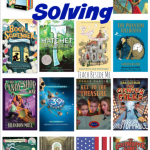
An important skill I think is vital to teach to kids is problem solving. Life is full of problems that need solving, so the better we can prepare kids for this world, the better off they will be in this world.
I am trying hard to teach my kids to be leaders and problem solvers, people who are not afraid to jump in and help when they see a need and do their part. This is not always an easy skill to teach!

One way I teach problem solving is through the books we read. Books can be such a positive (or negative!) influence on how kids think. Today I have compiled a list of problem solving chapter books for kids. All of these books have themes that have kids solving a problem in creative and ingenious ways. I love having my kids read books like this because it encourages my own kids to think in creatively. Problem solving is a necessary skill for kids to start learning at a young age. People who know how to solve problems easily and in creative ways will be better leaders now and in the future.
The 39 Clues , a series by various authors tells of 2 kids who travel the world on an adventure hunting clues to that lead to the family fortune.
The Gollywhopper Games by Jody Feldman
Escape from Mr. Lemoncello’s Library by Chris Grabenstein is a library adventure lie no other! A group of kid are chosen to stay in the new fantastic library overnight and can only escape by discovering all of the clues.
The Mysterious Benedict Society by Trenton Lee Stewart
Candy Shop Wars by Brandon Mull – My son says the second one in the series is the best on this topic.
Key to the Treasure by Peggy Parish
Capture the Flag by Kate Messner (read my Review )
Encyclopedia Brown by Donald J. Sobol
Book Scavenger by Jennifer Chambliss is a story about a 12-year-old girl who joins a geocaching style game with books that lead to coded clues around the country.
From the Mixed Up Files of Mrs. Basil E. Frankweiler by E. L. Konigsburg
Tuesdays at the Castle by Jessica Day George
The Phantom Tollbooth by Norton Juster
The Genius Files by Dan Gutman
Hatchet by Gary Paulson is about a boy who learns to survive on his own in the wild.
You can find many of these on Audible!
Can you think of more Problem Solving Books for Kids?
Share them in the comments!
What do you do to encourage problem solving with your kids?
Check out more of my book lists:
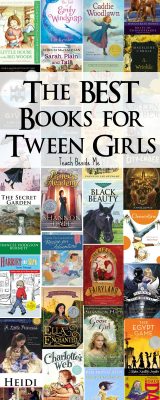
Former school teacher turned homeschool mom of 4 kids. Loves creating awesome hands-on creative learning ideas to make learning engaging and memorable for all kids!
Similar Posts

Straw Rocket with Printable Template
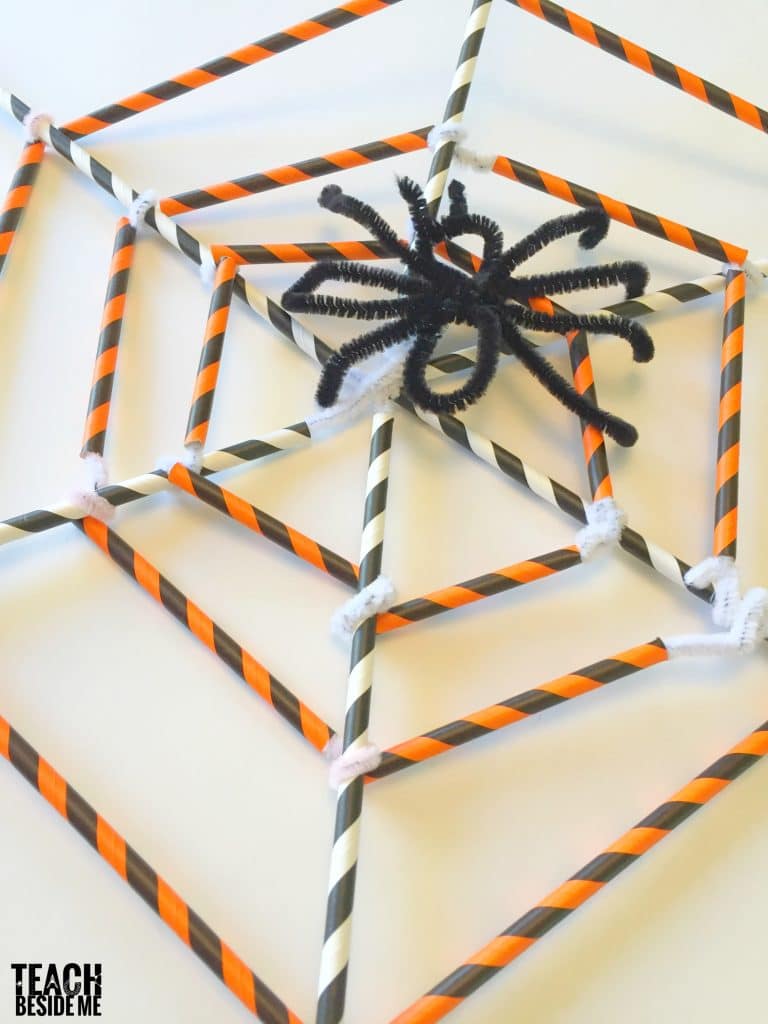
Straw and Pipe Cleaner Spider Web

Temple Grandin Unit Study
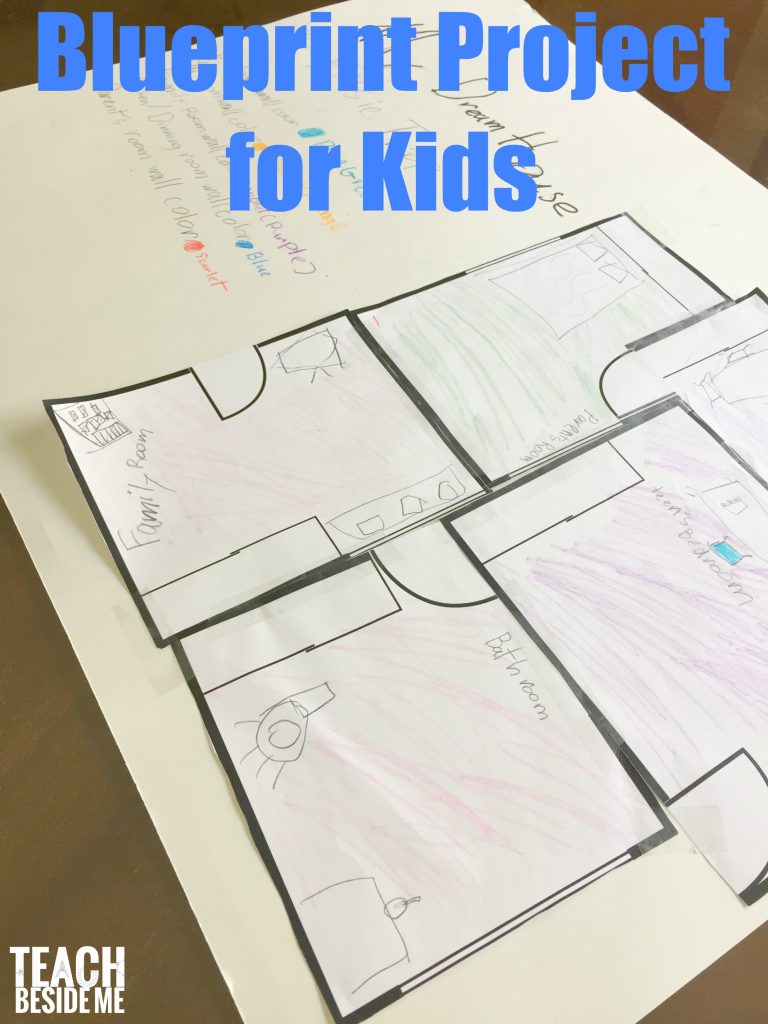
Blueprints and Architecture for Kids Inspired by Frank Lloyd Wright

Reversible Hopscotch and Tic-Tac-Toe Mat
Bible storybook review & giveaway, leave a reply cancel reply.
You must be logged in to post a comment.
This Reading Mama

Books with a Clear Problem and Solution
By thisreadingmama 5 Comments
When teaching kids how to comprehend and/or write fiction text, often times it’s good to start with books and stories that have a clear problem and solution text structure .
This means that the story line introduces characters and a problem at the beginning –> the character(s) try to solve the problem in the middle, which rises to a climax –> and at the end, the problem is solved, with the “good” guy winning.
The determining importance post , from our Reading Comprehension Series , has a great visual to SHOW this progression in fiction text. We also have lots of free, graphic organizers for fiction text structure here .
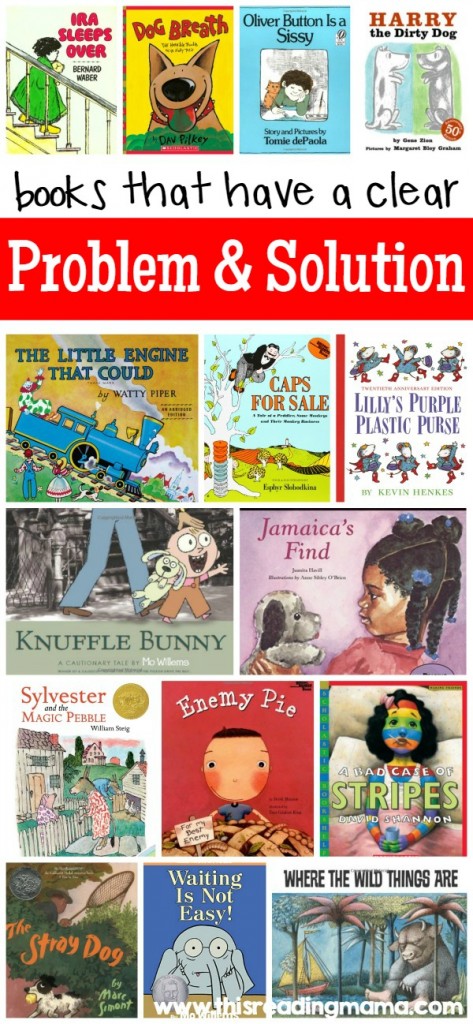
*This post contains affiliate links.
Books with a Clear Problem and Solution Structure
Today, I’m sharing 16 of our favorite books that feature a clear problem and solution structure to help kids see how fiction texts are often composed. By the way, these texts aren’t just great for comprehension, but can also be used to help kids WRITE their own fiction stories as well, an extra bonus!
Ira Sleeps Over by Bernard Waber is about boy named Ira, who becomes anxious quite about what his friend, Reggie, will think of him if he brings his teddy bear over to spend the night. This is a GREAT book for teaching text-to-self connections as well as the problem and solution text structure.
Dog Breath by Dav Pilkey is a pun-filled book about a family pet, Hally Tosis, who has incredibly bad breath. The Tosis family tries to help Hally get rid of the bad breath to no avail. But dog breath may actually be a good thing, especially when two thieves visit the Tosis family!
Oliver Button is a Sissy by Tomie dePaola is about a little boy named Oliver who is clearly different than all the other boys at school. He’d rather paint, tap dance, and read instead of playing sports like all the other boys, which earns him the name, “Sissy.” But once he shows his dancing skills at the school talent show, he receives a new name – “Star.”
Harry the Dirty Dog by Gene Zion features a cute little family puppy who despises his baths. So much so, that he hides his bath brush and runs away. As he is away, he gets very dirty, from a white dog with black spots to a black dog with white spots. As hunger strikes, he heads home only to find that the family doesn’t recognize him.
The Little Engine by Watty Piper is a classic book that features a clear problem and solution structure as the little engine helps the broken down engine climb over the mountain to deliver toys to all the boys and girls on the other side of the mountain.
Caps for Sale by Esphyr Slobodkina is such a fun and interactive book about a peddler who gets his caps stolen by a bunch of monkeys. He tries, in anger, to get his caps back, only to be mocked by the monkeys. What will he do to get all those caps back? Such a simple solution that kids may be able to predict as they read along.
Any of Kevin Henkes’ books are great for teaching the problem and solution text structure with fiction. One of my daughter’s favorites is Lilly’s Purple Plastic Purse . Lily loves her purple plastic purse so much she brings it to school to share, but Mr. Slinger, her teacher, takes it from her. To get revenge, she draws a mean picture of her teacher only to have him see it. She begins to feel great remorse for her actions and wants to make amends. Will Mrs. Slinger forgive her?
Mo Willems is one of my kids’ favorite authors. Knuffle Bunny was probably the first book they were introduced to by him. Trixie and Daddy take a trip to the laudromat. On the way home, Trixie realizes Knuffle Bunny has been left behind. Follow the journey of Trixie and Daddy as they try to get Knuffle Bunny back. There are more Knuffle Bunny adventures including Knuffle Bunny Too , but I warn you to keep a tissue box handy when you read Knuffle Bunny Free .
Jamaica’s Find by Juanita Havill features a little girl, Jamaica, who finds a stuffed dog and hat at the park. She takes the hat to the lost and found, but decides to keep the stuffed dog for herself. She finds herself wondering if she’s done the right thing by keeping the dog. She finally decides to take it back to the lost and found and finds a friend along the way. This book is a great one to show that characters don’t always face external problems; sometimes characters have internal struggles and problems.
Sylvester and the Magic Pebble by William Steig is about a donkey named Sylvester who finds a magic pebble. Just then, a lion comes to attack him and he wishes to be a rock. Sylvester is changed into a rock, but he can no longer hold the magic pebble to wish himself back into his usual form. His family looks high and low for him and is eventually returned to his family. William Steig has such a way with words and his books can fit into multiple comprehension strategies, such as asking questions .
Enemy Pie by Derek Muson is such a fantastic book for many comprehension strategies. It’s been one of my favorites for a long time and I LOVE reading it to kids who have never heard the story. When a bully (Jeremy Ross) moves into the neighborhood, the young boy’s summer is ruined. That is until the young boy’s father says he can help get rid of the bully (enemy) by making him some enemy pie. The boy wonders: What is “enemy pie” and how does it work? Will it get rid of enemies? What does it taste like? Will “enemy pie” solve all his problems?
Camilla worries about what others think of her so much that on the first day of school, she wakes up with a bad case of the stripes…and much more! Her body adds on the ailments of every fear she has until a kind, old lady helps her to learn that it’s okay to just be herself. A Bad Case of the Stripes by David Shannon has an explicit external conflict, but kids have to read “in between the lines” to get the internal problem Camilla faces and eventually conquers.
The Stray Dog by Marc Simont is one of the books we used an example for our determining importance post with fiction . A family goes for a nice picnic away from the city only to meet a cute, stray dog. They leave the park without the dog, but think about him all week. The next weekend, the family returns to the park, hoping that the stray dog will show up again. He does, but now they have another obstacle to overcome. Such a cute book and one that requires kids to pay attention to the story that the pictures also tell.
If I had a dollar for every Elephant & Piggie book we’ve read {and re-read} this school year, I’d be rich! 🙂 All of his books contain a clear problem and solution format, but in such a fun and playful way that kids WANT to read these. While the words are written for the 1st grade level, older kids will enjoy them, too. Waiting is Not Easy! is one of Mo Willems’ newest Elephant & Piggie books and was also featured in our determining importance post with fiction from our Reading Comprehension Series .
Where the Wild Things Are by Maurice Sendak is another classic book that features a clear problem and solution structure. Max is banished to his room without supper because of his behavior and falls asleep only to “wake up” in a world of wild things. Max begins to long for home again and wakes up to find that his mother has left his supper in his room to eat. I love how Sendak asks kids to read between the lines a bit to figure out how his supper got there and why. So adorable and such a classic!
More Book Lists You May Enjoy:

- 50+ Books for Modeling Comprehension Strategies
- Books to Help you Teach Comprehension
- Letter of the Week Book Lists & Letter Packs
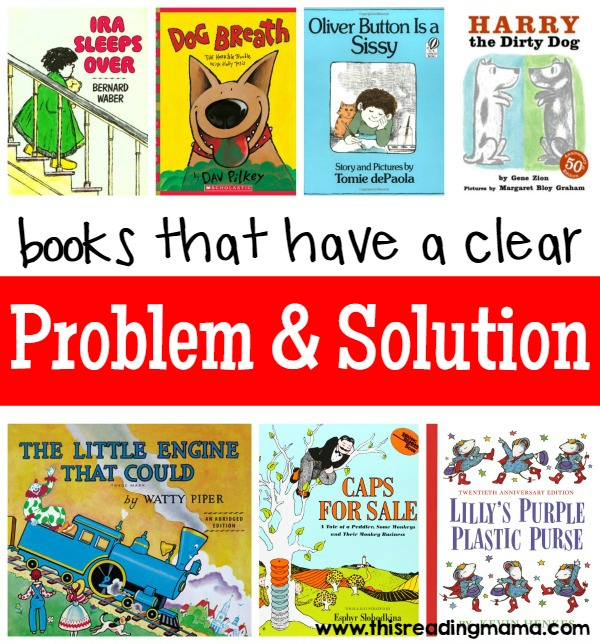
Want MORE Free Teaching Resources?
Join thousands of other subscribers to get hands-on activities and printables delivered right to your inbox!
April 25, 2016 at 6:38 pm
This was helpful. Thanks, I have most of these books.
November 4, 2016 at 11:22 am
Is this list available somewhere in document form?
November 4, 2016 at 11:47 pm
I don’t believe so, but that’s a GREAT idea!
December 7, 2020 at 7:51 pm
Loved the tips and advice in your article. You explained it well and I guess I am going to apply these in my future writing project. You have to write the book that wants to be written. And if the book will be too difficult for grown-ups, then you write it for children. Come and visit my blog on Tips on How to Write a Story That’s Perfect for Children Hope this will help.
Thanks Attilio
January 8, 2021 at 9:19 pm
This is useful information that helps me in my future writing. Reading is to the mind what exercise is to the body. It is also to train your mind to imagination to think big. Keep it up!
Leave a Reply Cancel reply
Your email address will not be published. Required fields are marked *
This site uses Akismet to reduce spam. Learn how your comment data is processed .
Problem Solving
Learn the basics for problem solving

Popular Collections

The Leading Digital Reading Platform for Kids
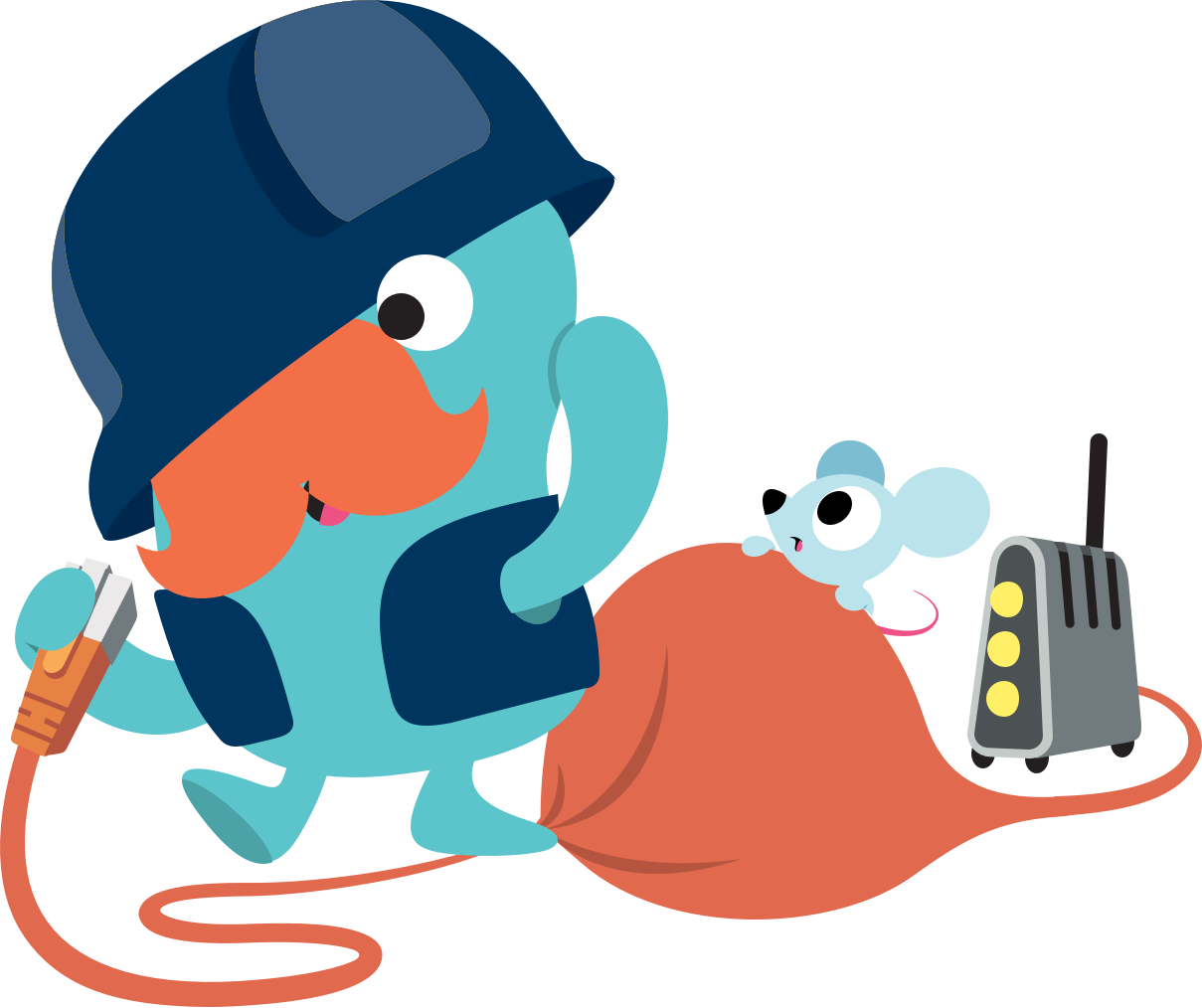
The only kids' eBook subscription service that offers thousands of high-quality books from well known publishers like HarperCollins, National Geographic and others.
Javascript required.
Whoops! We're sorry but Epic doesn't work properly without JavaScript enabled. Check your web browser's settings to make sure it's enabled.
10 Books That Model SEL Problem-Solving
These picture books demonstrate social and emotional learning skills as the characters participate in show-and-tell.
Your content has been saved!
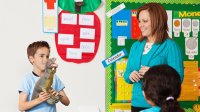
As a kindergarten teacher, I struggled and strategized how to successfully conduct show-and-tell so that busy bodies and minds (including mine) could pay attention to peer presentations. I found my ultimate fix when I relegated show-and-tell to the role of “dinner theater.”
Students did presentations during lunch (snack time would work as well), and I quickly discovered that having everyone seated at tables, with their hands and mouths occupied during each presentation, helped with listening, processing, and formulating questions and comments.
Show-and-tell has been a feature of early childhood programs for decades. Originally considered to be a foundational activity for public speaking, it’s also a classroom community-building activity with great benefits for social and emotional learning (SEL). In a thoughtfully designed show-and-tell program, students can work on at least four CASEL social and emotional goals in two SEL domains: self-awareness and social awareness.
For a presenter, regarding self-awareness, show-and-tell can assist with integrating personal and social identity and with developing interests and a sense of purpose.
For an audience member, relating to social awareness, show-and-tell can assist with recognizing strengths in others and showing concern for the feelings of others.
The following picture books feature unique characters who share items and their interests with others. These titles can assist families, teachers, and students with SEL discussions about show-and-tell in a familiar read-aloud setting. Each title offers a unique way of viewing show-and-tell, and reading numerous titles allows everyone to consider a variety of scenarios associated with sharing parts of yourself with others as well as strategies for being an empathetic listener.
10 Picture books That Promote SEL
Clem and Crab , by Fiona Lumbers. While searching for treasures and trash on the beach, Clem discovers a crab. Crab hitches a ride back to Clem’s house and ultimately becomes part of Clem’s school show-and-tell presentation. Clem and Crab’s story ultimately inspires her classmates to action to help clean the beach for Crab. Corresponding coloring pages are available on the publisher’s Free Stuff page. Author-illustrator Fiona Lumbers reads her book in a Waterstones video. (Preschool–grade 3)
Daniel Tiger’s Neighborhood: Show and Tell Day! Adapted by Alexandra Cassel Schwartz, illustrated by Jason Fruchter. Daniel Tiger can’t find a toy from home to bring to show-and-tell, so he decides to make something instead. Daniel transforms a shoebox, a small blanket, and a sock ball into a bed for his stuffed animal Tigey. (Preschool–grade 2)
John’s Turn , by Mac Barnett, illustrated by Kate Berube. This book is written from the collective student audience point of view. Young Matthew is apprehensive prior to the “Sharing Gifts” assembly, but he gathers his courage and performs a dance in front of the entire school. At the end of the performance, all of the students give Matthew a standing ovation. A corresponding teacher’s guide is available on the publisher’s website. Author Mac Barnett shares his inspiration for this book in a Candlewick video. (Preschool–grade 3)
Mr. Putter & Tabby Ring the Bell , by Cynthia Rylant, illustrated by Arthur Howard. Mr. Putter and his neighbor Mrs. Teaberry are young in spirit but old in years. They head back to first grade for a special show-and-tell presentation featuring Mr. Putter’s cat Tabby and Mrs. Teaberry’s dog Zeke. If this sounds like a terrible idea, you are right! (Kindergarten–grade 3)
My Heart Is a Compass , by Deborah Marcero. Rose wants to bring “something that had never been found” for show-and-tell. Using her imagination, Rose crisscrosses the universe guided by maps that she makes to seek out a unique object. Ultimately, she presents her maps and shares her journey at show-and-tell, which ultimately inspires her classmates to make their own maps. (Preschool–grade 3)
Our Favorite Day of the Year , by A. E. Ali, illustrated by Rahele Jomepour Bell. On the first day of kindergarten, Ms. Gupta tells her class that during show-and-tell, each student will select their favorite day to share. “That way, the class will celebrate it with you!” The class learns about and celebrates such holidays as Eid al-Fitr, Rosh Hashanah, Las Posadas, and Pi Day. (Preschool–grade 3)
Pete the Cat: Show-and-Tell , by James Dean and Kimberly Dean, illustrated by James Dean. Pete brings his cool baseball mitt to school for show-and-tell. The mitt has been passed down through Pete’s family, and he loves to use it to play catch with his dad. At school, Pete compares his old, but much loved, mitt with the other objects that his classmates have brought in. Is his mitt cool enough? (Preschool–grade 2)
Show and Tell , by Rob Biddulph. Welcome to the most outrageous classroom “bring and brag” scenario ever. Twenty-six second graders compete for the most impressive show-and-tell object judged by their teacher. In this out-of-this-world tale, each student tries to outdo the previous classmate, and items range from a sunflower seed to Big Ben. (Kindergarten–grade 3)
The Show-and-Tell Lion , by Barbara Abercrombie, illustrated by Lynne Avril. At show-and-tell, Matthew blurts out that he has a baby lion named Larry. After fielding numerous questions from curious classmates, Matthew finds himself way in over his head. He shares his problem with his mother, who affirms his wonderful imagination but advises that he should reveal the truth. While his classmates are disappointed, Matthew pivots to sharing a book he has written about Larry’s adventures, which is an exciting show-and-tell. (Preschool–grade 2)
Threads of Me: Kente for Show and Tell , by Erica Asante, illustrated by Chengetai Lerato Masalethulini. Ama’s show-and-tell assignment is to bring in an object that represents her heritage. Ama consults with her grandmother, who tells her the traditional story of Ghana’s kente cloth and suggests bringing in kente that has been passed down through the generations in Ama’s family. (Kindergarten–grade 2)
- Grades 6-12
- School Leaders
Get 50% off your first box of Home Chef! 🥙
Every product is independently selected by (obsessive) editors. Things you buy through our links may earn us a commission.
54 Best Social Skills Books for Kids
Each book starts an important conversation.
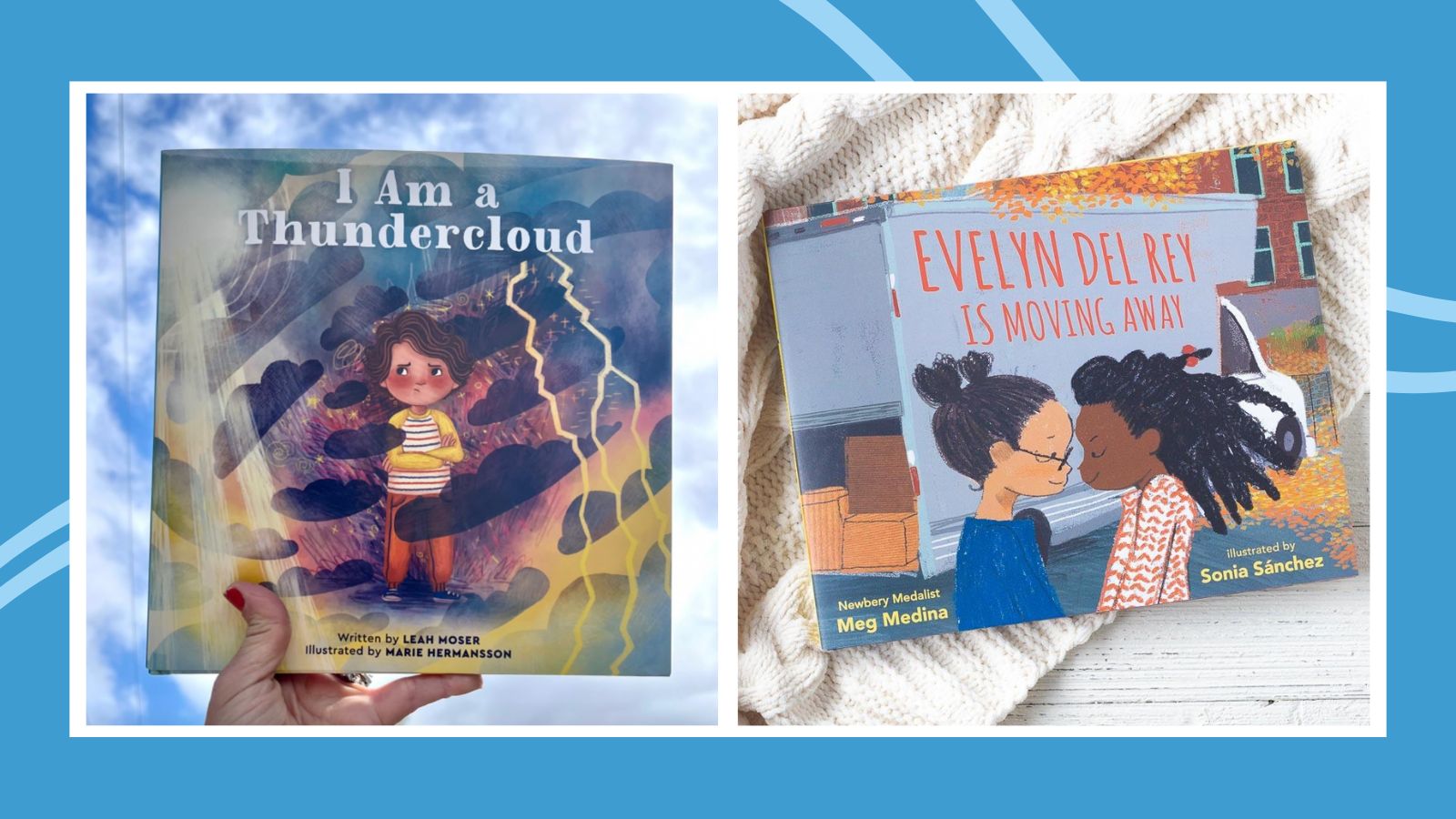
Social-emotional learning encompasses skills like managing emotions, making friends, empathy, and understanding. They’re skills that will help students succeed and can be taught using these amazing social skill books for kids, including recent releases you may not have seen yet. These books are fantastic for starting classroom conversations about all kinds of SEL skills.
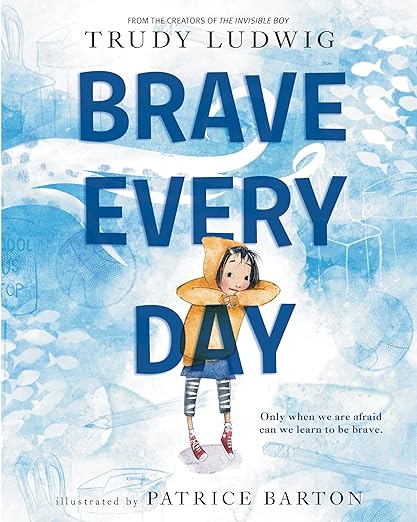
1. Brave Every Day by Trudy Ludwig
Camila and Kai are both scared about their class’ field trip to the aquarium, though they show it in different ways. It turns out that supporting each other helps them both.
This story is perfect to talk about new experiences and how we all show feelings differently.
Buy it: Brave Every Day
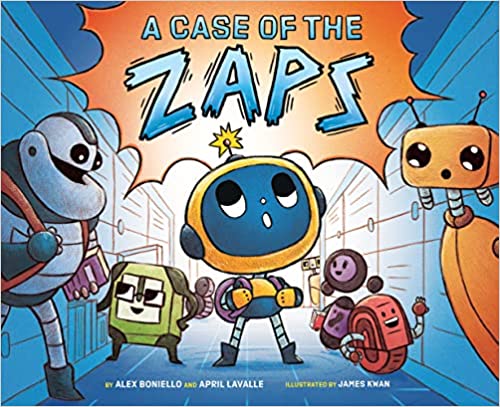
2. A Case of the Zaps by Alex Boniello and April Lavalle
Robot Pi’s class is planning a class trip to “where it all started, Olde Silicon Valley.” (Ha!) It’s supposed to be exciting, but Pi’s worries quickly kick into “overdrive.” The fun robot metaphors give kids helpful language for talking about anxious feelings. Bonus: We appreciate the incidental use of they/them pronouns for the main character!
Buy it: A Case of the Zaps
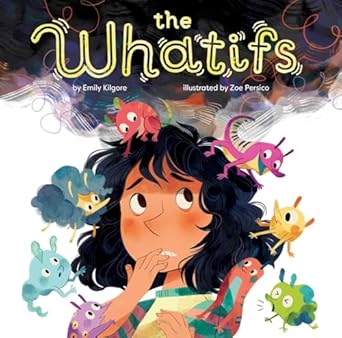
3. The Whatifs by Emily Kilgore
Scary “Whatifs” follow Cora everywhere, and it only gets worse as she prepares for her big piano recital. Her outlook changes when Stella challenges her to turn her bad Whatifs into good ones. This is a great book to read one-on-one with an anxious student, or as a read-aloud to help your class understand what anxiety feels like.
Buy it: The Whatifs
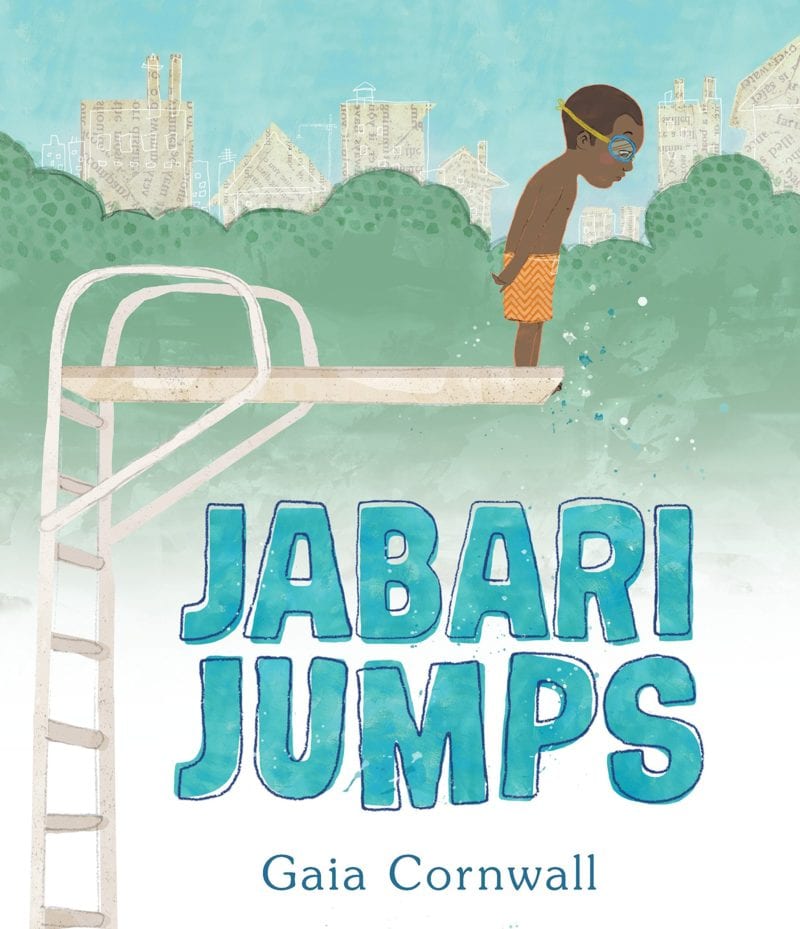
4. Jabari Jumps by Gaia Cornwall
Jabari is definitely ready to jump off the diving board. He’s finished his swimming lessons and passed his swim test, and he’s a great jumper, so he’s not scared at all. Jabari Jumps is a wonderful book to talk about how it feels to try something new, and how to reframe scary experiences into something positive.
Also check out the sequel Jabari Tries to talk about perseverance!
Buy it: Jabari Jumps
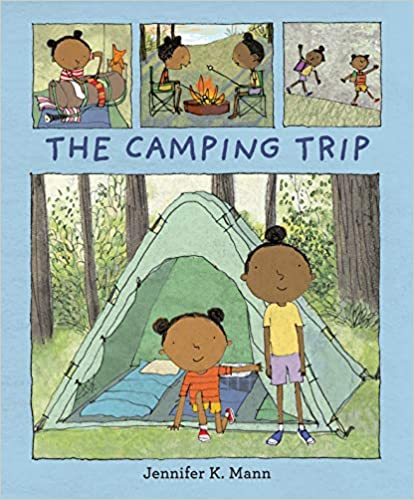
5. The Camping Trip by Jennifer K. Mann
Ernestine is super excited to go camping for the first time with her aunt and cousin—until they reach the campsite, that is. Then everything feels scary, and she misses her dad. Use this book as a read-aloud to talk about new experiences and how to deal with big feelings, like missing a parent.
Buy it: The Camping Trip
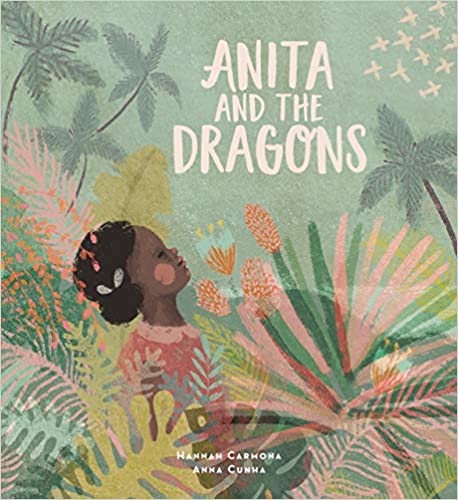
6. Anita and the Dragons by Hannah Carmona
Fear of “dragons” almost overcomes Anita as she and her family prepare to emigrate from their home in the Dominican Republic. Her brother reminds her, “They aren’t real dragons. They’re just planes in the sky.” We love this book because of its ability to build empathy for others’ experiences, and to talk about how we handle fear.
Buy it: Anita and the Dragons
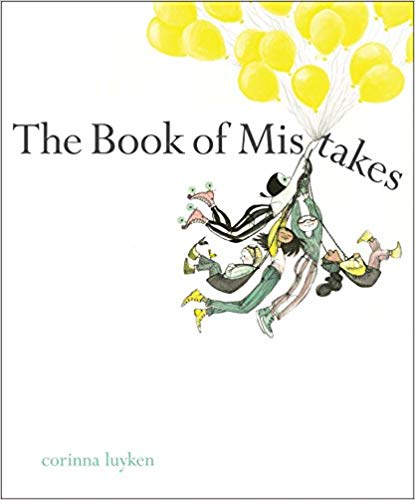
7. The Book of Mistakes by Corinna Luyken
Zoom meets Beautiful Oops! in this book about the creative process and the way in which “mistakes” can blossom into inspiration. Use this book to start the school year when you want students to get right into a growth mindset, or break it out when you see students getting frustrated with a project.
Buy it: The Book of Mistakes
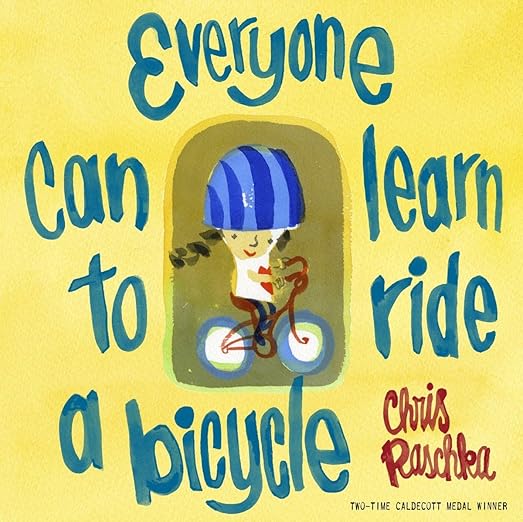
8. Everyone Can Learn To Ride a Bicycle by Chris Raschka
Learning to ride a bike is one of the most important milestones of childhood, and this book captures the emotional ups and downs of the experience. With younger students, use this book to talk about the feelings we experience when learning. For older students, use riding a bike as a metaphor for learning.
Buy it: Everyone Can Learn To Ride a Bicycle
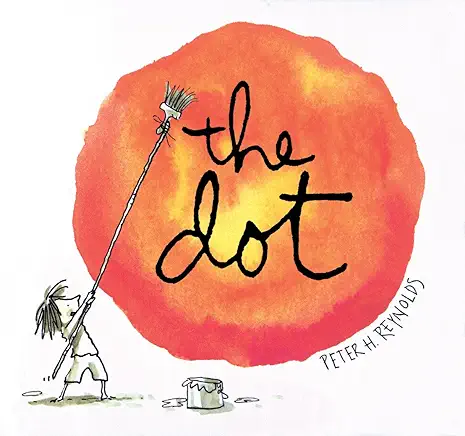
9. The Dot by Peter Reynolds
The words of her teacher are a gentle invitation to express herself. But Vashti can’t draw—she’s no artist. Use this text to get students thinking about the ways they can express themselves, and even make your own dots.
Buy it: The Dot
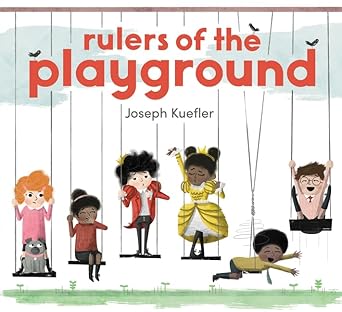
10. Rulers of the Playground by Joseph Kuefler
One morning, Jonah decided to become ruler of the playground. Everyone agreed to obey his rules to play in King Jonah’s kingdom … everyone except for Lennox, because she wanted to rule the playground too.
Read this book to reinforce playground etiquette and to help students navigate friendships in unstructured spaces.
Buy it: Rulers of the Playground
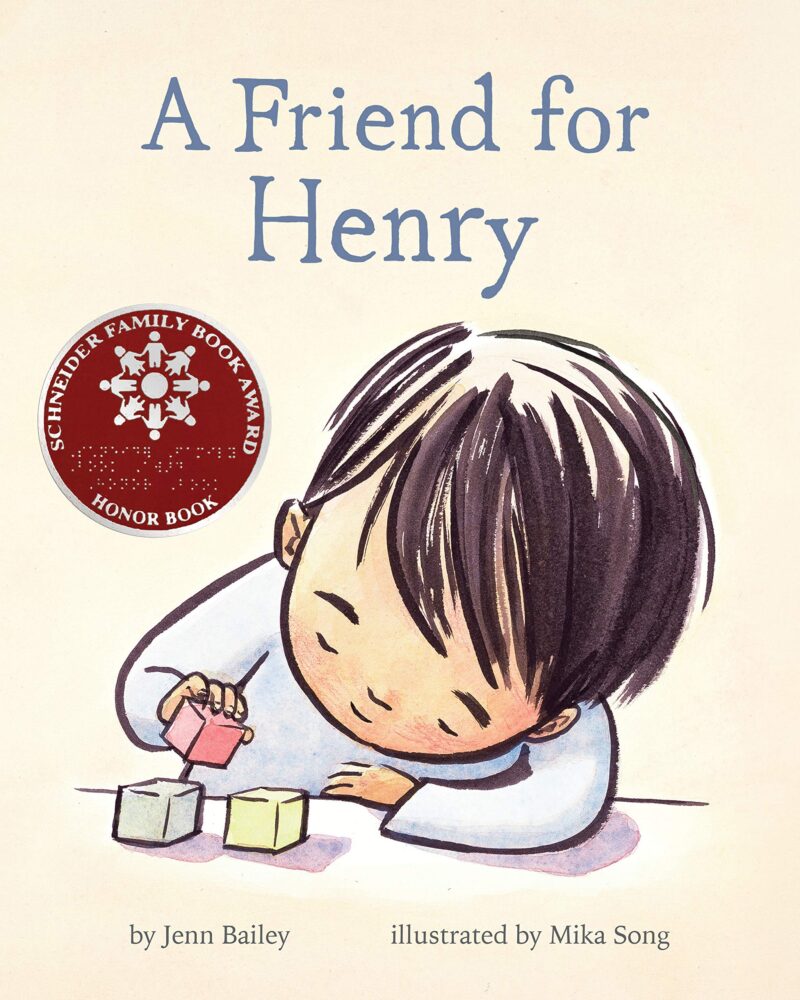
11. A Friend for Henry by Jenn Bailey
Henry, who has autism, eagerly wants a new friend. But many of his classmates aren’t quite the perfect fit he imagines. Then he builds blocks with Katie, and their tower is just right.
This book is about friendship and neurodiversity and can be used to help students empathize with others and learn friendship-building skills.
Buy it: A Friend for Henry

12. Daisy by Jessixa Bagley
Teasing makes Daisy feel terrible. She spends much of her time alone, collecting treasures—until she realizes someone else is adding to her treasure shelf.
Have students create their own treasure shelves after they read this story and think about what makes them special no matter what happens.
Buy it: Daisy
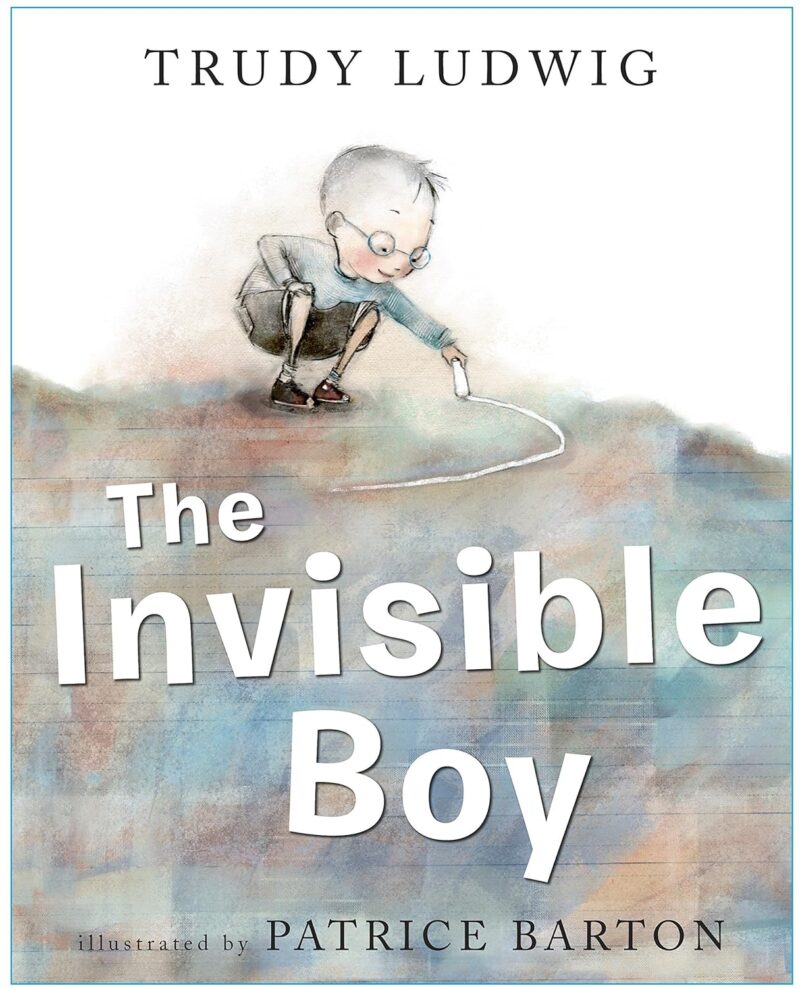
13. The Invisible Boy by Trudy Ludwig
Meet Brian, the invisible boy. Nobody ever seems to notice him or think to include him in their group, game, or birthday party … until a new kid comes to class.
Use this book to talk about how our actions make others feel and how small actions add up (notice how the illustrations change as Brian is more and more included).
Buy it: The Invisible Boy
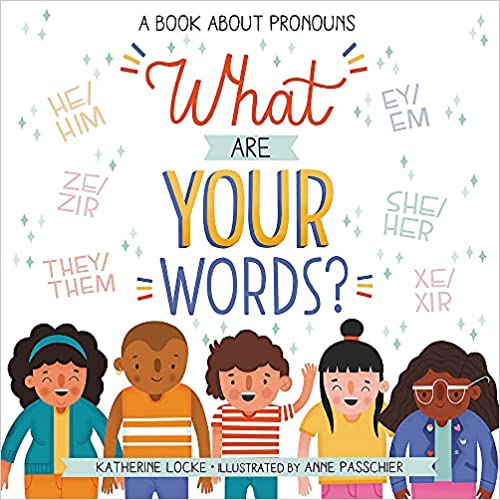
14. What Are Your Words? A Book About Pronouns by Katherine Locke
This is one of our favorite social skills books for kids for supporting developmentally appropriate conversations about pronoun choices. Let kids know they have options for the words that feel right—and that it’s important to respect others’ choices too.
Use this book to introduce the idea that words have power, or have it on hand if students are curious about pronouns.
Buy it: What Are Your Words? A Book About Pronouns

15. Aaron Slater, Illustrator by Andrea Beaty
We love all the Questioneers books to use as engaging class read-alouds, but this one is especially awesome for talking about strengths, challenges, and finding your own way to shine. Aaron Slater has a tough time writing a story to share in class, until he lets his love of art lead the way.
Start a conversation about neurodiversity, create your own personal stories, or talk about things that are difficult for each of us and how we work through them.
Buy it: Aaron Slater, Illustrator

16. Like by Annie Barrows and Leo Espinosa
This quirky ode to human connection is a fun way to launch conversations about similarities and differences. How are humans like mushrooms, excavators, and hyenas?
Use this book to talk about how we’re similar. Or, with older kids, get creative thinking about other out-of-the-box ideas to add to this text. We love social skills books for kids that get classrooms talking and wondering together!
Buy it: Like
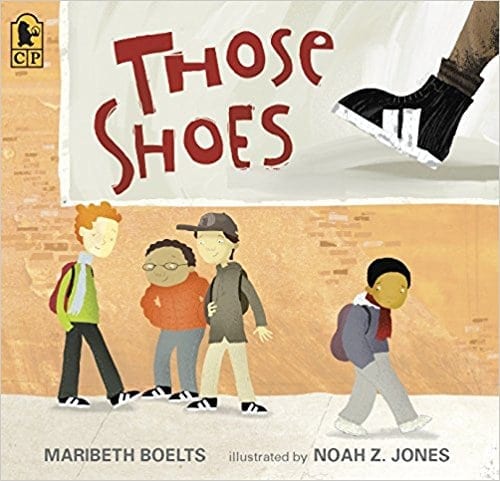
17. Those Shoes by Maribeth Boelts
All Jeremy wants is a pair of those shoes, the ones everyone at school seems to be wearing. Though Jeremy’s grandma says they don’t have room for “want,” just “need,” when his old shoes fall apart at school, he is more determined than ever to have those shoes, even a thrift-shop pair that is much too small.
This book is great for talking about wants and needs, or to discuss how we develop and act on empathy.
Buy it: Those Shoes
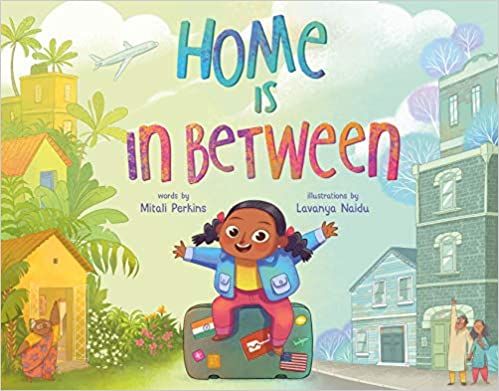
18. Home Is in Between by Mitali Perkins
If you’re looking for social skills books for kids related to code-switching—navigating multiple cultures—Shanti is a positive role model for students. When she and her family move to the United States from India, the worlds inside her home and in the larger community feel very different.
Start a discussion with students about how we act in different settings and you may be surprised with how reflective students can be.
Buy it: Home Is in Between
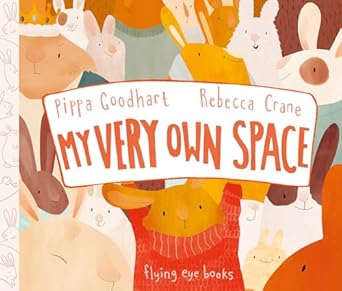
19. My Very Own Space by Pippa Goodhart and Rebecca Crane
A little rabbit is trying to read his book in peace, but there’s so much going on around him! Maybe he needs some space just for himself.
This is a great book to introduce the concept that we all need personal space and appropriate ways to ask for it.
Buy it: My Very Own Space
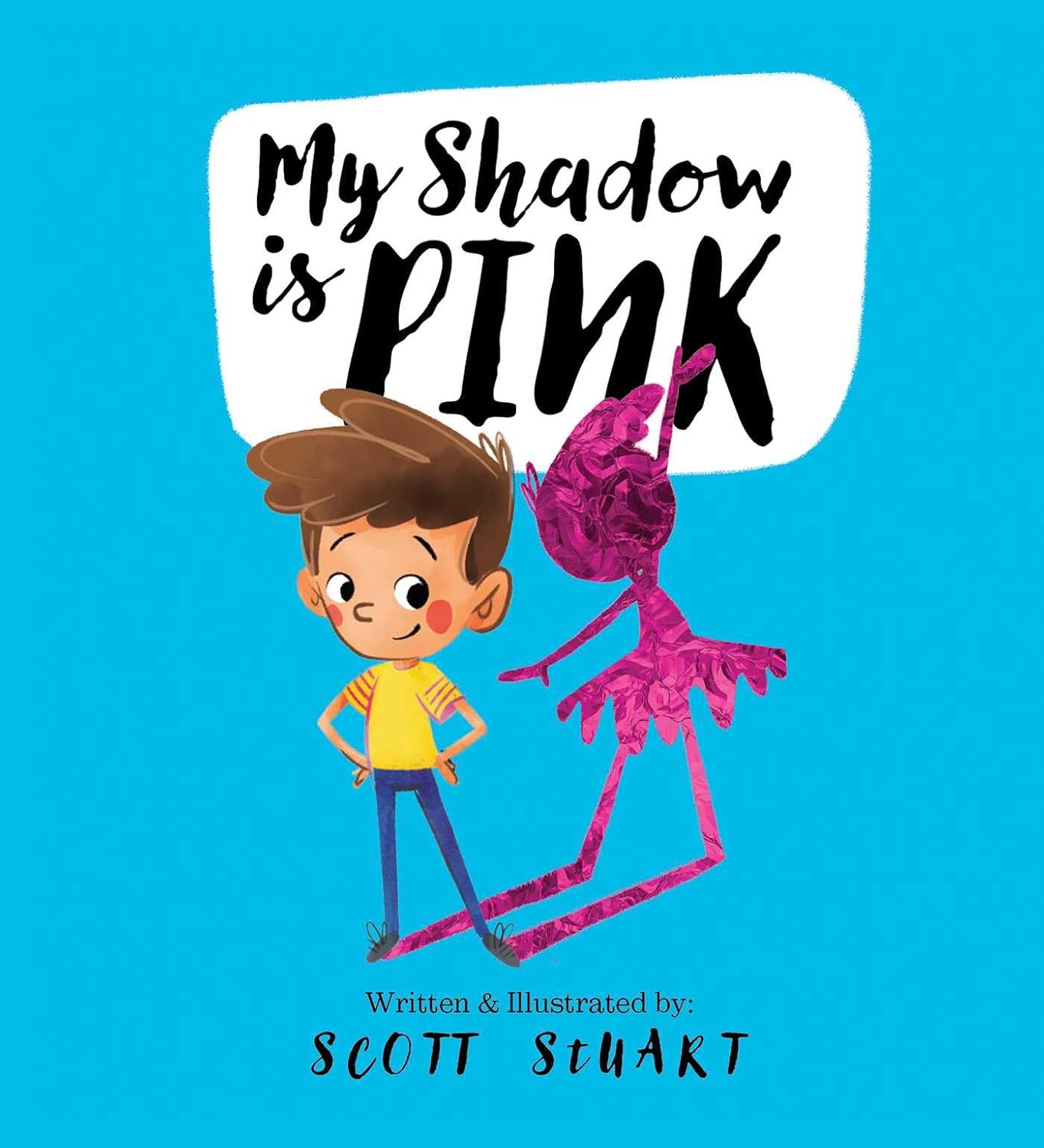
20. My Shadow Is Pink by Scott Stuart
This child’s family is sure his shadow is blue, but it’s not—it’s pink. And the shadow loves dresses and dancing, and it definitely wants to be seen as it really is.
Engage students in conversation about how others see them and how they want to be seen.
Buy it: My Shadow Is Pink
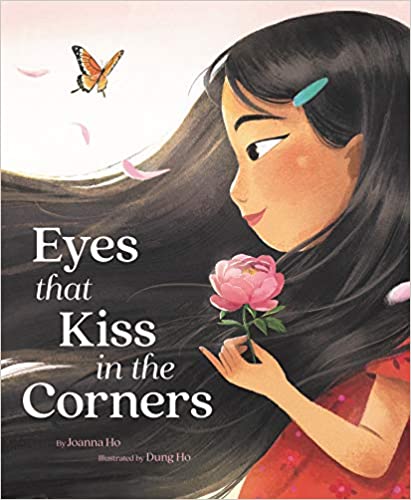
21. Eyes That Kiss in the Corners by Joanna Ho
This young girl is intensely proud of her “eyes that kiss in the corners and glow like warm tea.” She also loves that her sister, mother, and grandmother all share the same special feature.
Start a conversation about qualities that are unique about each student, and how they can embrace their uniqueness. With older students, talk about what they appreciate about their family culture.
Buy it: Eyes That Kiss in the Corners
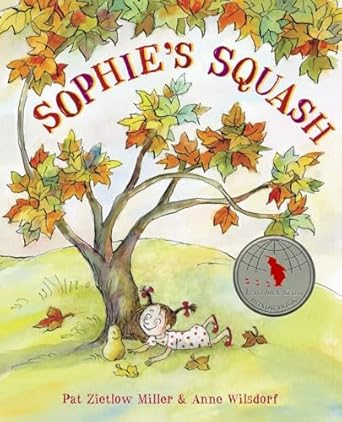
22. Sophie’s Squash by Pat Zietlow Miller and Anne Wilsdorf
When Sophie gets a squash that quickly becomes her best friend, she has to adapt when the squash starts to become, well, squishy. Use this fun story to talk about friendships and how life can change for the better when it’s time to move on.
Buy it: Sophie’s Squash
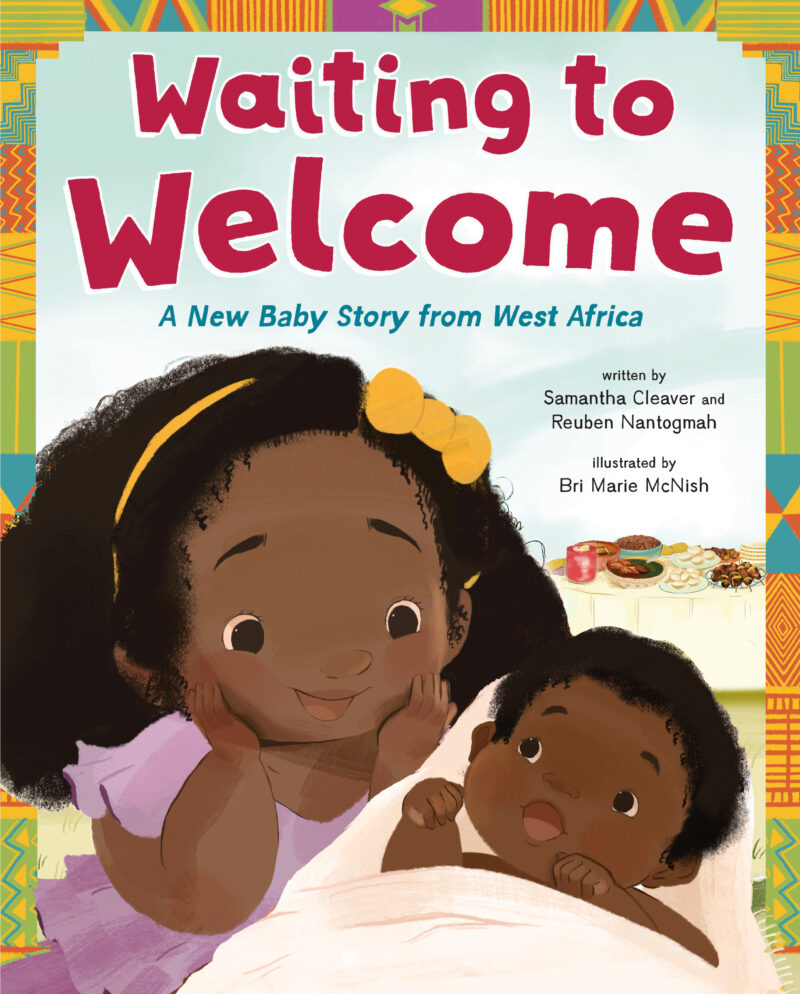
23. Waiting To Welcome by Reuben Nantogmah and Samantha Cleaver
In this West African story, Andani waits to welcome a new baby cousin. The story about waiting is helpful for students who need to learn how to wait, and it’s infused with West African culture and traditions.
Buy it: Waiting To Welcome
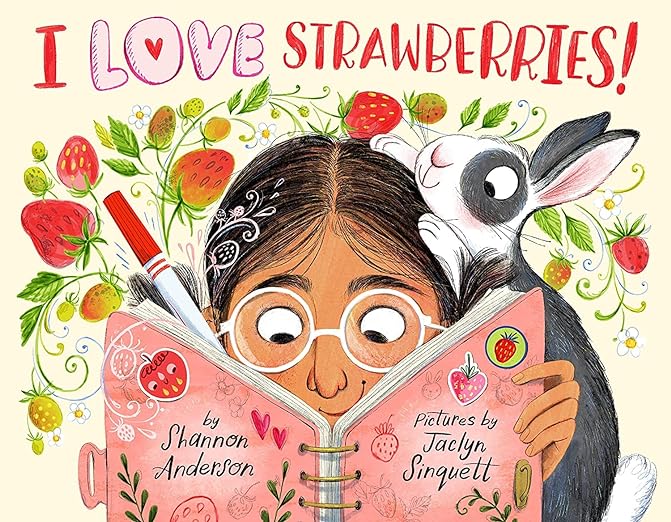
24. I Love Strawberries! by Shannon Anderson
Jolie desperately wants to grow strawberry plants in the family garden, but her parents aren’t on board. She takes on the challenges of convincing them she’s responsible enough, earning money to buy plants, and caring for the plants once she plants them. This is a good one for talking about how achieving a goal can include lots of different challenges along the way.
This book is the perfect companion to a unit on gardening, with themes of responsibility and ownership.
Buy It: I Love Strawberries!
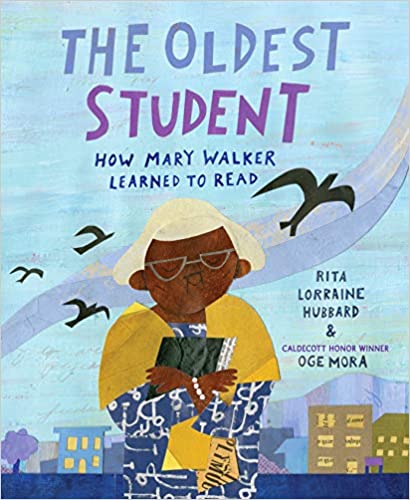
25. The Oldest Student: How Mary Walker Learned To Read by Rita Lorraine Hubbard
Mary Walker was born a slave and persevered through challenges her entire life. At age 114, she finally fulfilled her lifelong dream of learning to read. She’s an inspiration, and her story is a wonderful one to inspire students to try something new and to talk about how we are never too old to learn something new.
Buy it: The Oldest Student: How Mary Walker Learned To Read
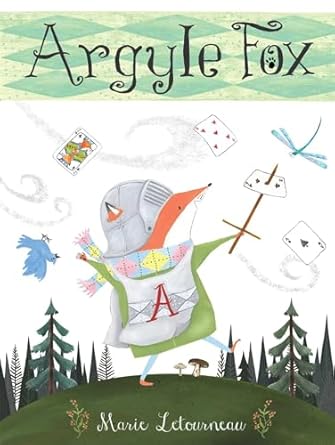
26. Argyle Fox by Marie Letourneau
Argyle Fox, with his signature style, wants to play outside on a springtime day, but the wind is wreaking havoc with his fun and games. As soon as he builds a card tower, climbs into a giant spiderweb, or takes up his pirate sword, here comes the wind, woosh!
This story is perfect for talking about being flexible when plans change and overcoming challenges.
Buy it: Argyle Fox
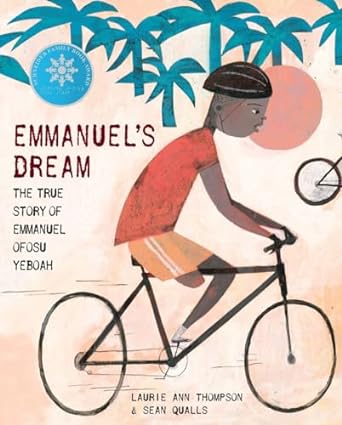
27. Emmanuel’s Dream: The True Story of Emmanuel Ofosu Yeboah by Laurie Ann Thompson
Emmanuel Ofosu Yeboah’s inspiring true story is nothing short of remarkable. Born in Ghana, West Africa, with one deformed leg, he was dismissed by most people—but not by his mother, who taught him to reach for his dreams.
A story of persistence, you can also map Emmanuel’s route, write about advocating for people with physical disabilities, and talk about how motivation impacts our success.
Buy it: Emmanuel’s Dream: The True Story of Emmanuel Ofosu Yeboah
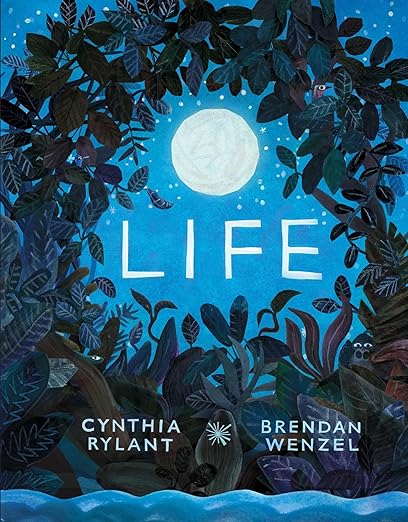
28. Life by Cynthia Rylant
There are so many wonderful things about life, both in good times and in times of struggle. This text is a great starting point to talk about optimism and hope.
Buy it: Life
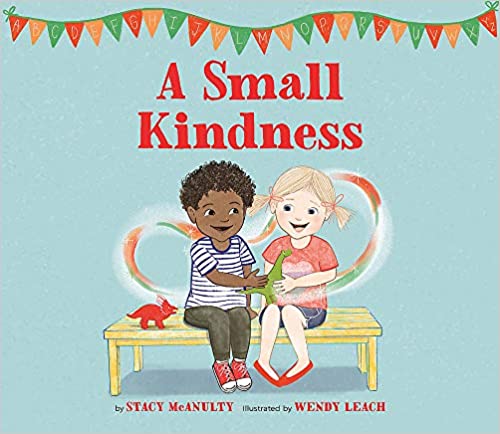
29. A Small Kindness by Stacy McAnulty
Add this to your social skills books for kids to encourage kindness in the classroom. Simple text and sweet illustrations show a diverse class spreading kindness from one person to another in lots of doable ways.
After you read the story, record the ways that kids can be kind to one another and around your school.
Buy it: A Small Kindness
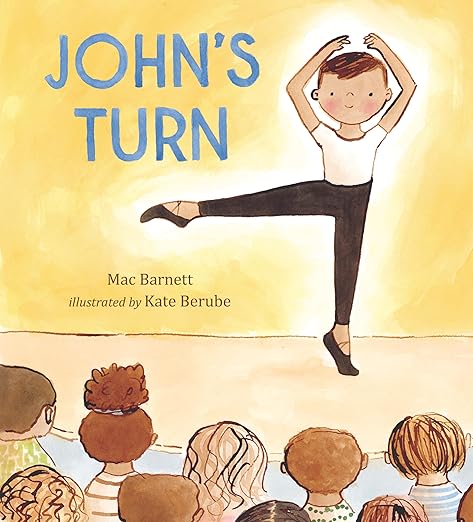
30. John’s Turn by Mac Barnett
When it’s John’s turn to perform at the school assembly, he’s nervous, but his love for dancing gives him confidence. His classmates cheer him on. This is one of our new favorite social skills books for kids to talk about encouraging others and giving each person their turn to shine.
Use this story to start a conversation about your students’ unique gifts, how you feel when you are presenting something new, and how to approach it when someone has a very specific interest.
Buy it: John’s Turn
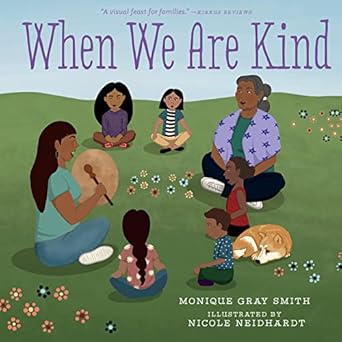
31. When We Are Kind / Nihá’ádaahwiinít’íigo by Monique Gray Smith
This bilingual English and Diné book uses art inspired by Navaho culture to show how simple kindnesses have a lasting impact. It would be lovely inspiration for a kindness-themed class book or bulletin board.
We love the simple yet powerful story and how it’s infused with Navaho culture.
Buy it: When We Are Kind / Nihá’ádaahwiinít’íigo
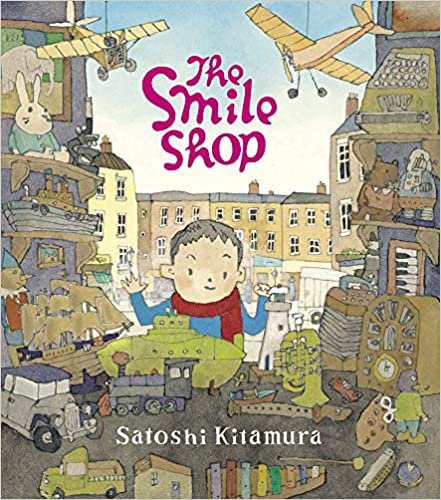
32. The Smile Shop by Satoshi Kitamura
Disappointment washes over a small boy when he drops the money he’s saved down the drain. A stranger in a photography studio chooses to make an unexpectedly kind gesture.
Buy it: The Smile Shop
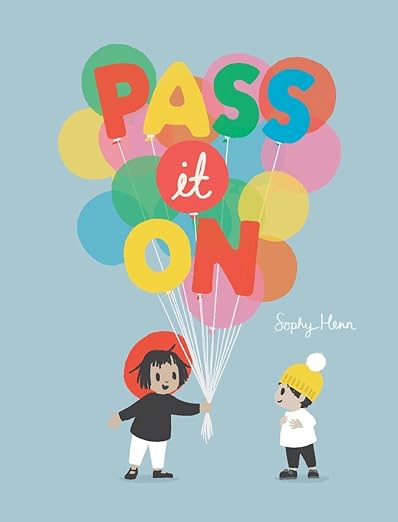
33. Pass It On by Sophy Henn
When you see something terrific, smile a smile and pass it on! If you chance upon a chuckle, hee-hee-hee and pass it on. Should you spot a thing of wonder, jump for joy and pass it on!
After you read this book, start a chain of balloons showing what your students passed on—smiles, laughter, knowledge, and on and on.
Buy it: Pass It On
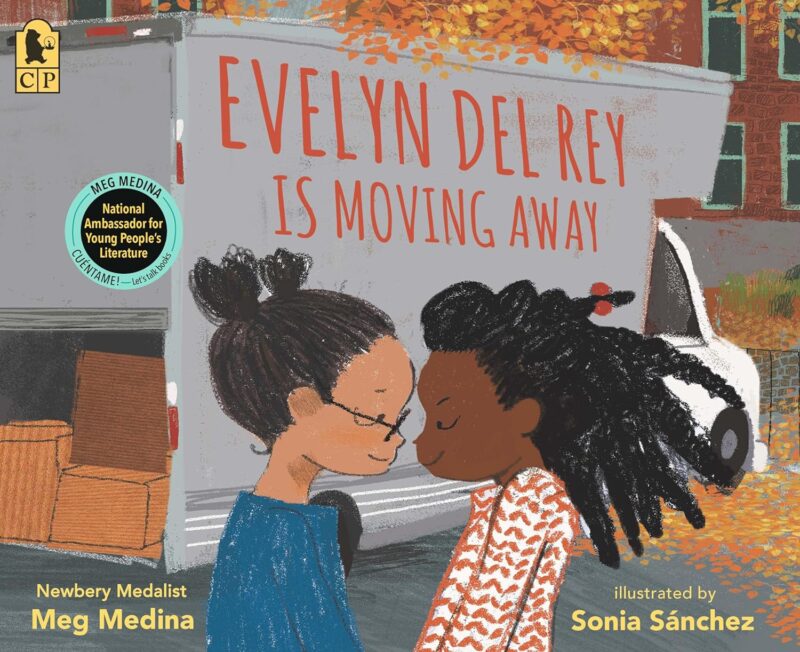
34. Evelyn Del Rey Is Moving Away by Meg Medina
Equal parts affirming and hopeful, if you need social skills books for kids to help cope with a friend moving, this is the one. Daniela can’t believe Evelyn won’t live across the street anymore. But focusing on cherished memories and keeping in touch helps her manage.
We love how honest and true this story is. It can be incorporated into a discussion about moving on, or if a student moves away mid-year.
Buy it: Evelyn Del Rey Is Moving Away
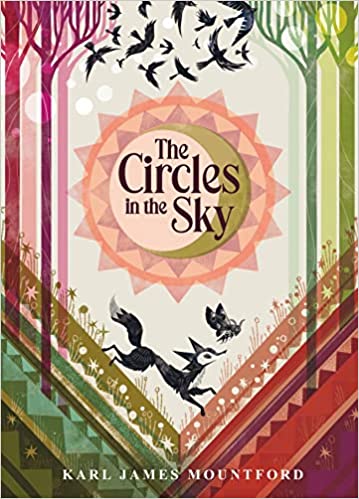
35. The Circles in the Sky by Karl James Mountford
This folktale stars Fox, who wonders about a dead bird in the forest. The book gives classrooms an inclusive and gentle way to talk about death.
Buy it: The Circles in the Sky
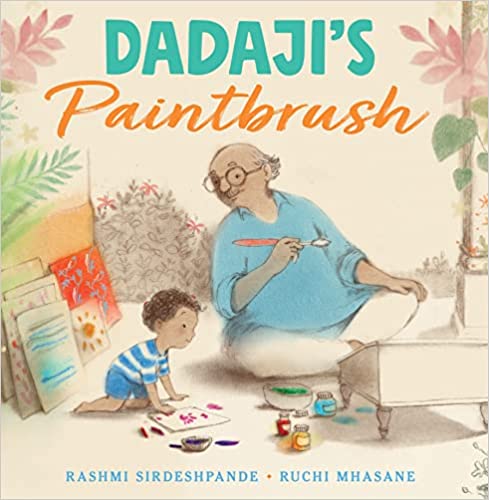
36. Dadaji’s Paintbrush by Rashmi Sirdeshpande
A boy and his grandfather connect through painting. When the grandfather dies, the boy can’t face his art for a long time. Finally, painting again helps him heal.
This is a wonderful story to read with a student who is going through grief.
Buy it: Dadaji’s Paintbrush
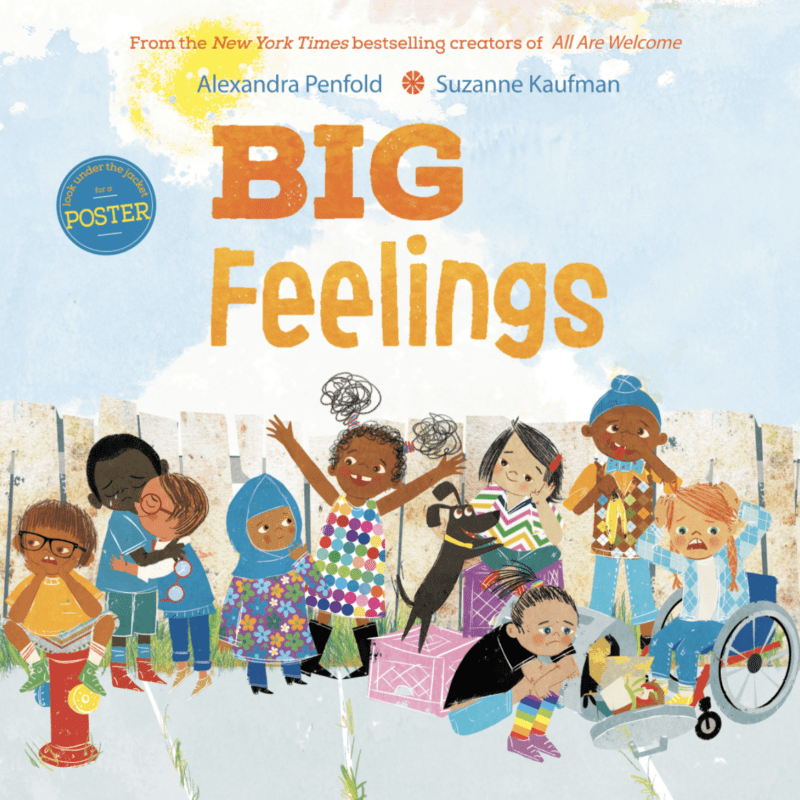
37. Big Feelings by Alexandra Penfold
An energetic group of young friends has big plans for the day—until big, hard feelings get in the way. It’ll take talking about it and being flexible to get the day back on track.
Use this text to talk about the big feelings students experience and how to handle them.
Buy it: Big Feelings
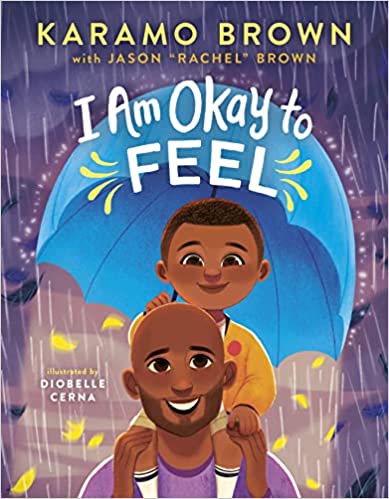
38. I Am Okay To Feel by Karamo Brown
A boy and his dad walk and talk about their feelings. We love how positive and relatable this book is for kids. Well-researched back matter gives adults lots of tools for talking with children about emotions too.
Buy it: I Am Okay To Feel
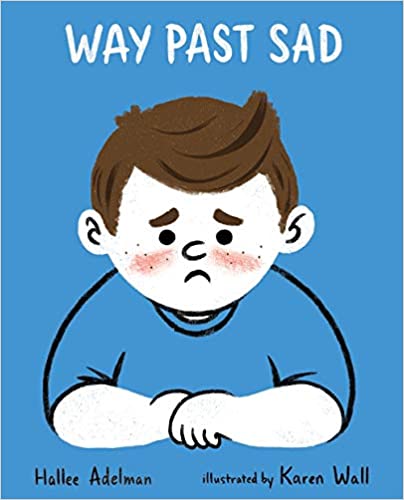
39. Great Big Feelings series by Hallee Adelman
These are invaluable social skills books that normalize big emotions for kids. Each book shares a relatable experience from a kid’s perspective and ends with a positive coping strategy. These are also great examples of personal narrative writing (with details about feelings!).
Buy it: Way Past Afraid and Way Past Sad
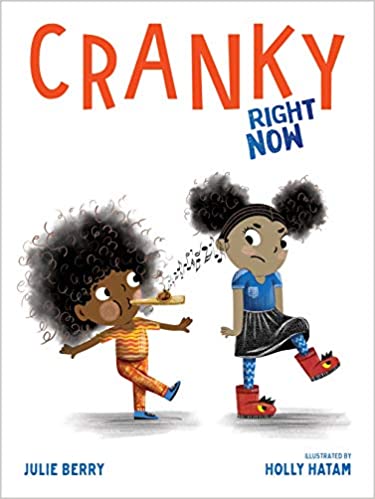
40. Cranky Right Now by Julie Berry
“I’m cranky right now and I have my reasons,” says this main character. Bad moods happen to all of us. Get kids talking about how to sit with grouchy feelings and let them pass.
Read this before students have a cranky day so you can refer back to it and discuss how they can be cranky right now.
Buy it: Cranky Right Now
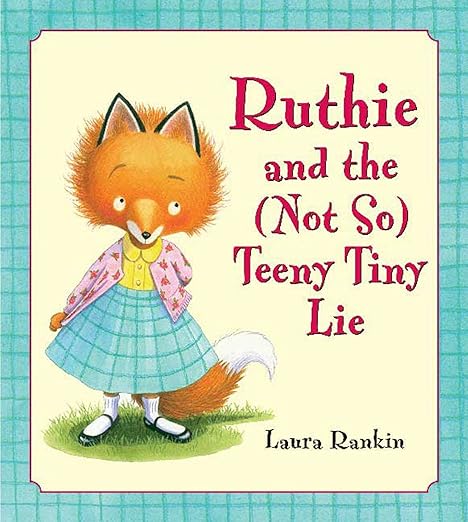
41. Ruthie and the (Not So) Teeny Tiny Lie by Laura Rankin
Ruthie loves little things—the smaller, the better. So when she finds a teeny tiny camera on the school playground one afternoon, she can hardly believe her luck. She wants to keep the camera in the worst way, but there’s one little problem: It isn’t hers.
This is a great book to talk about how to handle honesty that gives students a way to think about being honest even when it’s hard.
Buy it: Ruthie and the (Not So) Teeny Tiny Lie
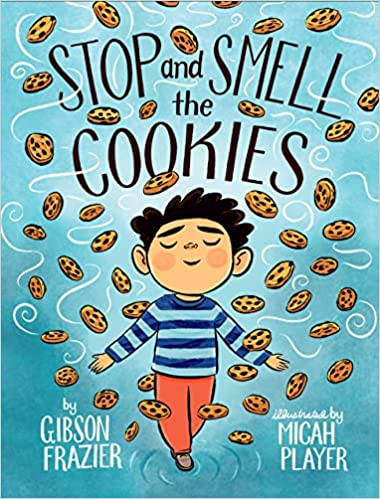
42. Stop and Smell the Cookies by Gibson Frazier
If you’re looking for a new social skills book for kids that tackles managing impulsivity in a positive and empathetic way, you need this one! Dash Gordon has big ideas, good intentions … and a hard time reining himself in. When he’s feeling down about having a tough day, his mom helps him learn a mindful breathing routine that really helps.
Introduce mindfulness, breathing, and being present with this story. Then, have students decorate cookie cut-outs with things that they like to stop and savor.
Buy it: Stop and Smell the Cookies
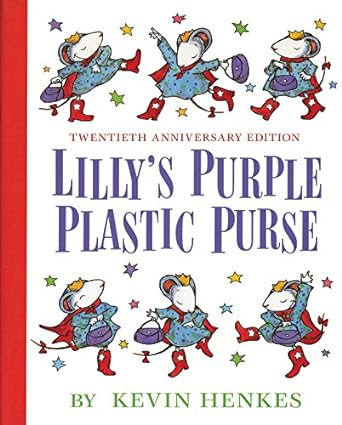
43. Lilly’s Purple Plastic Purse by Kevin Henkes
Lilly loves everything about school, especially her cool teacher, Mr. Slinger. But when Lilly brings her purple plastic purse and its treasures to school and can’t wait until sharing time, Mr. Slinger confiscates her prized possessions.
Use this story to explain boundaries and school rules.
Buy it: Lilly’s Purple Plastic Purse
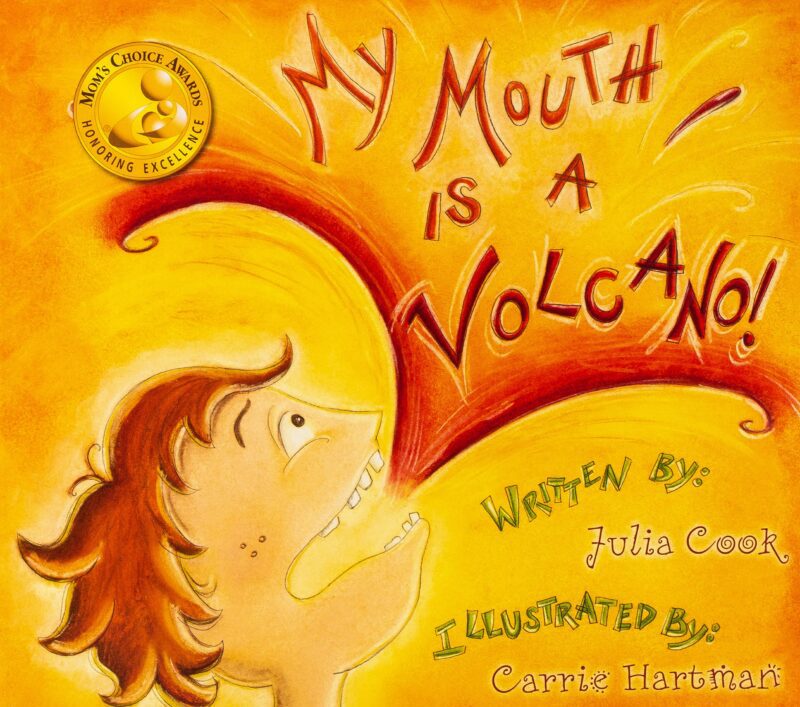
44. My Mouth Is a Volcano! by Julia Cook
All of Louis’ thoughts are very important to him. In fact, his thoughts are so important to him that when he has something to say, his words begin to wiggle, and then they do the jiggle, then his tongue pushes all of his important words up against his teeth, and he erupts, or interrupts others.
Read this story as part of a morning meeting, and then you can refer to it when students are impulsive.
Buy it: My Mouth Is a Volcano!
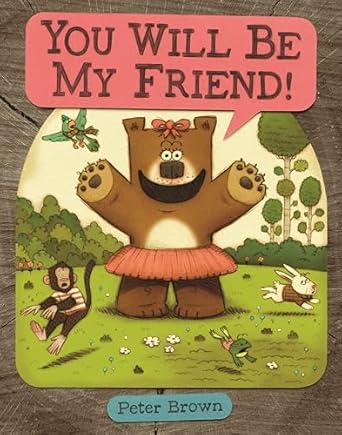
45. You Will Be My Friend! by Peter Brown
Today is the day exuberant Lucy is going to make a new friend! But she finds it’s harder than she thought—she accidentally ruins the giraffe’s breakfast and is much too big for the frogs’ pond.
This is a great book to talk about how to make new friends.
Buy it: You Will Be My Friend!
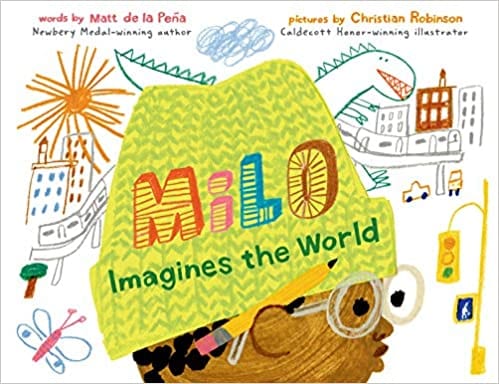
46. Milo Imagines the World by Matt de la Peña
Milo feels like a “shook-up soda” as he takes the subway to visit his mom, who is incarcerated. He copes with his feelings by imagining the lives of his fellow passengers—and imagines the time when his family will be together again.
This is a great book to talk about how what we imagine might not match up with reality, as well as building empathy.
Buy it: Milo Imagines the World
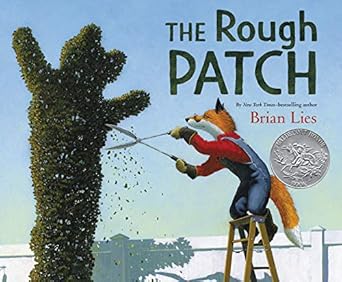
47. The Rough Patch by Brian Lies
When the main character’s pet dog dies, he can’t stand to have anything pretty around him. His garden becomes overgrown and ugly, reflecting his anger. But after a pumpkin persists and he takes it to the county fair, will he have a change of heart when he has the option to choose a new puppy?
This story and the powerful illustrations are a great discussion starter for how we feel after we lose someone, and how we can start feeling hopeful again.
Buy it: The Rough Patch
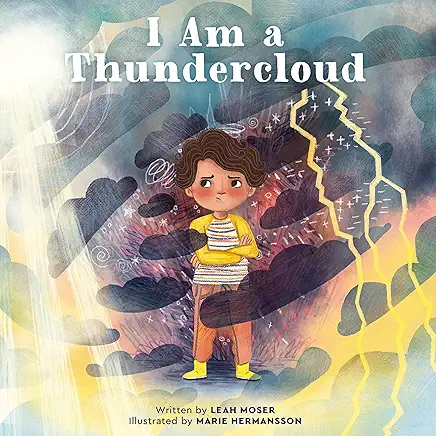
48. I Am a Thundercloud by Leah Moser
In this first-person story, a girl experiences a bad day and the big feelings that come with it as a thunderstorm. Use this book to start exploring and describing how we experience big feelings, especially negative feelings that can overwhelm young kids.
Buy it: I Am a Thundercloud
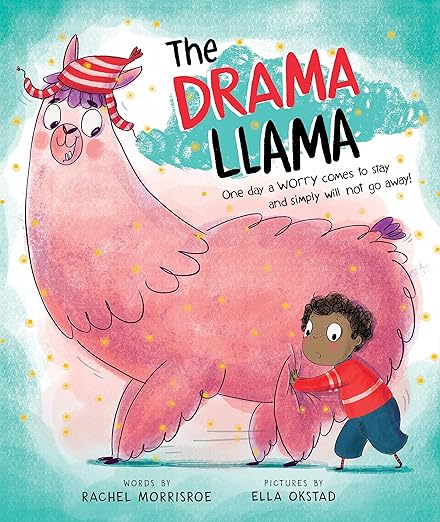
49. The Drama Llama by Rachel Morrisroe
A boy’s anxiety shows up as a llama, and after some comedic endeavors, the boy talks to an adult to share his worries and fears. This is a fun way to discuss anxiety with students and encourage them to seek help when their feelings feel, well, like too much drama.
Buy it: The Drama Llama
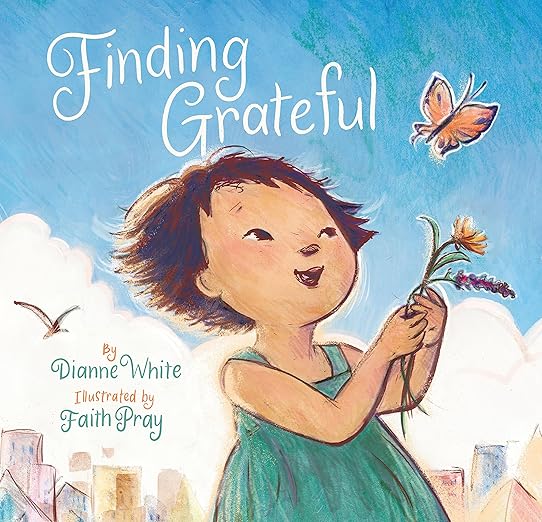
50. Finding Grateful by Dianne White
This lyrical text explores gratitude and encourages students (and adults) to take time to pause, reflect, and find positivity and gratitude in the little moments. Use this book to increase mindfulness during morning meeting or brain breaks.
Buy it: Finding Grateful
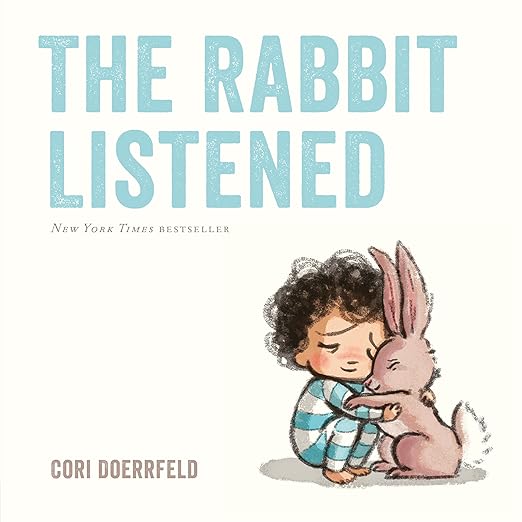
51. The Rabbit Listened by Cori Doerrfeld
When Taylor’s tower comes crashing down, all the animals come to help. They each have their own idea, but all Taylor needs is someone to listen. This story is brilliant in its simplicity, teaching us that sometimes a listening ear is the best way we can help.
Use this book before things come crashing down in your classroom to help students understand ways to help a friend who is frustrated.
Buy it: The Rabbit Listened
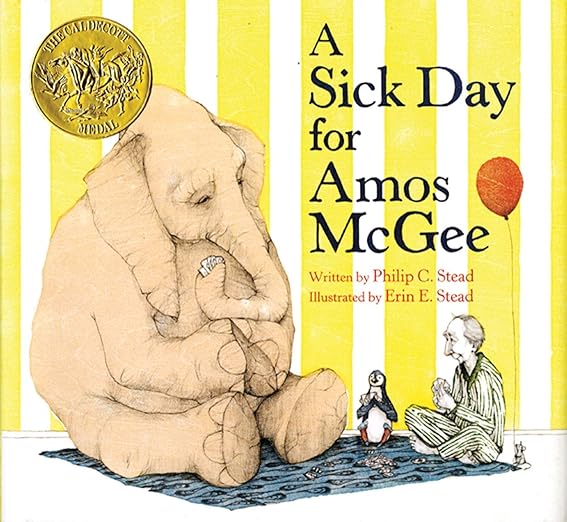
52. A Sick Day for Amos McGee by Philip C. Stead
This story, about how zookeeper Amos McGee’s friends support him when he’s sick, is endearing and warm. It’s about how when we give, we get more in return.
Read this book and talk about what friendship mean to each character. Then, retell the story using puppets.
Buy it: A Sick Day for Amos McGee
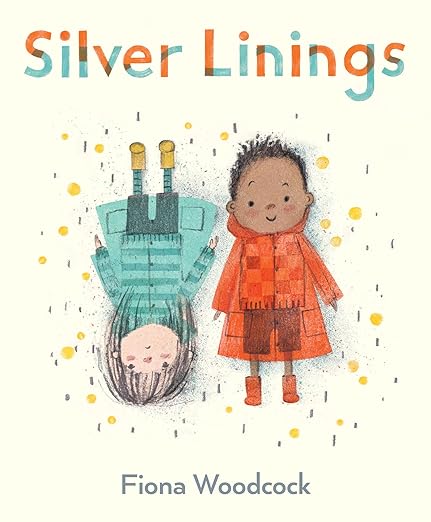
53. Silver Linings by Fiona Woodcock
If you have a student who needs to build resilience and empathy, this book is for you. Pip gets disappointed when things don’t go as planned, and Parker is there to help lift her spirits and help her see things from another perspective. But when Parker has a problem, will Pip help him out?
Use this friendship book to teach empathy and resilience.
Buy it: Silver Linings
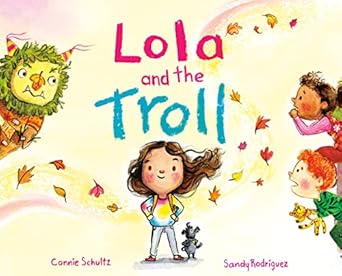
54. Lola and the Troll by Connie Schultz
When a troll-like figure teases Lola, she tries to change to avoid the attention. Unfortunately, the loses herself in the process. Lola stands up to the troll and finds that it’s a boy who’s looking for attention. Lola forgives the boy, who apologizes, and they start a friendship.
Use this book to discuss how to respond to unwanted attention, and to build empathy and stay true to yourself.
Buy it: Lola and the Troll
Plus, check out Books To Teach Kids About Mindfulness.
Want more book lists and classroom ideas be sure to subscribe to our newsletters, you might also like.
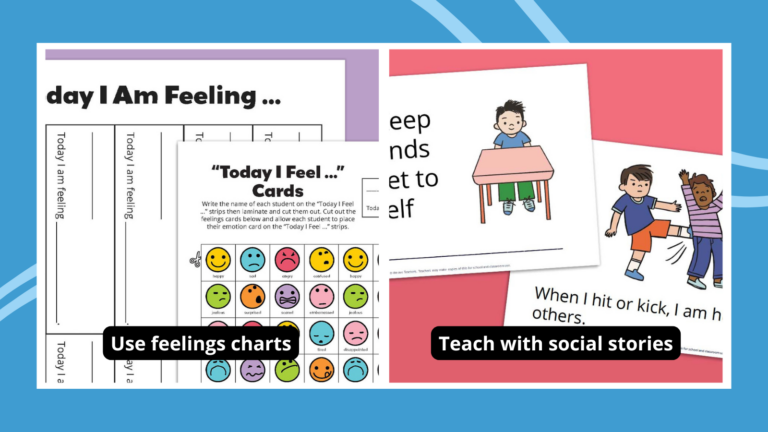
56 Fun SEL Activities for Preschool and Kindergarten
Social-emotional skills are the building blocks for later success. Continue Reading
Copyright © 2024. All rights reserved. 5335 Gate Parkway, Jacksonville, FL 32256
- Children's Books
- Education & Reference

Enjoy fast, free delivery, exclusive deals, and award-winning movies & TV shows with Prime Try Prime and start saving today with fast, free delivery
Amazon Prime includes:
Fast, FREE Delivery is available to Prime members. To join, select "Try Amazon Prime and start saving today with Fast, FREE Delivery" below the Add to Cart button.
- Cardmembers earn 5% Back at Amazon.com with a Prime Credit Card.
- Unlimited Free Two-Day Delivery
- Streaming of thousands of movies and TV shows with limited ads on Prime Video.
- A Kindle book to borrow for free each month - with no due dates
- Listen to over 2 million songs and hundreds of playlists
- Unlimited photo storage with anywhere access
Important: Your credit card will NOT be charged when you start your free trial or if you cancel during the trial period. If you're happy with Amazon Prime, do nothing. At the end of the free trial, your membership will automatically upgrade to a monthly membership.
Return this item for free
We offer easy, convenient returns with at least one free return option: no shipping charges. All returns must comply with our returns policy.
- Go to your orders and start the return
- Select your preferred free shipping option
- Drop off and leave!
Sorry, there was a problem.
0.69 mi | SANTA CLARASanta Clara 95050

Download the free Kindle app and start reading Kindle books instantly on your smartphone, tablet, or computer - no Kindle device required .
Read instantly on your browser with Kindle for Web.
Using your mobile phone camera - scan the code below and download the Kindle app.

Image Unavailable

- To view this video download Flash Player

Problem Solving Strategies for Elementary-School Math Paperback – June 24, 2020
Purchase options and add-ons.
The best way to learn math is by problem solving, but the challenge is that most elementary students don't know how to start thinking about a math problem that they haven't seen before. This book is especially designed to overcome this challenge by teaching seven basic problem solving strategies. The book contains more than 100 challenging problems that are suitable for elementary-school students, along with their step-by-step solution to help the reader master these strategies. This book will help you: - Learn seven useful problem solving strategies that can be used in many challenging math problems. - Ace your math tests in school, even the challenge problems that your teacher gives! - Get prepared for various math contests and education programs for gifted students, such as the GATE and Math Kangaroo. - Become an independent learner via the step-by-step instructions of this book. - Stay ahead of the curriculum when transitioning into higher grades and the middle school. - Become a creative thinker who can succeed in STEM fields. - Turn into a life-long math enthusiast who enjoys thinking and problem solving.
- Reading age 7 - 12 years
- Print length 124 pages
- Language English
- Grade level 2 - 6
- Dimensions 6 x 0.26 x 9 inches
- Publisher Now Publishers
- Publication date June 24, 2020
- ISBN-10 1680839845
- ISBN-13 978-1680839845
- See all details
Product details
- Publisher : Now Publishers (June 24, 2020)
- Language : English
- Paperback : 124 pages
- ISBN-10 : 1680839845
- ISBN-13 : 978-1680839845
- Reading age : 7 - 12 years
- Grade level : 2 - 6
- Item Weight : 6.2 ounces
- Dimensions : 6 x 0.26 x 9 inches
- #3,644 in Children's Math Books (Books)
Customer reviews
- 5 star 4 star 3 star 2 star 1 star 5 star 56% 23% 21% 0% 0% 56%
- 5 star 4 star 3 star 2 star 1 star 4 star 56% 23% 21% 0% 0% 23%
- 5 star 4 star 3 star 2 star 1 star 3 star 56% 23% 21% 0% 0% 21%
- 5 star 4 star 3 star 2 star 1 star 2 star 56% 23% 21% 0% 0% 0%
- 5 star 4 star 3 star 2 star 1 star 1 star 56% 23% 21% 0% 0% 0%
Customer Reviews, including Product Star Ratings help customers to learn more about the product and decide whether it is the right product for them.
To calculate the overall star rating and percentage breakdown by star, we don’t use a simple average. Instead, our system considers things like how recent a review is and if the reviewer bought the item on Amazon. It also analyzed reviews to verify trustworthiness.
- Sort reviews by Top reviews Most recent Top reviews
Top reviews from the United States
There was a problem filtering reviews right now. please try again later..
- Amazon Newsletter
- About Amazon
- Accessibility
- Sustainability
- Press Center
- Investor Relations
- Amazon Devices
- Amazon Science
- Sell on Amazon
- Sell apps on Amazon
- Supply to Amazon
- Protect & Build Your Brand
- Become an Affiliate
- Become a Delivery Driver
- Start a Package Delivery Business
- Advertise Your Products
- Self-Publish with Us
- Become an Amazon Hub Partner
- › See More Ways to Make Money
- Amazon Visa
- Amazon Store Card
- Amazon Secured Card
- Amazon Business Card
- Shop with Points
- Credit Card Marketplace
- Reload Your Balance
- Amazon Currency Converter
- Your Account
- Your Orders
- Shipping Rates & Policies
- Amazon Prime
- Returns & Replacements
- Manage Your Content and Devices
- Recalls and Product Safety Alerts
- Registry & Gift List
- Conditions of Use
- Privacy Notice
- Consumer Health Data Privacy Disclosure
- Your Ads Privacy Choices

- ELEMENTARY TEACHING , SOCIAL EMOTIONAL LEARNING IN THE CLASSROOM
SEL Problem Solving: How to Teach Students to be Problem Solvers in 2024
If you are an elementary teacher looking to learn how to help your students solve problems independently, then you found the right place! Problem solving skills prepare kids to face dilemmas and obstacles with confidence. Students who have problem solving skills are more independent than students who do not. In this post, we’ll go into detail about what problem solving skills are and why they are important. In addition, we’ll share tips and ideas for how to teach problem solving skills in an elementary classroom setting. Read all about helping students solve problems in and out of the classroom below!
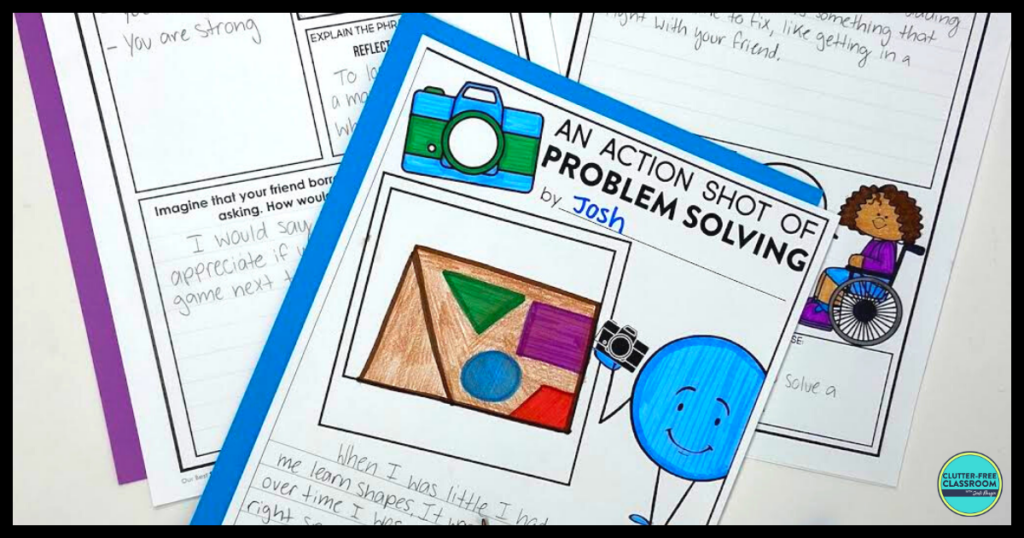
What Does Solving Problems Mean?
Solving problems means brainstorming solutions to the problem after identifying and analyzing the problem and why it occurred. It is important to brainstorm different solutions by looking at all angles of the problem and creating a list of possible solutions. Then you can pick the solution that fits the best.
Why is it Important for Kids to Solve Problems?
It is important for kids to solve problems by brainstorming different solutions so that they can pick the best solution. This teaches them that there can be many different solutions to a problem and they vary in effectiveness. Teaching kids to solve problems helps them be independent in making choices.
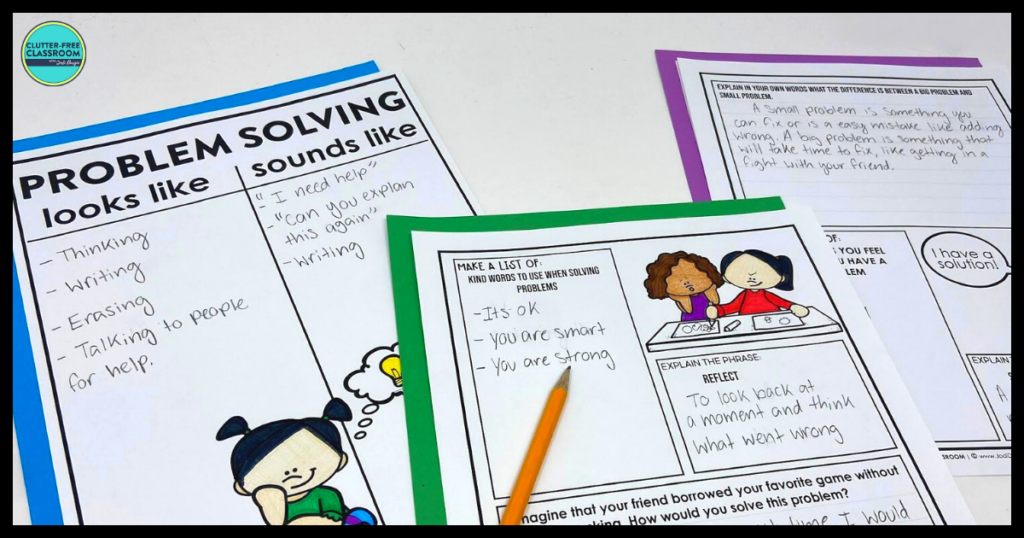
How Do I Know If I Need to Teach Problem Solving in My Classroom?
The students in your 1st, 2nd, 3rd, 4th or 5th grade classroom would benefit from problem solving lessons and activities if any of these statements are true:
- Student confidence is lacking.
- Students are getting into conflicts with each other.
- They come to you to solve problems they could have solved on their own.
- Students are becoming easily frustrated.
- Recess is a hard time for your class.

5 Reasons To Promote Problem Solving In Your Elementary Classroom
Below are 5 reasons to promote problem solving in your elementary classroom.
1. Problem solving builds confidence
Students’ confidence will grow as they learn problem solving skills because they will believe in their own abilities to solve problems. The more experience they have using their problem solving skills, the more confident they will become. Instead of going to others to solve problems for them, they will look inside themselves at their own abilities.
2. Problem solving creates stronger friendships
Students who can problem solve create stronger friendships because they won’t let arguments or running into issues stop them from being friends with a person. Instead they work with their friend to get through their problem together and get through the bump in the road, instead of giving up on the friendship.
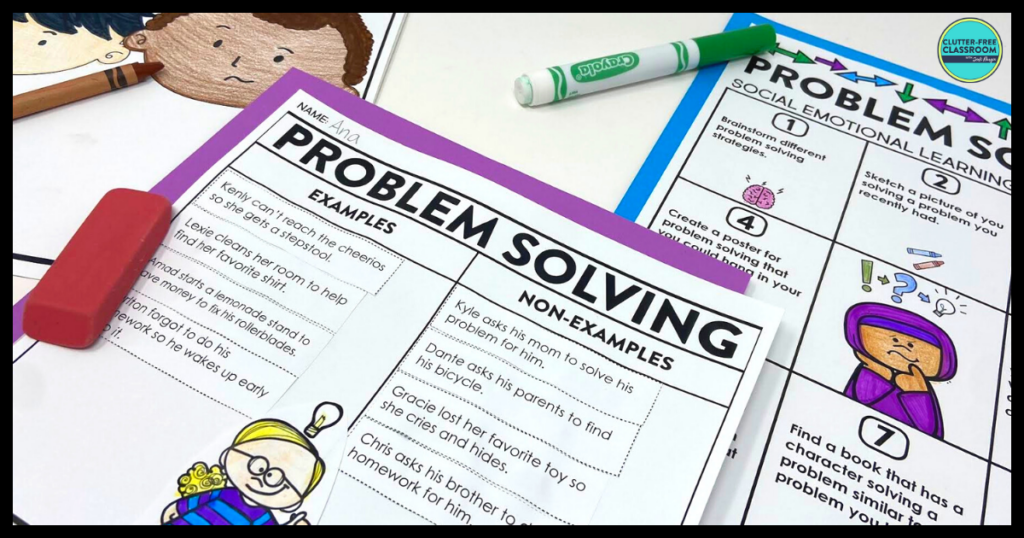
3. Problem solving skills increase emotional intelligence
Having emotional intelligence is incredibly helpful when solving problems. As students learn problem solving skills, they will use emotional intelligence to think about the feelings of others involved in the conflict. They will also think about how the problem is affecting others.
4. Problem solving skills create more independent kids
Students who can problem solve become more independent than kids who cannot because they will try to solve their problems first instead of going to an adult. They won’t look at adults as being the only people who can solve their problems. They will be equipped with the skill set to tackle the problems they are experiencing by themselves or with peers. However, it is important to make the distinction with kids between problems they can solve on their own and problems they need an adult for.
5. Teaching problem solving skills causes students to be more reflective
Reflecting is part of the problem solving process. Students need to reflect on the problem and what caused it when deciding how to solve the problem. Once students choose the best solution to their problem, they need to reflect on whether or not the solution was effective.
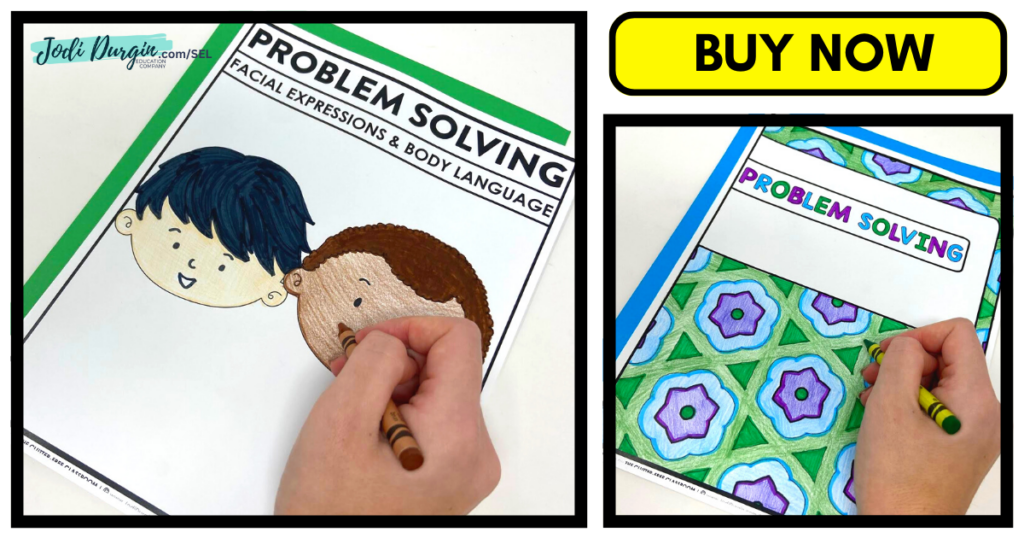
5 Tips and Ideas for Teaching Problem Solving Skills
Below are tips and ideas for teaching problem solving.
1. Read Aloud Picture Books about Problem Solving Skills
Picture books are a great way to introduce and teach an SEL topic. It gets students thinking about the topic and activating their background knowledge. Check out this list of picture books for teaching problem solving skills !
2. Watch Videos about Problem Solving Skills
There are tons of free online videos out there that promote social emotional learning. It’s a fun and engaging way to teach SEL skills that your students will enjoy. Check out these videos for teaching problem solving skills !
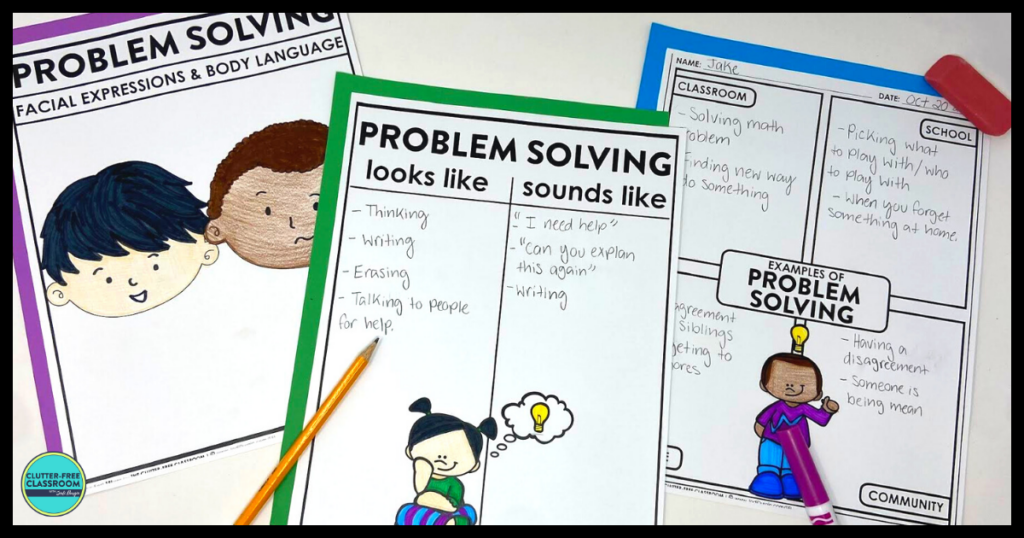
3. Explicitly Teach Vocabulary Related to Problem Solving Skills
Vocabulary words can help students develop understanding of problem solving and create connections through related words. Our problem solving SEL unit includes ten vocabulary cards with words related to the SEL topic. It is important for students to be able to see, hear, and use relevant vocabulary while learning. One idea for how to use them is to create an SEL word wall as students learn the words.
4. Provide Practice Opportunities
When learning any skill, students need time to practice. Social emotional learning skills are no different! Our problem solving SEL unit includes scenario cards, discussion cards, choice boards, games, and much more. These provide students with opportunities to practice the skills independently, with partners or small groups, or as a whole class.
5. Integrate Other Content Areas
Integrating other content areas with this topic is a great way to approach this SEL topic. Our problem solving SEL unit includes reading, writing, and art activities.
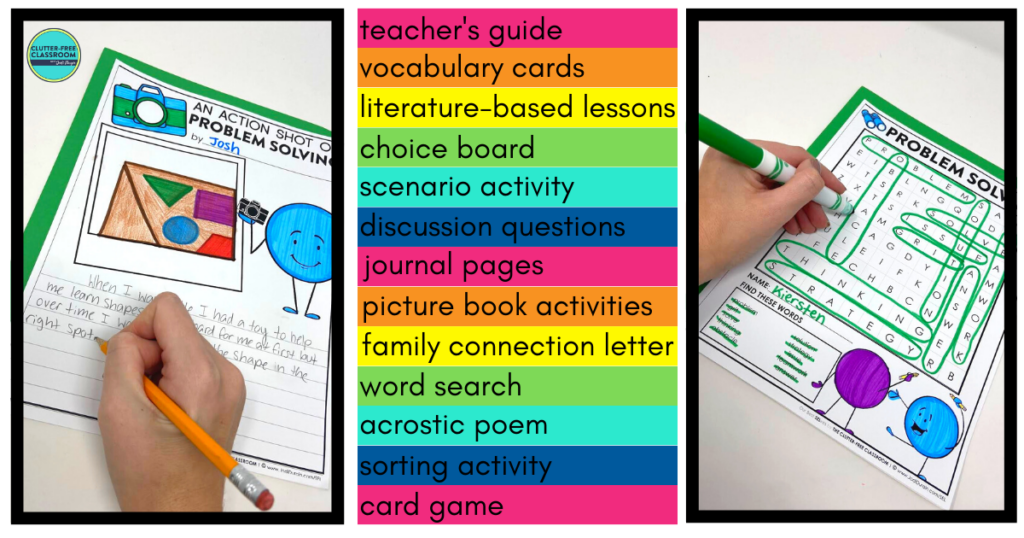
Skills Related to Problem Solving
Problem-solving, in the context of social emotional learning (SEL) or character education, refers to the process of identifying, analyzing, and resolving challenges or obstacles in a thoughtful and effective manner. While “problem-solving” is the commonly used term, there are other words and phrases that can convey a similar meaning. These alternative words highlight different aspects of finding solutions, critical thinking, and decision-making. Here are some other words used in the context of problem-solving:
- Troubleshooting: Identifying and resolving problems or difficulties by analyzing their root causes.
- Critical thinking: Applying logical and analytical reasoning to evaluate and solve problems.
- Decision-making: Considering options and making choices to address and solve problems effectively.
- Analytical problem-solving: Using data, evidence, and systematic thinking to address challenges and find solutions.
- Creative problem-solving: Generating innovative ideas and approaches to overcome obstacles and find solutions.
- Resourcefulness: Finding effective solutions using available resources and thinking outside the box.
- Solution-oriented: Focusing on identifying and implementing solutions rather than dwelling on problems.
- Adaptability: Adjusting strategies and approaches to fit changing circumstances and overcome challenges.
- Strategic thinking: Planning and organizing actions to achieve desired outcomes and resolve problems.
- Systems thinking: Considering the interconnectedness and relationships between different elements when solving problems.
These terms encompass the concept of problem-solving and reflect the qualities of critical thinking, decision-making, and finding effective solutions within the context of social emotional learning (SEL) or character education.
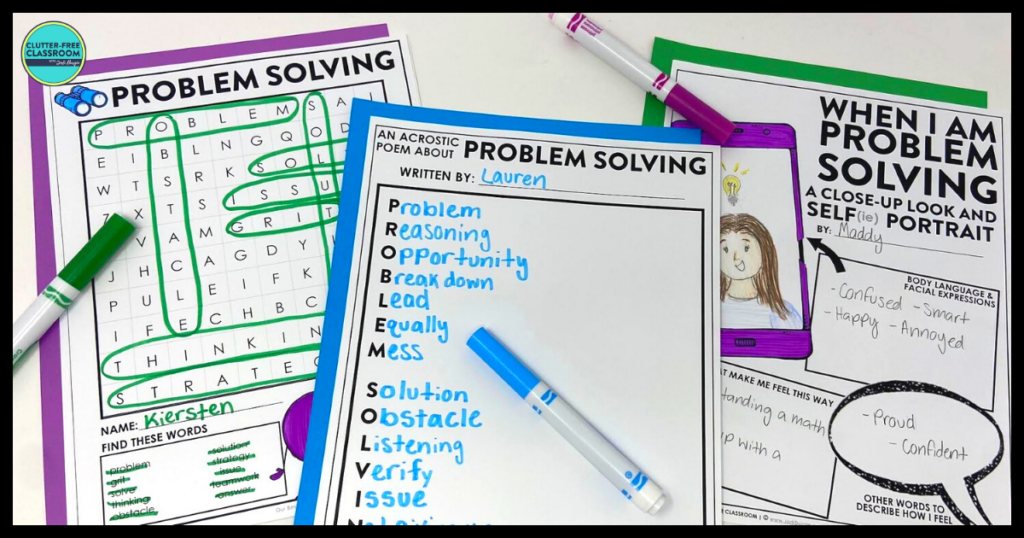
Download the SEL Activities
Click an image below to either get this individual problem solving unit or get ALL 30 SEL units
In closing, we hope you found this information about teaching problem solving skills helpful! If you did, then you may also be interested in these posts.
- SEL Best Practices for Elementary Teachers
- Social Emotional Learning Activities
- 75+ SEL Videos for Elementary Teachers
- Teaching SEL Skills with Picture Books
- How to Create a Social Emotional Learning Environment
You might also like...
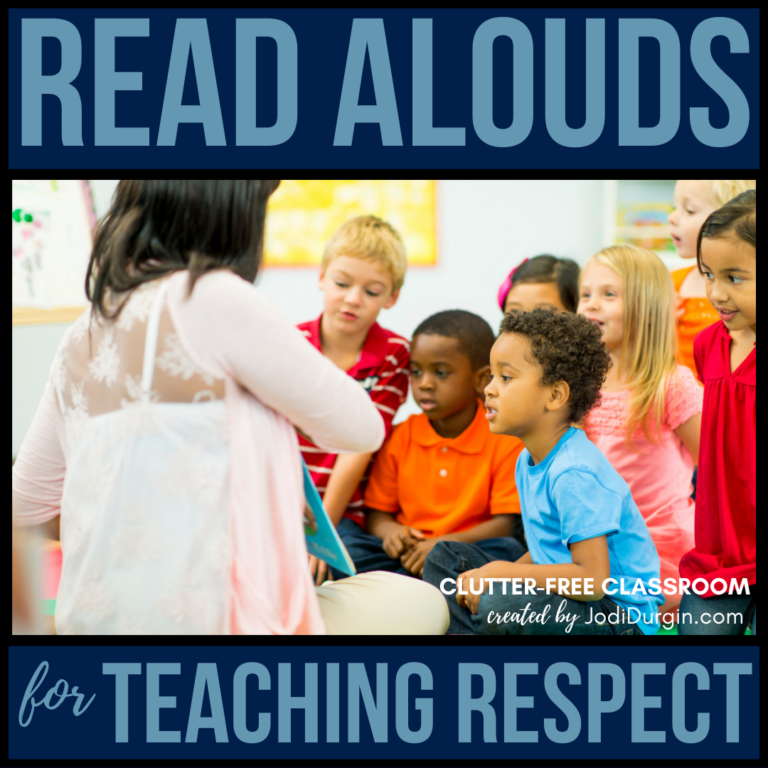
5 Read Alouds about Respect for Elementary Teachers in 2024
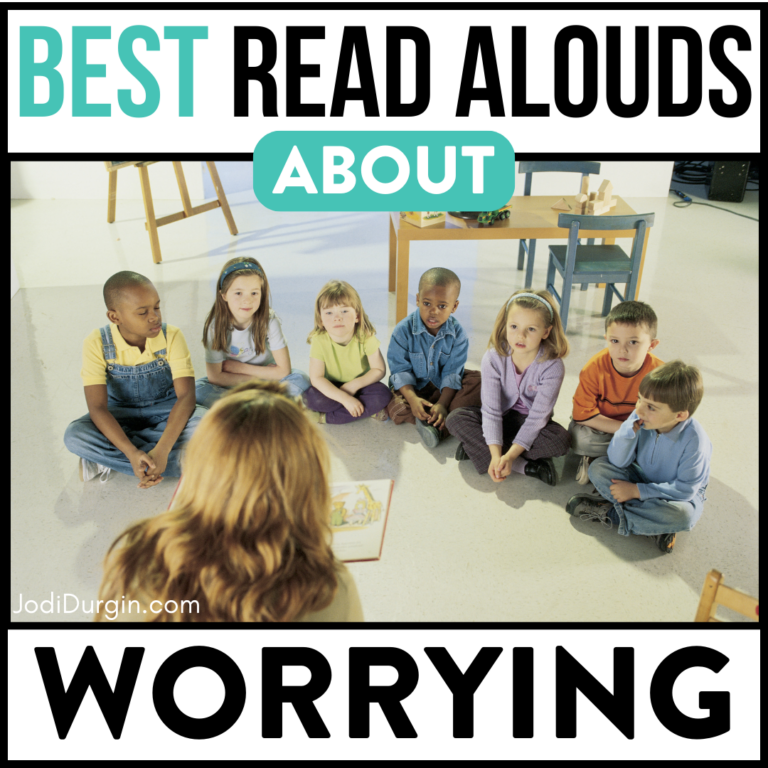
8 Children’s Books about Worrying for Elementary Teachers in 2024

8 Self Regulation Books for Elementary Teachers – 2024
Join the email club.

- CLUTTER-FREE TEACHER CLUB
- FACEBOOK GROUPS
- EMAIL COMMUNITY
- OUR TEACHER STORE
- ALL-ACCESS MEMBERSHIPS
- OUR TPT SHOP
- JODI & COMPANY
- TERMS OF USE
- Privacy Policy
Top 10 Problem Solving Middle Grade Books
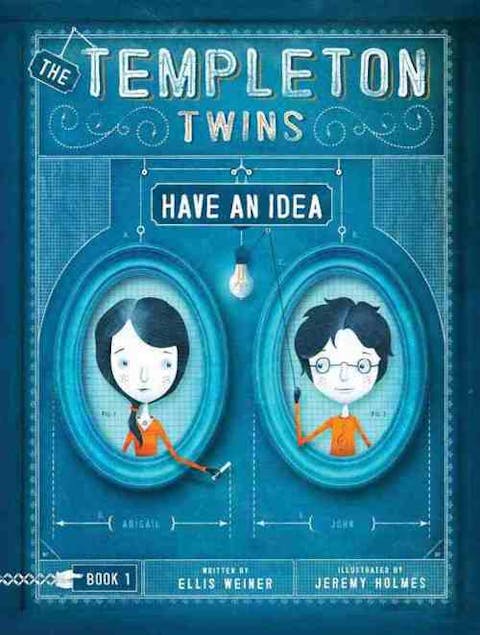
Whenever my son encounters a problem—be it building block pieces that won't fit together the way he wants them to, a door he can't open, or a bucket on the playground his friend won't share—my mom heart immediately leaps to help him. I want to solve his problems for him, to help him be happy and make life easy . . . but the truth I know deep down is that if I always help him, I'm not helping him at all. By allowing him opportunities to problem solve himself when a problem of appropriate difficulty arises, while it may be painful for both of us at the moment, I know he's developing crucial problem-solving skills, and problem-solving is one of those essential skills that, once developed, will serve children their entire lifetime. To help showcase different techniques for problem-solving, and hone metacognition for kids, we've collected here on this list the very best books for teaching problem solving through children's literature! Reading these problem-solving books with your child provides an unparalleled opportunity to have shared references to help you as a team through a learning moment when it arises, plus you'll get to enjoy the bonding moment of reading together! Some books are absolute classics, such as "The Little Mouse, the Red Ripe Strawberry and the Big Hungry Bear," that take a more humorous approach to problem-solving; others are popular titles you may be familiar with that take a more direct approach to flexible thinking techniques, such as New York Times Bestseller "What To Do With a Problem"; and some are hidden gems you may be discovering for the first time. There are books that teach social problem solving, highlight out-of-the-box thinking in innovation, speak to the role of teamwork in overcoming obstacles, and address the very real possibility that problem-solving may be needed to cope with failure at many stages of the process. Because problem solving is important in all of life's stages, this list includes board, picture and chapter books. Board books are best for infants and toddlers. Picture books are excellent for toddlers and also include stories for kindergarten and early elementary students (although we think picture books are great for all ages!). Chapter books are great for elementary- and middle school-age readers. If you know your target age group, feel free to filter to a single category, or just browse the entire list. Without further ado, enjoy this problem-solving list, and let us know what titles you would include!
Problem Solving .css-1d7zhjm{display:inline;-webkit-appearance:none;-moz-appearance:none;-ms-appearance:none;appearance:none;-webkit-align-items:center;-webkit-box-align:center;-ms-flex-align:center;align-items:center;-webkit-box-pack:center;-ms-flex-pack:center;-webkit-justify-content:center;justify-content:center;-webkit-user-select:none;-moz-user-select:none;-ms-user-select:none;user-select:none;vertical-align:middle;outline:2px solid transparent;outline-offset:2px;line-height:inherit;font-weight:500;transition-property:var(--chakra-transition-property-common);transition-duration:var(--chakra-transition-duration-normal);height:auto;min-width:3rem;-webkit-padding-start:var(--chakra-space-6);padding-inline-start:var(--chakra-space-6);-webkit-padding-end:var(--chakra-space-6);padding-inline-end:var(--chakra-space-6);background:none;color:inherit;margin:0px;padding:0.3em;padding-left:0px;border-bottom:2px solid;border-color:hsl(24,100%,62%);border-radius:0px;min-height:auto;font-size:inherit;position:relative;top:-2px;padding-top:0px;padding-bottom:0px;white-space:break-spaces;text-align:left;}.css-1d7zhjm:focus-visible,.css-1d7zhjm[data-focus-visible]{box-shadow:var(--chakra-shadows-outline);}.css-1d7zhjm:disabled,.css-1d7zhjm[disabled],.css-1d7zhjm[aria-disabled=true],.css-1d7zhjm[data-disabled]{opacity:0.4;cursor:not-allowed;box-shadow:var(--chakra-shadows-none);}.css-1d7zhjm:active,.css-1d7zhjm[data-active]{box-shadow:inherit;} Middle Grade Books .css-1hzyiq5{display:-webkit-inline-box;display:-webkit-inline-flex;display:-ms-inline-flexbox;display:inline-flex;-webkit-align-self:center;-ms-flex-item-align:center;align-self:center;-webkit-flex-shrink:0;-ms-flex-negative:0;flex-shrink:0;-webkit-margin-start:0.5rem;margin-inline-start:0.5rem;} .css-1qq679y{z-index:10;} .css-104bggj{position:relative;display:-webkit-box;display:-webkit-flex;display:-ms-flexbox;display:flex;-webkit-flex-direction:column;-ms-flex-direction:column;flex-direction:column;--popper-bg:var(--chakra-colors-white);background:var(--popper-bg);--popper-arrow-bg:var(--popper-bg);--popper-arrow-shadow-color:var(--chakra-colors-gray-200);width:332px;border:1px solid;border-color:inherit;border-radius:var(--chakra-radii-md);box-shadow:var(--chakra-shadows-sm);z-index:inherit;max-height:calc(100vh - var(--fixed-height) - 4px);overflow-y:auto;font-size:var(--chakra-fontSizes-md);padding-top:var(--chakra-space-2);-webkit-padding-start:var(--chakra-space-3);padding-inline-start:var(--chakra-space-3);-webkit-padding-end:var(--chakra-space-3);padding-inline-end:var(--chakra-space-3);}.chakra-ui-dark .css-104bggj:not([data-theme]),[data-theme=dark] .css-104bggj:not([data-theme]),.css-104bggj[data-theme=dark]{--popper-bg:var(--chakra-colors-gray-700);--popper-arrow-shadow-color:var(--chakra-colors-whiteAlpha-300);}.css-104bggj:focus-visible,.css-104bggj[data-focus-visible]{outline:2px solid transparent;outline-offset:2px;box-shadow:var(--chakra-shadows-outline);} .css-1xpribl{position:relative;display:block;} .css-1xhq01z{display:-webkit-box;display:-webkit-flex;display:-ms-flexbox;display:flex;-webkit-box-pack:start;-ms-flex-pack:start;-webkit-justify-content:flex-start;justify-content:flex-start;-webkit-flex-direction:row;-ms-flex-direction:row;flex-direction:row;border-bottom:2px solid;border-color:inherit;} .css-1ovd7gv{outline:2px solid transparent;outline-offset:2px;display:-webkit-box;display:-webkit-flex;display:-ms-flexbox;display:flex;-webkit-align-items:center;-webkit-box-align:center;-ms-flex-align:center;align-items:center;-webkit-box-pack:center;-ms-flex-pack:center;-webkit-justify-content:center;justify-content:center;transition-property:var(--chakra-transition-property-common);transition-duration:var(--chakra-transition-duration-normal);font-weight:500;color:var(--tabs-color);font-size:var(--chakra-fontSizes-md);padding-top:var(--chakra-space-2);padding-bottom:var(--chakra-space-2);-webkit-padding-start:var(--chakra-space-4);padding-inline-start:var(--chakra-space-4);-webkit-padding-end:var(--chakra-space-4);padding-inline-end:var(--chakra-space-4);border-bottom:2px solid;border-color:var(--chakra-colors-transparent);margin-bottom:-2px;background:var(--tabs-bg);}.css-1ovd7gv:focus-visible,.css-1ovd7gv[data-focus-visible]{z-index:1;box-shadow:var(--chakra-shadows-outline);}.css-1ovd7gv:disabled,.css-1ovd7gv[disabled],.css-1ovd7gv[aria-disabled=true],.css-1ovd7gv[data-disabled]{cursor:not-allowed;opacity:0.4;}.css-1ovd7gv:disabled:active,.css-1ovd7gv[disabled]:active,.css-1ovd7gv[aria-disabled=true]:active,.css-1ovd7gv[data-disabled]:active,.css-1ovd7gv:disabled[data-active],.css-1ovd7gv[disabled][data-active],.css-1ovd7gv[aria-disabled=true][data-active],.css-1ovd7gv[data-disabled][data-active]{background:none;}.css-1ovd7gv[aria-selected=true],.css-1ovd7gv[data-selected]{--tabs-color:var(--chakra-colors-blue-600);border-color:var(--chakra-colors-primary-500);color:var(--chakra-colors-gray-800);}.chakra-ui-dark .css-1ovd7gv[aria-selected=true]:not([data-theme]),.chakra-ui-dark .css-1ovd7gv[data-selected]:not([data-theme]),[data-theme=dark] .css-1ovd7gv[aria-selected=true]:not([data-theme]),[data-theme=dark] .css-1ovd7gv[data-selected]:not([data-theme]),.css-1ovd7gv[aria-selected=true][data-theme=dark],.css-1ovd7gv[data-selected][data-theme=dark]{--tabs-color:var(--chakra-colors-blue-300);}.css-1ovd7gv:active,.css-1ovd7gv[data-active]{--tabs-bg:var(--chakra-colors-gray-200);}.chakra-ui-dark .css-1ovd7gv:active:not([data-theme]),.chakra-ui-dark .css-1ovd7gv[data-active]:not([data-theme]),[data-theme=dark] .css-1ovd7gv:active:not([data-theme]),[data-theme=dark] .css-1ovd7gv[data-active]:not([data-theme]),.css-1ovd7gv:active[data-theme=dark],.css-1ovd7gv[data-active][data-theme=dark]{--tabs-bg:var(--chakra-colors-whiteAlpha-300);} Audience Grade Level Age .css-8atqhb{width:100%;} .css-adm2jf{padding:var(--chakra-space-4);outline:2px solid transparent;outline-offset:2px;-webkit-padding-start:0px;padding-inline-start:0px;-webkit-padding-end:0px;padding-inline-end:0px;} .css-165casq{display:-webkit-box;display:-webkit-flex;display:-ms-flexbox;display:flex;-webkit-flex-direction:column;-ms-flex-direction:column;flex-direction:column;gap:0px;} .css-xf5wi8{display:-webkit-box;display:-webkit-flex;display:-ms-flexbox;display:flex;-webkit-align-items:center;-webkit-box-align:center;-ms-flex-align:center;align-items:center;-webkit-flex-direction:row;-ms-flex-direction:row;flex-direction:row;gap:0.5rem;padding-top:var(--chakra-space-3);padding-bottom:var(--chakra-space-3);-webkit-padding-start:var(--chakra-space-1);padding-inline-start:var(--chakra-space-1);-webkit-padding-end:var(--chakra-space-1);padding-inline-end:var(--chakra-space-1);border-radius:var(--chakra-radii-md);cursor:pointer;}.css-xf5wi8:hover,.css-xf5wi8[data-hover]{background:var(--chakra-colors-gray-50);} .css-1t9pz9x{width:20px;height:20px;} All Books Board Books Picture Books First Reader Books Early Reader Books Junior Reader Books Middle Grade Books Young Adult Books All Books Books for Pre K Books for 1st Graders Books for 2nd Graders Books for 3rd Graders Books for 4th Graders Books for 5th Graders Books for 6th Graders Books for 7th Graders Books for 8th Graders Books for 9th Graders All Books Books for 0-3 Year Olds Books for 3-5 Year Olds Books for 6-8 Year Olds Books for 9-12 Year Olds
- Help Center
- Gift a Book Club
- Beautiful Collections
- Schedule Demo
Book Platform
- Find a Book
- Reading App
- Community Editors
Authors & Illustrators
- Get Your Book Reviewed
- Submit Original Work
Follow Bookroo
- Virtual Experiences
- In-Person Experiences
- Hybrid Experiences
- Attend a Demo
- Experience FAQ
- Features & Benefits
- How Pricing Works
- Client Testimonials
- Happiness Guarantee
- Schedule Call
- View Experiences
12 Best Problem Solving Books to Read
By: Angela Robinson | Updated: June 30, 2023
You found our list of top problem solving books .
Problem solving books are guides that improve critical thinking capability and the ability to resolve issues in the workplace. These works cover topics like bias and logical fallacies, problem prevention, and prioritizing. The purpose of these books is to help workers remain calm under pressure and come up with solutions more quickly.
These guides are similar to decision making books , negotiation books , and conflict resolution books . To improve competency in this area, one can also play problem solving games .
This list includes:
- problem solving books for adults
- creative problem solving books
- business problem solving books
- problem solving books for programmers
Here we go!
List of problem solving books
Here is a list of books to improve problem solving skills in the workplace.
1. Fixed: How to Perfect the Fine Art of Problem Solving by Amy E Herman

Fixed is one of the most useful new books on problem solving. The book calls for problem solvers to look beyond instinctual and obvious answers and provides a framework for more creative thinking. While most folks think about problem solving in terms of logic, reason, and disciplines like math and science, this book shows the role that art and imagination play in the process. Amy Herman consulted on leadership training with Silicon Valley companies and military organizations and brings this expertise into the text to train readers on how to adopt a more innovative critical thinking approach.
Notable Quote: “Working through problems is critical for productivity, profit, and peace. Our problem-solving skills, however, have been short-circuited by our complicated, technology-reliant world.”
Read Fixed .
2. Cracked it!: How to solve big problems and sell solutions like top strategy consultants by Bernard Garrette, Corey Phelps, and Olivier Sibony

Cracked it! is one of the best creative problem solving books. Drawing inspiration from the tactics of consultants, this guide is a practical playbook for approaching business problems. The authors outline a “4S” method– State – Structure – Solve – Sell– to tackle obstacles and get support from stakeholders. While many problem solving books simply focus on how to think through issues, this guide also demonstrates how to gain approval for ideas and get others onboard with the solution. The book explains how to best use these techniques, and presents case studies that show the theories in action. Cracked it! is a handy reference for any professional that faces tough challenges on the regular.
Notable Quote: “If you want to know how a lion hunts, don’t go to a zoo. Go to the jungle.”
Read Cracked it!
Get our free team building toolbox
- icebreaker games
- bingo cards

3. Upstream: The Quest to Solve Problems Before They Happen by Dan Heath

Upstream takes a proactive approach to problem solving. The book urges readers to not only be responsive to issues, but also try to prevent obstacles from occurring. The guide opens with an exploration of “problem blindness,” and the psychological factors that cause folks to be oblivious to issues, along with a reminder that many problems are more controllable and avoidable than first assumed. The pages that follow outline a series of questions leaders can ask to fine-tune the system and steer clear of major headaches, for instance, “How Will You Unite the Right People?” and “How Will You Avoid Doing Harm?” Upstream is full of real world examples of how minor tweaks achieved major results and allowed organizations to sidestep serious holdups.
Notable Quote: “The postmortem for a problem can be the preamble to a solution.”
Read Upstream .
4. Problem Solving 101: A Simple Book for Smart People by Ken Watanabe

Problem Solving 101 is one of the most fun problem solving books for adults. Written by Ken Watanabe, the guide draws on Japanese philosophy as well as the author’s experience as a consultant at McKinsey to help readers understand and approach problems in productive ways. The pages provide blueprints for problem-solving methods such as logic trees and matrixes, and include scenarios and illustrations that help readers visualize the process more clearly. Problem Solving 101 breaks down the problem solving procedure into the most basic parts and lays out step-by-step instructions for choosing the best action in any situation.
Notable Quote: “When you do take action, every result is an opportunity to reflect and learn valuable lessons. Even if what you take away from your assessment seems to be of small consequence, all of these small improvements taken together make a huge difference in the long term.”
Read Problem Solving 101 .
5. What’s Your Problem?: To Solve Your Toughest Problems, Change the Problems You Solve by Thomas Wedell-Wedellsborg

What’s Your Problem? insists that the most important step in the problem solving process is to start by honing in on the correct problem. The root of much frustration and wasted efforts is that professionals often pick the wrong points to focus on. This book teaches readers how to reframe and approach issues from a different perspective. The guide outlines a repeatable three step process “Frame, Reframe, and Move Forward” to ensure that workers prioritize effectively and stay on track to achieve desired results. What’s Your Problem? teaches professionals of all levels how to be less rigid and more results-focused and adopt a more agile approach to fixing issues.
Notable Quote: “The problems we’re trained on in school are often quite different from the ones we encounter in real life.”
Read What’s Your Problem?
6. Sprint: How to Solve Big Problems and Test New Ideas in Just Five Days by Jake Knapp, John Zeratsky, et al

Sprint is one of the best problem solving books for programmers. The authors are the creators of the five-day-process at Google. This guide describes best practices for conducting sprints and solving problems in limited timeframes. The book provides a day-by-day breakdown of tasks for each day of the workweek, with the final steps being designing a prototype and a plan for implementation. Though this idea originated in the tech world and is most widely used in the software industry, this problem-solving and product design approach can be useful for any position that needs to find fixes in a time crunch.
Notable Quote: “We’ve found that magic happens when we use big whiteboards to solve problems. As humans, our short-term memory is not all that good, but our spatial memory is awesome. A sprint room, plastered with notes, diagrams, printouts, and more, takes advantage of that spatial memory. The room itself becomes a sort of shared brain for the team.”
Read Sprint , and check out this guide to virtual hackathons and this list of product design books .
7. Think Like a Rocket Scientist: Simple Strategies You Can Use to Make Giant Leaps in Work and Life by Ozan Varol

Think Like a Rocket Scientist lays out formulas and instructions for thinking more strategically. The guide reveals common problem solving approaches used by rocket scientists when exploring the unknown and testing new technology. The book is split into three sections– launch, accelerate, and achieve– with deep dives into concepts such as moonshot thinking and overcoming failure. The anecdotes revolve around space exploration and rocket science yet the methods can be applied to more commonplace and less complex problems as well. Think Like a Rocket Scientist proves that one does not need to be a genius to be a genius problem solver and lets readers learn tricks from one of the most complex professions on the planet.
Notable Quote: “Critical thinking and creativity don’t come naturally to us. We’re hesitant to think big, reluctant to dance with uncertainty, and afraid of failure. These were necessary during the Paleolithic Period, keeping us safe from poisonous foods and predators. But here in the information age, they’re bugs.”
Read Think Like a Rocket Scientist .
8. Bulletproof Problem Solving: The One Skill That Changes Everything by Charles Conn and Robert McLean

Bulletproof Problem Solving is one of the best business problem solving books. This workbook-style-guide breaks down a “bulletproof” method of problem solving favored by consultants at McKinsey. The authors distill the process into seven simple steps–define the problem, disaggregate, prioritize, workplan, analyze, synthesize, and communicate– and give numerous examples of how to follow this cycle with different dilemmas. The chapters explore each stage in depth and outline the importance and finer points of each phase. The book also provides practical tools for readers to build skills, including an appendix with exercise worksheets.
Notable Quote: “Problem solving doesn’t stop at the point of reaching conclusions from individual analyses. Findings have to be assembled into a logical structure to test validity and then synthesized in a way that convinces others that you have a good solution. Great team processes are also important at this stage.”
Read Bulletproof Problem Solving .
9. Think Like a Programmer: An Introduction to Creative Problem Solving by by V. Anton Spraul

Think Like a Programmer is one of the top problem solving books for programmers. The guide lays out methods for finding and fixing bugs and creating clean, workable code. The text emphasizes that programming is not merely a matter of being competent in the language, but also knowing how to troubleshoot and respond to unexpected occurrences. The chapters present examples of problems and puzzles and work through the answers to help strengthen professional competencies. The book provides an introductory crash course and practical toolkit for beginning coders, with a focus on C++. Yet since the text outlines general theory and approach, the book is also helpful for dealing with other programming languages, or for solving problems in non-tech industries as well. The point of the text is to provide a proper mindset and attitude for reacting to these developments, and the book can be a benefit for folks in any field.
Notable Quote: “Don’t Get Frustrated The final technique isn’t so much a technique, but a maxim: Don’t get frustrated. When you are frustrated, you won’t think as clearly, you won’t work as efficiently, and everything will take longer and seem harder. Even worse, frustration tends to feed on itself, so that what begins as mild irritation ends as outright anger.”
Read Think Like a Programmer .
10. The Founder’s Dilemmas: Anticipating and Avoiding the Pitfalls That Can Sink a Startup by by Noam Wasserman

The Founder’s Dilemmas lays out the most common problems entrepreneurs face and gives advice on how to avoid or solve these issues. The book tackles topics such as managing relationships, hiring, and rewarding or correcting employees. The chapters outline the mistakes inexperienced leaders often make and offer strategies for handling these tough situations with more smarts and skill. By reading this book, founders can learn from predecessors and avoid making obvious and avoidable errors in judgment. The Founder’s Dilemmas is a problem-solving resource for startup leaders and team members who lack more traditional guidance.
Notable Quote: “Ideas are cheap; execution is dear.”
Read The Founder’s Dilemmas , and check out more entrepreneurial books .
11. The Scout Mindset: Why Some People See Things Clearly and Others Don’t by Julia Galef

The Scout Mindset challenges readers to move beyond gut reactions and preconceptions and rethink problems. The book offers instructions for overcoming bias and central beliefs to gather more objective data. Julia Galef encourages readers to act more like scouts than soldiers and gather information without judging to make more informed decisions. The text outlines the common reasons folks jump to conclusions and offers advice on how to avoid incorrect assumptions and conduct level-headed analyses. The Scout Mindset is a call to action for objectivity and an instruction manual for breaking away from unhelpful mental patterns that can lead to poor choices.
Notable Quote: “Discovering you were wrong is an update, not a failure, and your worldview is a living document meant to be revised.”
Read The Scout Mindset .
12. Super Thinking: The Big Book of Mental Models by Gabriel Weinberg and Lauren McCann

Super Thinking is a comprehensive resource that explains various mental models for problem solving. The book identifies logical fallacies and shows readers how to avoid these pitfalls. The pages also lay out appropriate strategies, tools, techniques to use in different situations, such as matrices, pointed questions, and philosophies. The point of the guide is to teach readers how to evaluate information and make quick yet accurate judgements. The guide helps readers decide the best approach to use for each circumstance. Though packed with information, the pages also contain images and humor that prevent the material from getting too dry. Super Thinking is the ultimate cheat sheet for thinking rationally and acting with intention.
Notable Quote: “Unfortunately, people often make the mistake of doing way too much work before testing assumptions in the real world.”
Read Super Thinking .
Final Thoughts
Problem solving is one of the most essential skills for modern industry. With the breakneck pace at which the current business world changes, there is no shortage of new developments that professionals must contend with on a daily basis. Operating the same way for years at a time is impossible, and it is almost guaranteed that workers at every level will have issues to unravel at some point in their careers.
Books about problem solving help professionals predict, prevent, and overcome issues and find more viable and sustainable solutions. These guides not only provide skills, but also methods for survival in a highly competitive business landscape. These texts show workers that they are more capable than may first appear and that sometimes, seemingly insurmountable obstacles are beatable with a combination of creativity, teamwork, and proper process.
For more ways to beat the odds, check out this list of books on innovation and this list of books on business strategy .
We also have a list of the best communication books .
Book wildly fun team building events with expert hosts

FAQ: Problem solving books
Here are answers to common questions about problem solving books.
What are problem solving books?
Problem solving books are guides that teach critical thinking skills and strategies for resolving issues. The purpose of these works is to help professionals be more creative and strategic in problem solving approaches.
What are some good problem solving books for work?
Some good problem solving books for work include Sprint by Jake Knapp, John Zeratsky, et al, Upstream by Dan Heath, and Think Like a Rocket Scientist by Ozan Varol.

Author: Angela Robinson
Marketing Coordinator at teambuilding.com. Angela has a Master of Fine Arts in Creative Writing and worked as a community manager with Yelp to plan events for businesses.
Leave a Reply Cancel
Your email address will not be published.

Marketing Coordinator at teambuilding.com.
Angela has a Master of Fine Arts in Creative Writing and worked as a community manager with Yelp to plan events for businesses.
- 45,000+ clients including Apple, Amazon, Google and NASA
- 50,225+ five star reviews on Google
- #15 on Inc 5000's List of Fastest Growing Private Companies in America for 2022
- 80+ happy remote employees
We lead wildly fun experiences for teams with 1,000,000+ players to date.

4.96 / 5.0 rating on
50,225 Google Reviews
Get our free team building tool box
$49 value at no cost..
- May as well check it out?
- 100+ tested icebreaker questions
- 24+ themed Bingo generators
- 5+ PDFs (including the 8% Rule)
- 2024 team building calendar and more...

Enter your email for instant access

IMAGES
VIDEO
COMMENTS
One Word from Sophia by Jim Averbeck, illustrated by Yasmeen Ismail. This picture book is a great way to teach kids summarizing and word choice as well as a problem-solution text structure! Sophia really wants a pet giraffe for her birthday. As a result, she sets out to convince her family, starting with her mother, a judge.
One of the most helpful and easy ways to do this is to read, fall in love with and make sense of books that help support problem-solving. Here are a few of our favorites along with why we love them and how they each support children in developing their problem-solving skills. Ada Twist, Scientist by Andrea Beaty, illustrated by David Roberts.
These children's books on problem solving for elementary students are engaging for primary and upper elementary kids. Books with lesson plans and activities linked. Picture books about problem solving with strategies, fiction, nonfiction, STEM and more for your kindergarten, first, second, third, fourth or fifth grade students. ...
There are books that teach social problem solving, highlight out-of-the-box thinking in innovation, speak to the role of teamwork in overcoming obstacles, and address the very real possibility that problem-solving may be needed to cope with failure at many stages of the process. ... Chapter books are great for elementary- and middle school-age ...
If you're reading a post about children's books that promote critical thinking, I assume you see the value in raising strong thinkers. Whether you're a caregiver, educator, or potential employer, you want society's children to develop complex reasoning and problem-solving skills. These qualities benefit us all.
The Little Mouse, The Red Ripe Strawberry, and the Big Hungry Bear by Audrey Wood. This is the second of two picture books with a problem and solution by Audrey Wood. The narrator attempts to convince a little mouse to share a recently picked succulent strawberry. Worried about a big, hungry bear, the mouse employs various strategies, including ...
Oona, Stuck, Rosie Revere, Engineer and The Paper Bag Princess are part of our problem solving SEL Unit, which includes interactive read aloud lesson plans among tons of other resources for teaching problem solving. Learn all about these problem solving picture books below and how you can use them to teach problem solving! 10 Problem Solving ...
A great story about not giving up and doing the things you love. Stuck by Oliver Jeffers. Floyd's shoe gets stuck in a tree. So he throws his shoe to get it down. Well, that gets stuck too. More and more things get stuck in the tree and Floyd has a real problem to solve! Not a Box by Antoinette Portis. A box is just a box…unless it's not ...
Problem Solving Books for Kids. The 39 Clues, a series by various authors tells of 2 kids who travel the world on an adventure hunting clues to that lead to the family fortune. The Gollywhopper Games by Jody Feldman. Escape from Mr. Lemoncello's Library by Chris Grabenstein is a library adventure lie no other!
Ira Sleeps Over by Bernard Waber is about boy named Ira, who becomes anxious quite about what his friend, Reggie, will think of him if he brings his teddy bear over to spend the night. This is a GREAT book for teaching text-to-self connections as well as the problem and solution text structure. Dog Breath by Dav Pilkey is a pun-filled book ...
With thousands of books and audiobooks there is no limit to what children can learn and explore. View the Problem Solving collection on Epic plus over 40,000 of the best books & videos for kids. Problem Solving Children's Book Collection | Discover Epic Children's Books, Audiobooks, Videos & More
Because problem solving is important in all of life's stages, this list includes board, picture and chapter books. Board books are best for infants and toddlers. Picture books are excellent for toddlers and also include stories for kindergarten and early elementary students (although we think picture books are great for all ages!).
10 Picture books That Promote SEL. Clem and Crab, by Fiona Lumbers. While searching for treasures and trash on the beach, Clem discovers a crab. Crab hitches a ride back to Clem's house and ultimately becomes part of Clem's school show-and-tell presentation. Clem and Crab's story ultimately inspires her classmates to action to help clean ...
Sue O'Connell has been an elementary classroom teacher, math coach, and district school improvement specialist. She is the lead author for Heinemann's Math in Practice series and has authored numerous K-8 math books.
30. Jon's Turn by Mac Barnett. When it's John's turn to perform at the school assembly, he's nervous, but his love for dancing gives him confidence. His classmates cheer him on. This is one of our new favorite social skills books for kids to talk about encouraging others and giving each person their turn to shine.
This book is especially designed to overcome this challenge by teaching seven basic problem solving strategies. The book contains more than 100 challenging problems that are suitable for elementary-school students, along with their step-by-step solution to help the reader master these strategies.
chapter • 272 Pages. #3 in Series. chapter • 336 Pages. #3 in Series. picture • 40 Pages. #2: Enemy Pie #3: Max and Bird #4: The Story of Ferdinand #5: Pig War: How a Porcine Tragedy Taught England and America to Share.
5 Tips and Ideas for Teaching Problem Solving Skills . Below are tips and ideas for teaching problem solving. 1. Read Aloud Picture Books about Problem Solving Skills . Picture books are a great way to introduce and teach an SEL topic. It gets students thinking about the topic and activating their background knowledge.
There are books that teach social problem solving, highlight out-of-the-box thinking in innovation, speak to the role of teamwork in overcoming obstacles, and address the very real possibility that problem-solving may be needed to cope with failure at many stages of the process. ... Chapter books are great for elementary- and middle school-age ...
Text: 320 pages. Solutions: 184 pages. A classic problem solving textbook for students in grades 9-12 who are preparing for advanced high school contests like the AMC 12, AIME, and the Harvard-MIT Mathematics Tournament. Related courses: AMC 12 Problem Series, AIME Problem Series A, and AIME Problem Series B. $ 29.50.
Books By Subject General Introduction / Multiple Topics Getting Started. Getting Started with Competition Math, a textbook meant for true beginners (on-target middle school students, or advanced elementary school students).It is written by AoPS Community Member cargeek9, currently a junior in high school.It covers the basics of algebra, geometry, combinatorics, and number theory, along with ...
There are books that teach social problem solving, highlight out-of-the-box thinking in innovation, speak to the role of teamwork in overcoming obstacles, and address the very real possibility that problem-solving may be needed to cope with failure at many stages of the process. ... Chapter books are great for elementary- and middle school-age ...
9. Think Like a Programmer: An Introduction to Creative Problem Solving by by V. Anton Spraul. Think Like a Programmer is one of the top problem solving books for programmers. The guide lays out methods for finding and fixing bugs and creating clean, workable code.